This website uses cookies to ensure you get the best experience on our website. Learn more
- Australian Dollars
- British Pounds
- Canadian Dollars
- Namibian Dollars
- New Zealand Dollars
- South African Rands
- Swiss Francs
- U.S. Dollars
Talk to an expert 1-800-242-2434 Lines open now
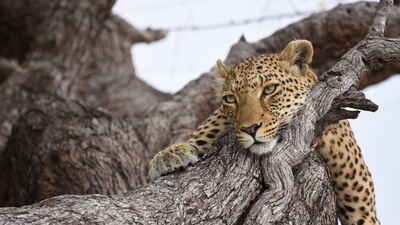

Where to see Leopard in Kenya
The leopard is not uncommon. The most numerous of Africa’s big cats, it occurs in all major conservation areas and across most habitats. Nonetheless, its grace and elusiveness make it a unique safari drawcard.
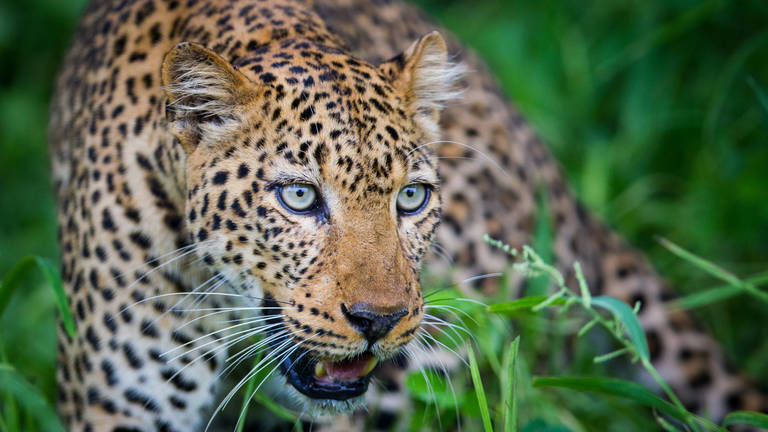
Quick facts about Leopard
The leopard is a powerful and versatile predator that varies greatly in size and habitat. It uses stealth and camouflage to ambush prey at close quarters, typically taking small to medium-sized antelopes, though everything from birds to young giraffes may make the menu. Most active at night, leopards are agile climbers and unique among big cats in using trees as ‘larders’ for prey. Key identification features include a long tail, usually curled at the white tip, and beautiful rosette patterning (unlike a cheetah’s solid spots). Males are around one-third larger than females, with a larger head and more jowly throat. Adults are largely solitary, though cubs may remain with their mothers for 18 months.
Range countries worldwide
Highest recorded altitude
Max. tail length
12–17 years
Average lifespan
The top camps for seeing leopard in Kenya
Based on 327 reports by our travellers since May 2018, visitors at these camps in Kenya have the best chances of sighting leopard.
Best chances to see
Good chances to see
Some sightings
No sightings yet
Top 10 camps for leopard
% of travellers who saw leopard
Where to see leopards in Africa
Leopards are widespread but good at hiding. By day, you may spy one in a tree. At dawn and dusk, they become more active on the ground. Night drives can be productive.
Top tips for viewing leopards
Leopards occur everywhere from mountains to rainforests but are best seen in savannah and woodland habitats. Highly territorial, they often show up repeatedly in the same area. Classic leopard country includes river loops with large trees and rocky kopjes surrounded by open bush. Even if invisible, a leopard’s presence is often betrayed by the alarm calls of prey, such as baboons, impala or even guinea-fowl. Be patient and you might get lucky. Certain locations, such as Zambia’s Luangwa Valley, are famed for leopard sightings. But all major conservation areas, from the Kalahari to the Maasai Mara , offer a chance, especially where guides know the habitats and whereabouts of individual cats. Night drives increase the chances further. Listen out after dark for the distinctive deep territorial call, which resembles the rasp of a saw.
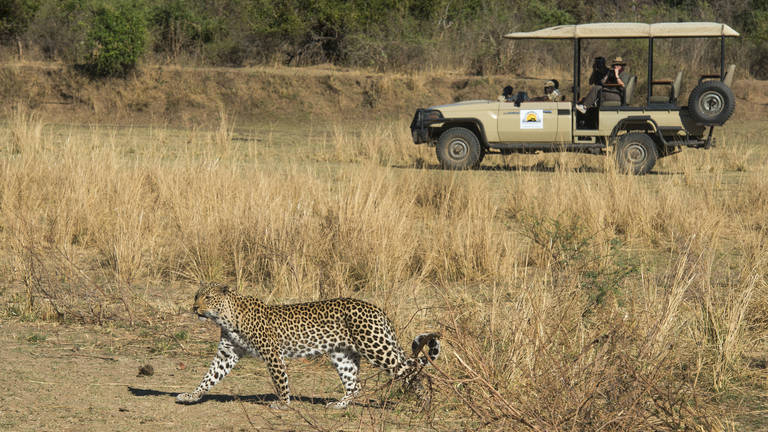
Our best Kenya holidays for leopard sightings
Based on our travellers' reports, these ideas for Kenya safaris are likely to give the best leopard sightings
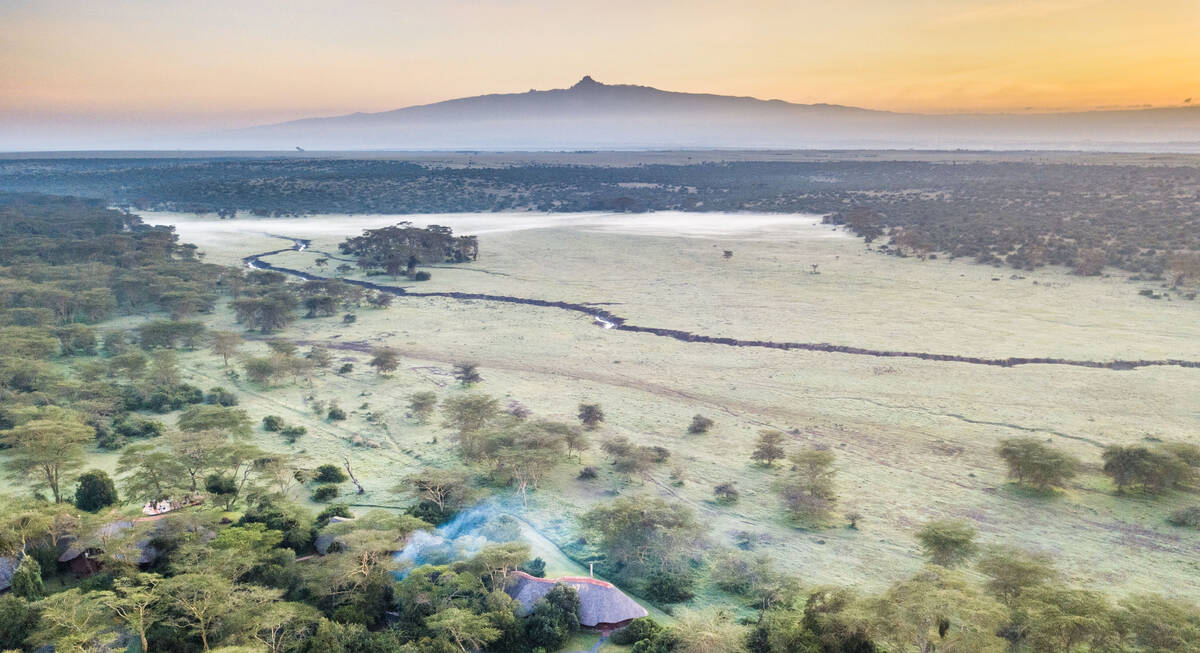
Rothschild Giraffe Safari
8 days • 3 locations NAIROBI AIRPORT TO NAIROBI AIRPORT
A example of a luxury Kenyan safari, starting at the iconic Giraffe Manor before fabulous stays on the spectacular Solio Reserve and Sala’s Camp in a remote corner of the Maasai Mara.
US$11,720 - US$16,510 per person
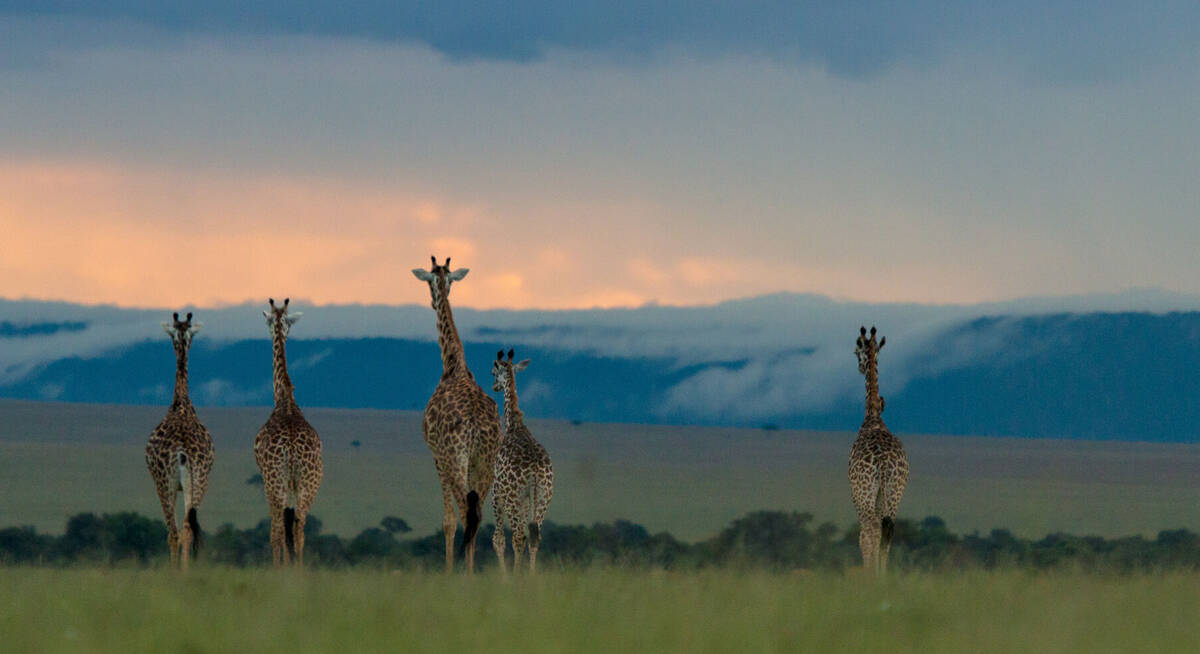
African Finfoot Fly-in Safari
7 days • 3 locations NAIROBI AIRPORT TO NAIROBI AIRPORT
After a unique start in Nairobi National Park, classic, luxurious camps combine for a high-end and exclusive safari in fantastic wildlife destinations.
US$9,900 - US$16,050 per person
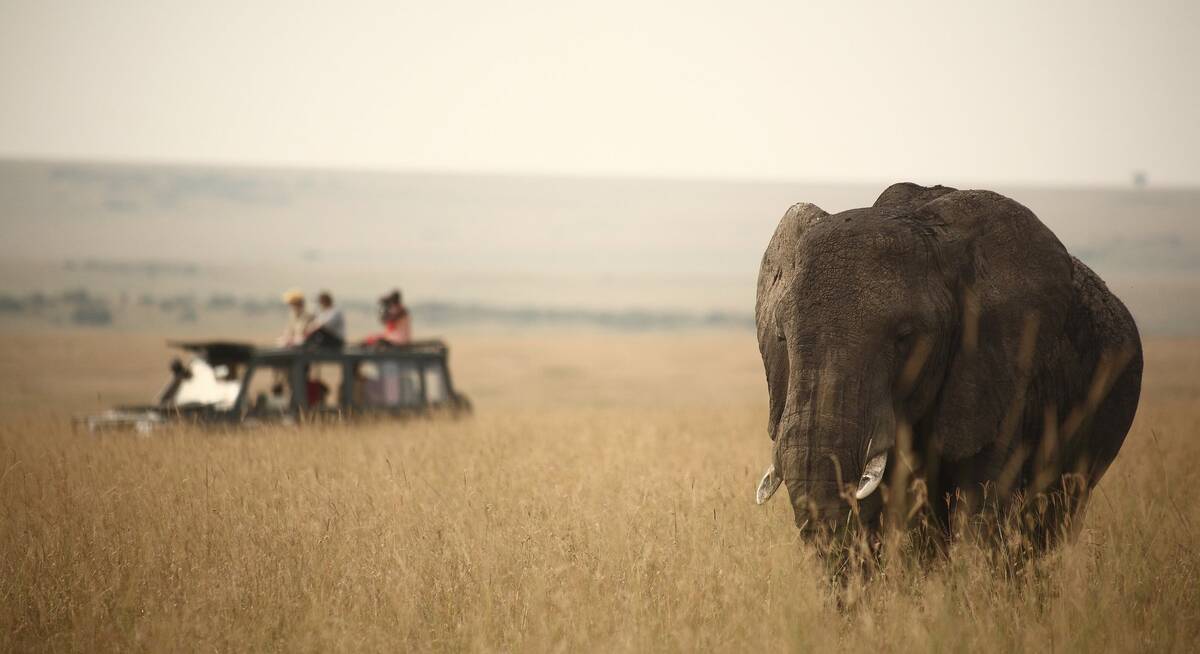
Martial Eagle Fly-in Safari
9 days • 3 locations NAIROBI AIRPORT TO KILIMANJARO AIRPORT
This stylish fly-in safari visits two of Africa’s most iconic parks, the Maasai Mara National Reserve in Kenya and Tanzania's Serengeti National Park.
US$12,590 - US$18,010 per person
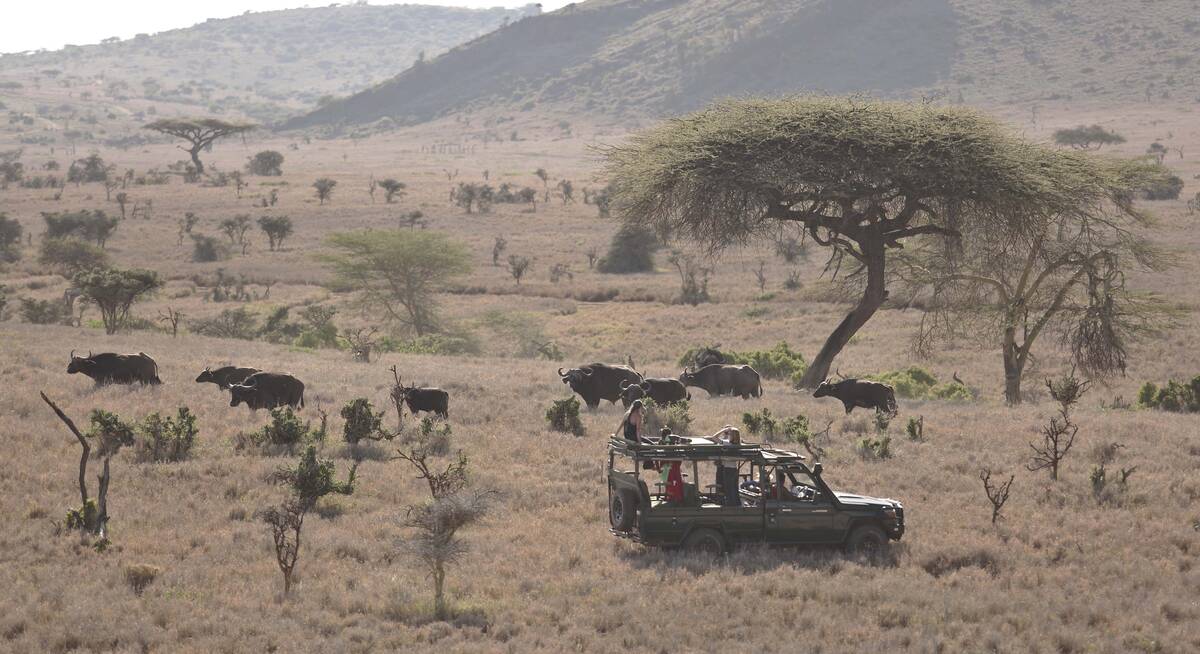
African Hawk-Eagle Fly-in Safari
7 days • 2 locations NAIROBI AIRPORT TO NAIROBI AIRPORT
Two luxurious camps provide relatively quiet game-viewing within Laikipia and the Mara ecosystem. Situated on private conservancies, both Lewa Wilderness and Naboisho offer the chance to sight all of the "Big 5" and to enjoy a range of safari activities.
US$7,780 - US$12,800 per person
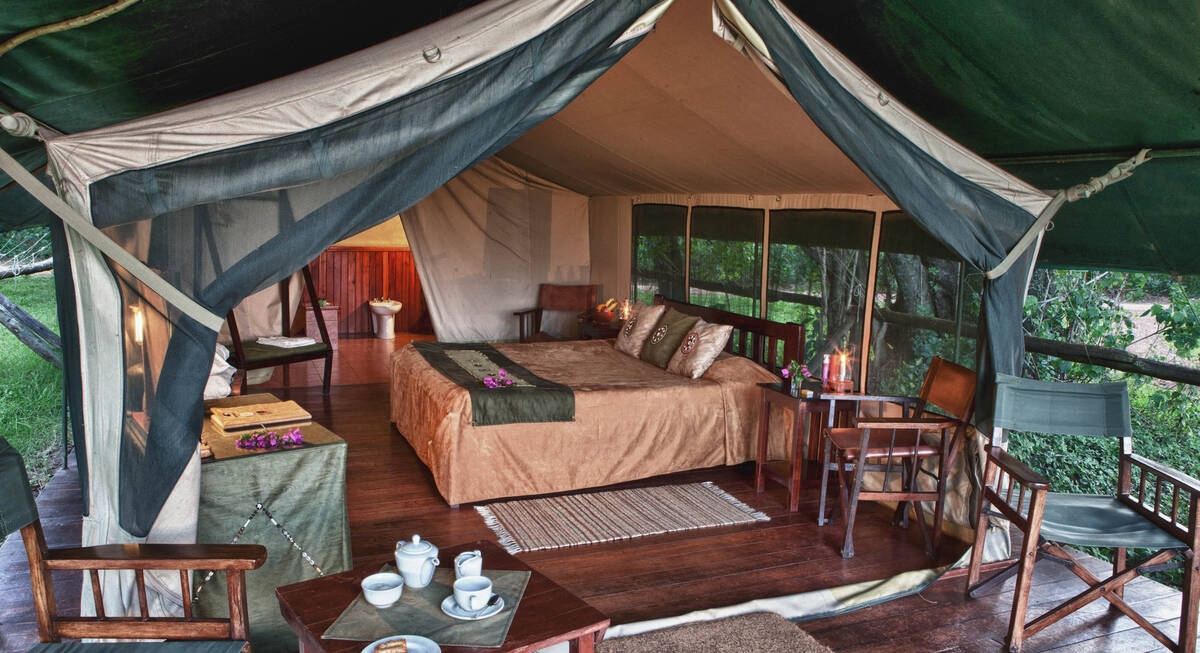
Steppe Eagle Fly-in Safari
Two comfortable tented camps overlooking the Ewaso Nyiro and Mara River put you at the heart of the action. Experience spectacular diversity in species and habitat with safari in Samburu and the Masaai Mara National Reserve.
US$5,680 - US$8,620 per person
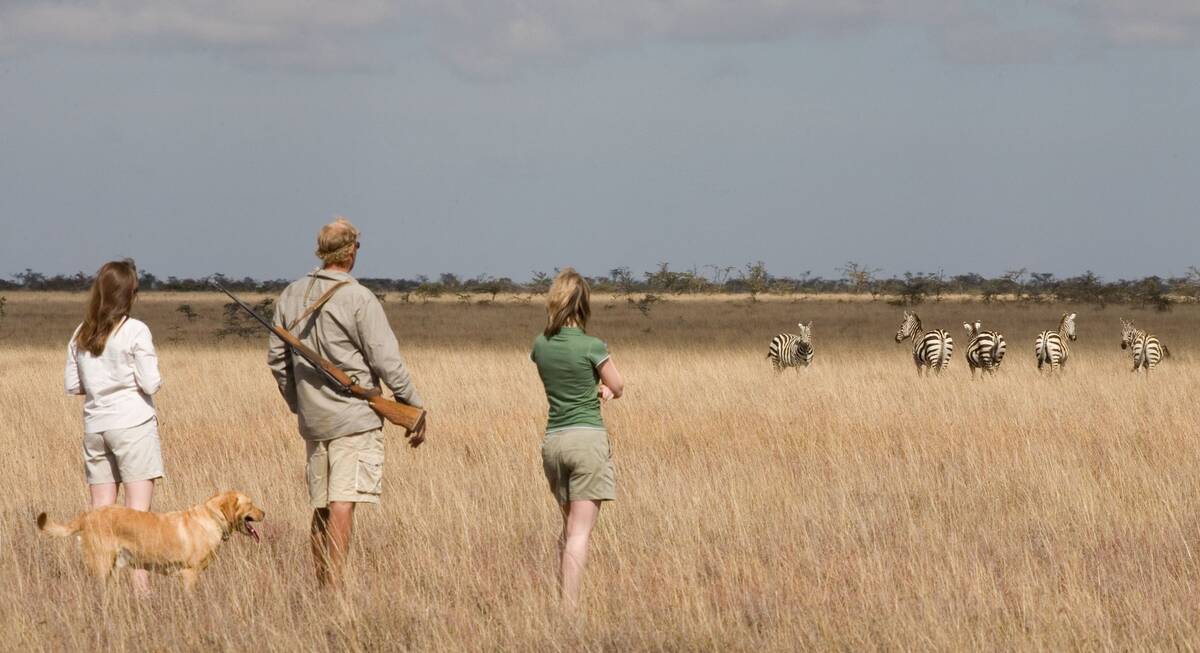
Hamerkop Fly-In Safari
8 days • 2 locations NAIROBI AIRPORT TO NAIROBI AIRPORT
Different wildlife, contrasting camps and a whole host of activities, this is a safari for those wanting to get out and about and not just sit in a vehicle.
US$6,350 - US$10,960 per person
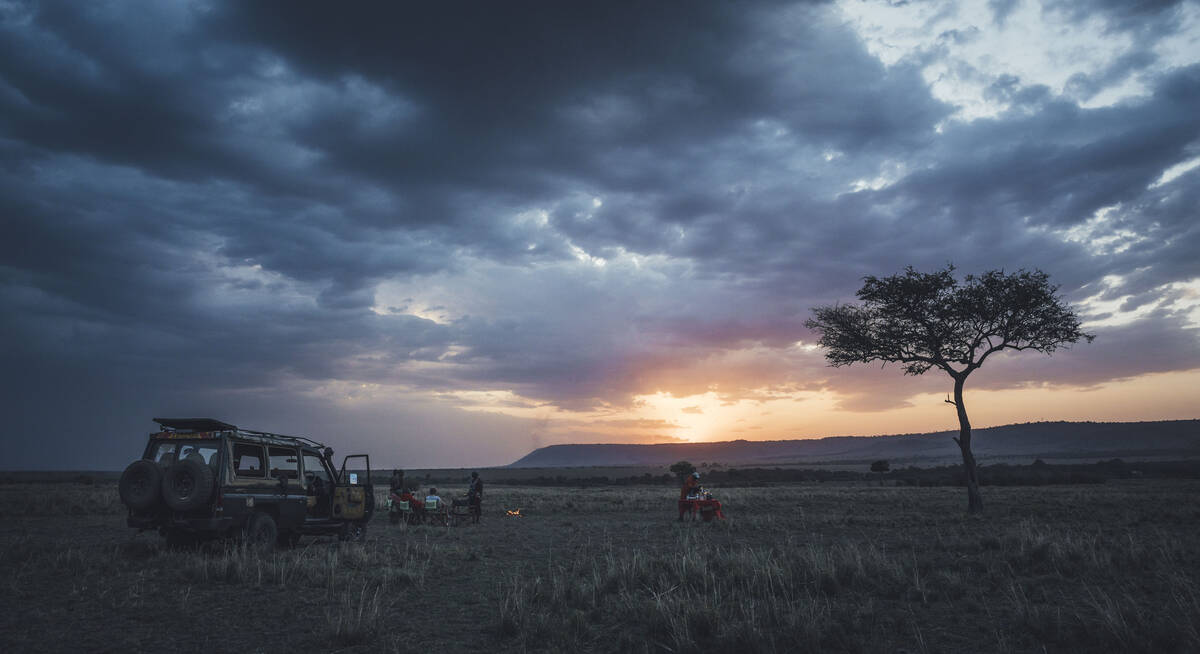
Greater Kudu Fly-In Safari
Experience a truly authentic bush experience on this safari at two classic tented camps, in Laikipia and the Maasai Mara. These are some of the best places to spot wild dogs and big cats.
US$7,170 - US$8,410 per person
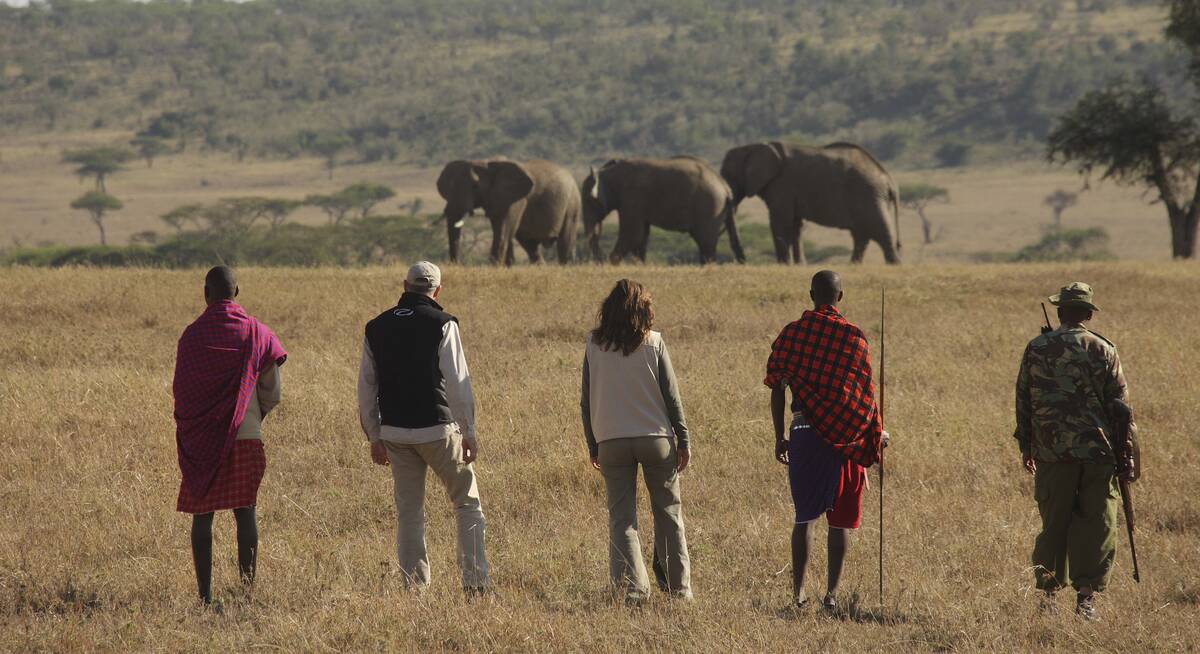
Striped Hyena Safari
5 days • 3 locations NAIROBI AIRPORT TO NAIROBI AIRPORT
Just one example of a possible itinerary for keen walkers, this safari enables you to experience the sounds and sights of the bush, and its wildlife, in an unusually direct way.
US$5,020 - US$6,470 per person
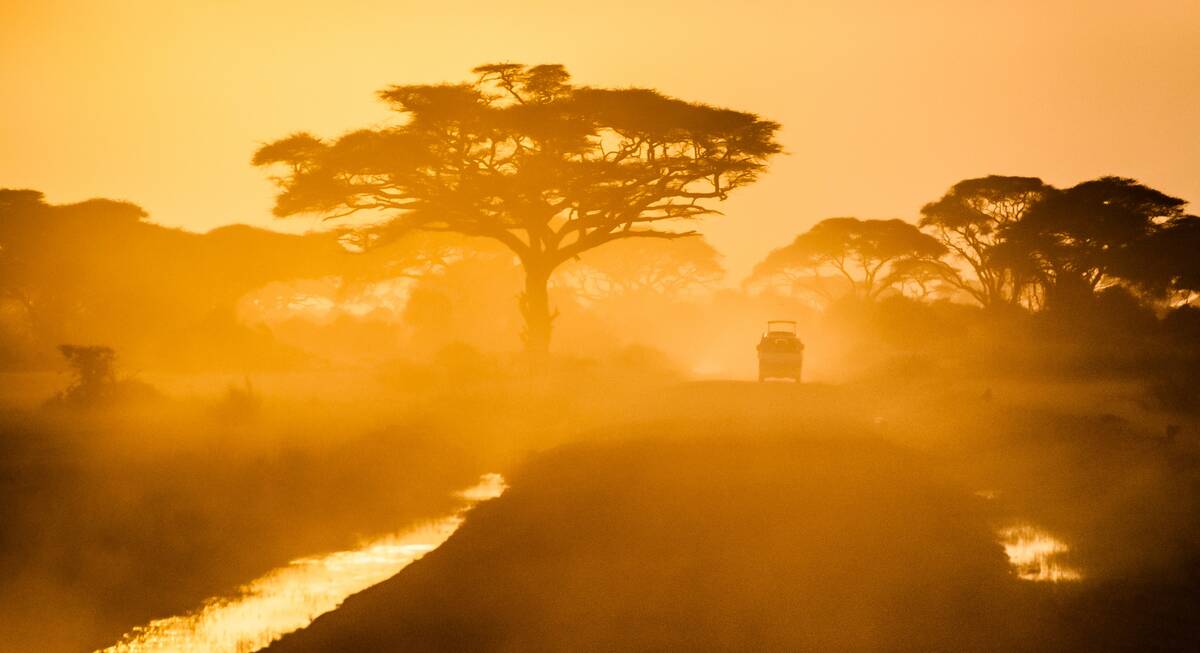
Tawny Eagle Fly-in Safari
Explore Laikipia and the Maasai Mara ecosystem with stays in the Ol Pejeta and Naboisho conservancies. Two smart yet authentically rustic bush camps provide a traditional safari experience, offering a high standard of guiding and excellent level of care.
US$5,820 - US$8,780 per person
View all holidays to Kenya
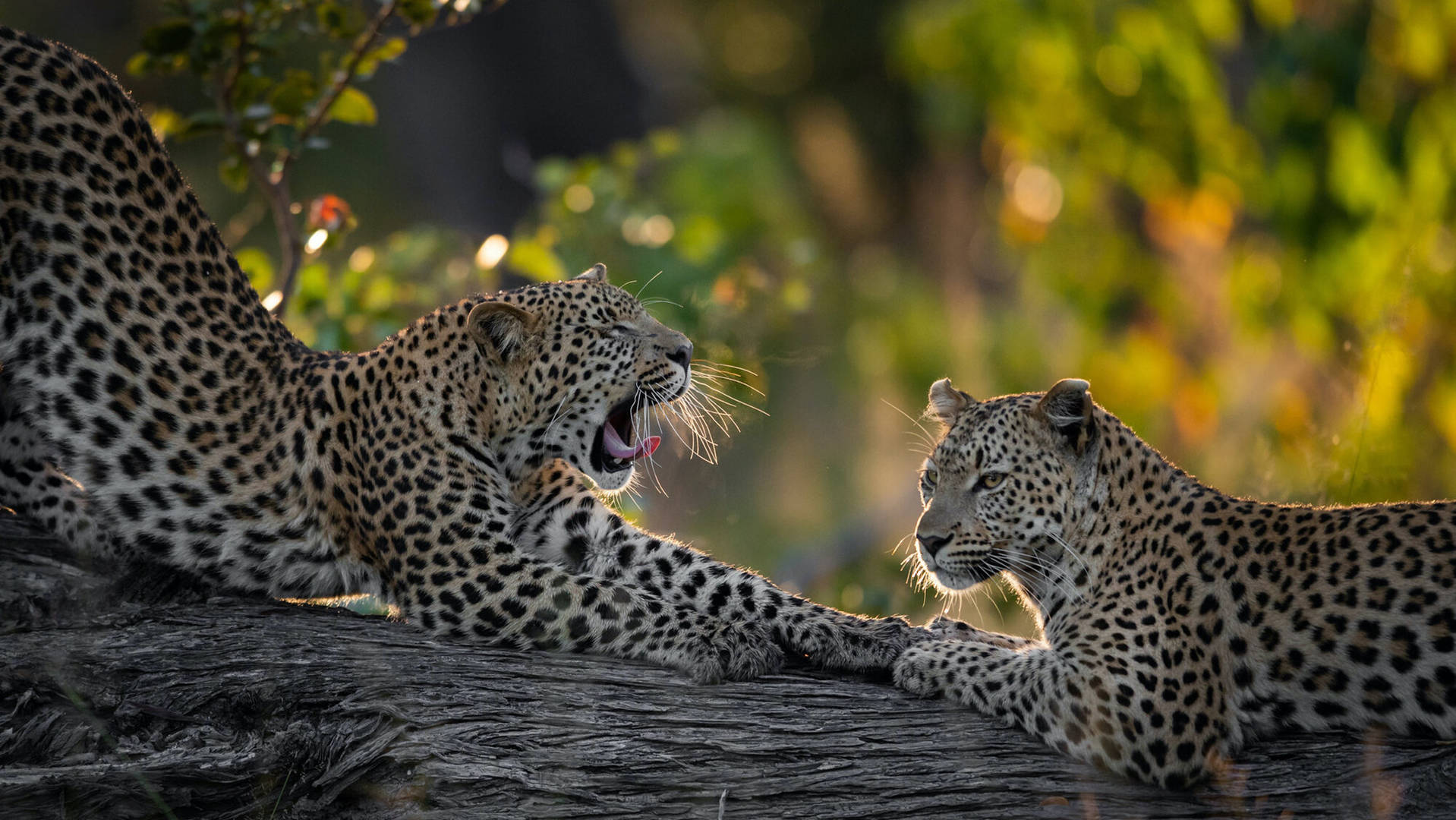
More information about leopard in our other destinations
Click here for detailed information about leopard in other countries, including the places for sighting leopard.
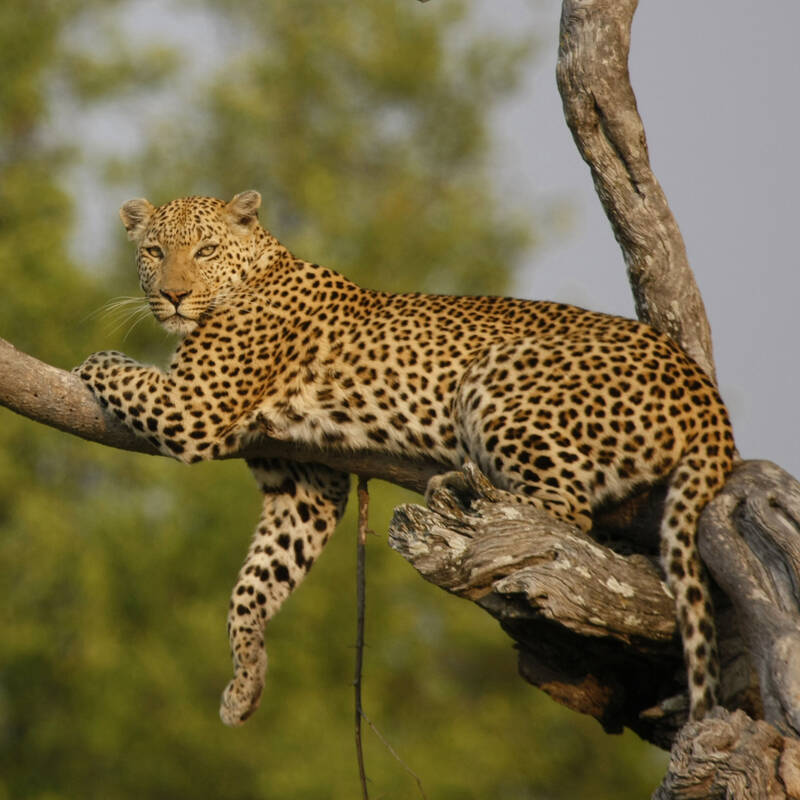
South Africa
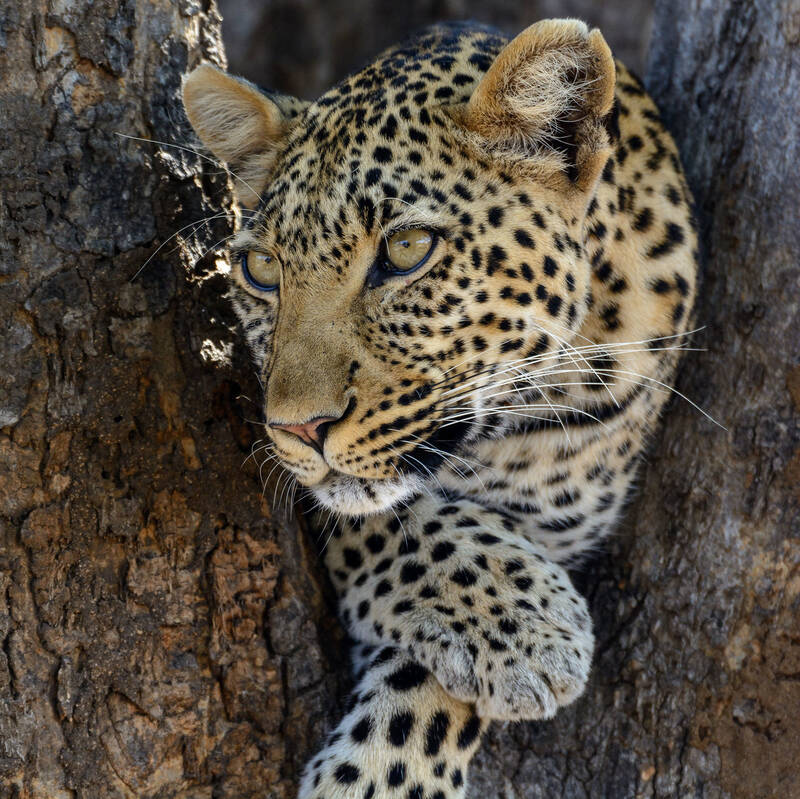
Login to Expert Africa
Sign in with password
Sign in with email link
New to Expert Africa? Create an account
Forgotten your details?
It's free & quick to set up
- Save your wish-list
- Send us an enquiry
- Pay online for your trip
- Subscribe to our newsletter
- Give us feedback on your trip
- Full site benefits of the site
Need some help? Talk to our team
- TALK TO AN EXPERT:
- +256740829909
- [email protected]

Best national parks to see leopards in Kenya
- Travel Blog
- Uganda Gorilla Safaris

Best national parks to see lions in Kenya

Filming in Kenya and safari photography trip

Best national parks to see leopards in Kenya. Kenya is one of the best places to see leopards in Africa. Here are the best national parks to see leopards in Kenya. Eco Adventure Safaris
Samburu National Reserve
Samburu National Reserve is located in the southern corner of Kenya in the rift valley; it is rich in game and many rare species. It is home to leopards making it one of the best places to film leopards in Kenya.
Maasai Mara National Reserve
The Mara is one of the finest wildlife destinations in the world one of the Best national parks to see leopards in Kenya. The reserve offers excellent chances of see leopards and other wildlife including the great migration which happens every year in July were over 1.5 million wildebeests along with large numbers of Zebras and Thompson’s gazelle, migrate from the Serengeti plains in Tanzania to search for fresh pastures in the Masai Mara before going back in October. You will have a chance to film lions and cheetahs as they hunt during the migration.
Tsavo National Park
Tsavo National Park is the largest National Park in Kenya one of the Best national parks to see leopards in Kenya it was established in 1948 and it is commonly known as the Theatre of the wild. The Park is divided into East and west intersected by the Nairobi to Mombasa railway and road. The park has interesting and diverse habitats home to leopards.
Amboseli National Park
Amboseli National park is surrounded by the Kilimanjaro Mountains; seeing leopards in this park will give you an opportunity to see other wildlife including large herds of Elephants with picture shoots having the beautiful backdrop of Kilimanjaro Mountain.
Ol Pejeta Conservancy
Situated at the foothills of Aberdares National Park and the snow capped Mt Kenya, Ol Pejeta Conservancy is home to leopards and the endangered black and white rhinos.
Among others locations to note where you can see Leopards in Kenya include Marsabit National Park, Nasolot National Park, Mwingi National Park, Kora National Park, Lewa Wildife Conservancy, Meru National Park, Mwea National Reserve, Bisanadi National Park and Simba Hills National Park among others.
Our Popular Kenya Safari packages that include sighting leopards
4 Days Kenya Wildebeest Migration Safari
5 Days Kenya Wildlife Safari
7 Days Best of Kenya Adventure Safari
8 Days Kenya and Tanzania Wildebeest Migration Safari
13 Days Combined Kenya and Tanzania Safari
How to book a safari to Kenya to see leopards?
Once you have your planned dates of travel confirmed we will need you to send us an email here so that we check for availability of services online once we confirm all services are available for your planned dates we will let you know so that we can send you a draft itinerary to start planning for your safari trip to Kenya. Once you confirm the itinerary we will send you an invoice for you to make a deposit, Once the payment is done and we have received it on our account we will go ahead and secure all services accordingly. It is advised to book your safari to Kenya in advance at least 2-3 months’ prior your visit especially if you are planning to travel in the peak season of June to October.
Kenya Tourist Visa Advice
You will need to purchase the tourist visa to get to Kenya. Many travelers prefer obtaining their visas before they come to Kenya this is the best option and you will be able to get the Kenya Tourist Visa online upon paying USD51.00 for Tourist Visa
Where to stay best for sighting leopards in Kenya
Lodge options to stay in where best to see leopards in Kenya range from Budget, mid-range to luxury options. You will choose what to stay in depending on your interests and budget. Contact us here for details.
What is the best time to see leopards in Kenya?
Sighting leopards in Kenya is done throughout the year and the best time is during the months of December to February and then June to October which is relatively drier than March to May and November this offers great sightings and easy shoots.
Why book with Eco Adventure Safaris your Safari to Kenya?
Eco Adventure Safaris is experienced in organizing amazing safari experiences to Kenya. We are also highly rated and reviewed on trip Advisor. We combine Kenya safaris with eco-friendly and unforgettable high-end adventure and wildlife safaris that help preserve biodiversity, conserve wildlife and uplift local communities, these include gorilla trekking, chimpanzee trekking, Big 5 safaris and game viewing, Mountain Hiking, Boat cruises excursions and Cultural encounters to give you a memorable and best African Safari experience including popular and great African safari destinations Tanzania, Kenya, Botswana and Namibia. Feel free to contact us about the Best national parks to see leopards in Kenya.
Related posts

How is Gorilla Trekking in Rushaga sector

How much money do I need to do a safari in Africa?

How is Gorilla Trekking in Ruhija sector?
How To Spend 3 Days In Masai Mara, The Safari Park From The Lion King
This Kenyan national park is one of the best places in the world to see lions, leopards, and cheetahs in the wild.
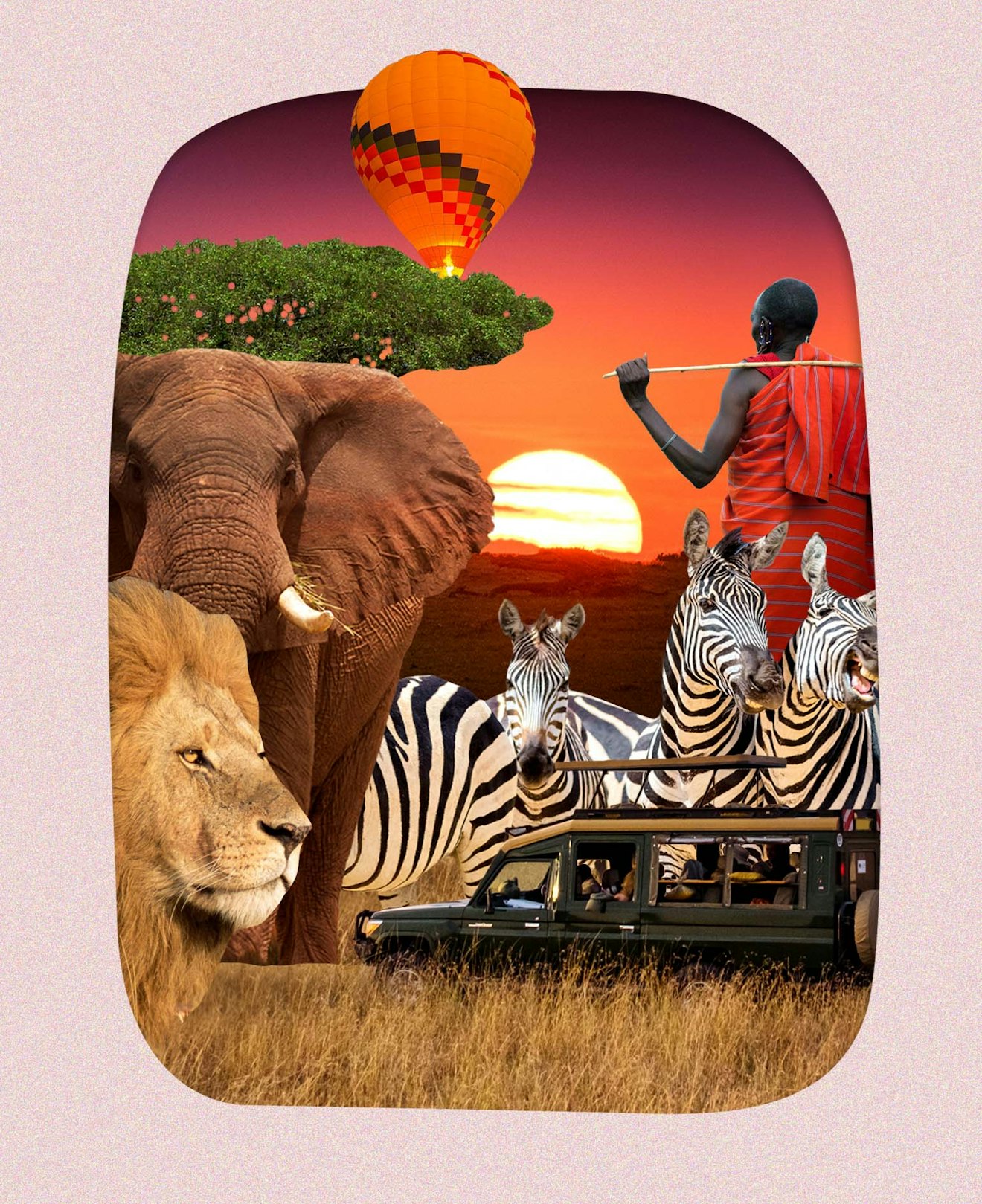
When it comes to planning an African safari , TikTok can agree on one thing: Masai Mara National Reserve in Kenya needs to be on your itinerary.
“The Land of the Big Cats” has a reputation as one of the best places on the continent to see lions, leopards, and cheetahs in the wild; it was one of the main filming locations of the live-action Lion King movie .
Masai Mara’s location in the Great Rift Valley gives it a leg up on wildlife diversity compared to other reserves. Its 580 miles of lush savannah is home to almost 90 different mammal species, and safari-goers have a good chance of spotting all of the African “Big Five” — lions, leopards, elephants, African buffalo, and the elusive black rhinos — as well as members of the slightly lesser-known (but equally ‘Gram-worthy) so-called “Ugly Five,” hyenas and warthogs included. If you visit in late summer, you might even see the Great Migration of over 2 million wildebeests, zebras, and other herbivores crossing the Mara River from the neighboring Serengeti Desert.
This February, I spent 10 days visiting Kenya’s national parks and game reserves on an itinerary curated by EF Ultimate Trip , a Gen Z and millennial tour company. After a week of bush glamping in sparsely vegetated and dusty parks throughout Kenya, Masai Mara was comparatively lush, and my safari Jeep was constantly stumbling upon families of elephants, giraffes, and lions.
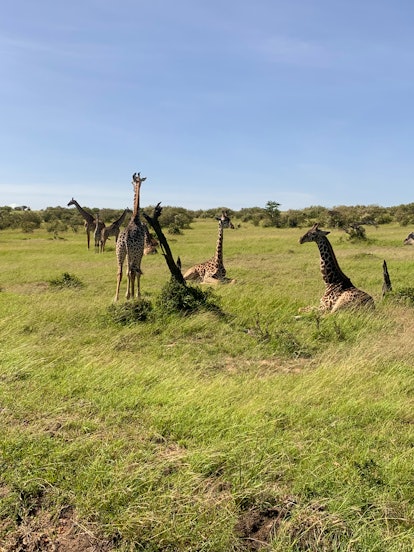
If you’re heading to Kenya on safari soon or scrolling TikTok for future inspiration , here’s what’s worth doing at Masai Mara and how to spend three days at the reserve.
What To Do At Masai Mara
Day 1: hang out with baby elephants & meet the maasai tribe.
After a 20-plus-hour journey from Chicago, I stretched my legs at one of Nairobi’s most popular attractions. The Sheldrick Wildlife Trust’s Orphans Project houses baby elephants and rhinos who are currently unable to survive in the wild for whatever reason, and it’s just as cute as you’d expect. There was a collective “aw” as the tiniest baby black rhino stumbled out to meet the crowd, and we got introduced to all the baby elephants as they clumsily ran to the keepers for their bottles of milk.
The experience was more crowded and touristy than I expected, but I enjoyed learning the story behind each baby animal, seeing their personalities, and petting them. You’re also able to sponsor one of the baby elephants or rhinos until they’re ready to go back into the wild.
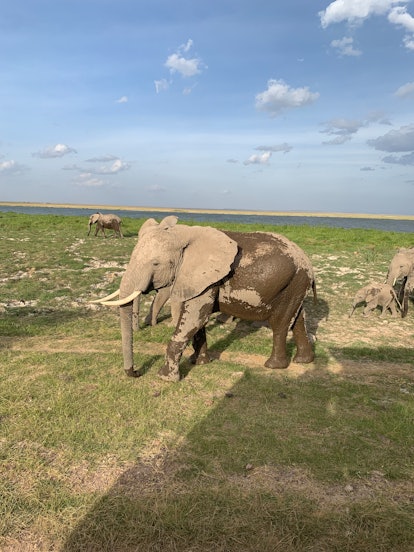
After hanging out with the animals, get into your safari Jeep to drive the five hours to Masai Mara. I stayed at PrideInn Mara Camp, which had glamping tents and cottages just steps from the park and Lake Talek, but there are plenty of accommodations around Masai Mara’s perimeter (including regular hotels like a JW Marriott Masai Mara if sleeping in a tent without air conditioning isn’t your vibe).
The best part of the PrideInn Mara Camp (and others in the area) is the presence of the Maasai tribe , which welcomed us with a traditional song and dance. There were also a number of warriors who worked in the hotel and who would walk us to and from our rooms if it was late at night.
Day 2: Take A Hot Air Balloon & A Drive
The park is huge, so soaring over the savannah to see the landscape and animals from above is an efficient and bucket list-worthy way to start off your safari experience.

We had to wake up at 4 a.m. to head over to the hot air balloon launch site, but I quickly stopped complaining about the early call time when we were in the balloon and the sun was rising over Masai Mara.
We got to take in bird's eye views of the Mara River (including a rare sighting of an adorable baby hippo that was splashing through it), check out a family of grazing giraffes from above, and get eye-level with the vultures in the trees. Afterward, we enjoyed an English-style brunch with unlimited mimosas in the middle of the bush, then headed back to the camp to nap it all off.

In the early afternoon, we headed on our second safari and stayed until twilight. After spending almost two weeks in Kenya, I realized it’s 100% worth doing two safari drives a day — one in the morning as the sun rises and one at dusk right before the predators are about to start hunting — to get the fullest picture of how the animals act in their natural habitat.
Depending on the time of day, you’ll also see different personalities from the lions. When I went in the morning, the lions weren’t the apex predators I’d anticipated. Instead, the pride was almost playful, with a young male lion with a dandelion mane nuzzling his father and the female lions, and cuddling with them in the sun. The only hint of their agility and quick reflexes were shown in how they quickly flipped from side to side and how alert they seemed at all times, with their heads suddenly popping above the grass when they’d been lazily napping in the sun just moments earlier.

Another day, as the sun went down, I saw a group of lionesses who’d been napping and were barely camouflaged in the long grass start to oh-so-casually make their move. They inched toward a grazing herd of wildebeests, their eyes locked on their next meal. I wouldn’t have experienced these different personalities if I hadn’t seen both in action.
Day 3: Go On A Morning Game Drive & Visit The Maasai Tribe
After going on a sunrise game drive, take an afternoon tour of the Maasai tribe’s village. Dressed in signature bright red robes, the warriors greeted us at the entrance of their village. They taught us some of their chants and performed a 10-minute celebratory song and dance that we were encouraged to take part in, which included mimicking the roaring of lions, shaking our shoulders, and competing to see who could jump the highest.
Then, they sectioned us off into groups to tour the family huts and learn about their pastoral lifestyle. Many of the Maasai people have gone into tourism and are employed by hotels and other hospitality businesses in the area, but they’re one of the few tribes where many members still practice their traditional way of life.

After the tour, we got to shop the tribe’s gorgeous beadwork, carved wooden products, and other souvenirs. I picked up a blue bracelet, a beaded choker, and some wooden coasters painted with safari animals to bring back home with me.
Ultimately, I came back to Chicago feeling relaxed, inspired, and fully ready to take advantage of my apartment’s air conditioning. I gained a deep appreciation for my proximity to wildlife during my bush glamping adventure (yes, even for the crickets and lizards in my tent).
Going on safari was life-changing for so many reasons. I was awestruck by seeing a 3-day-old hippo hanging out with his mom, and a pack of elephants racing across the savannah. I was surprised that the lions and giraffes seemed to barely take notice of our Jeep.
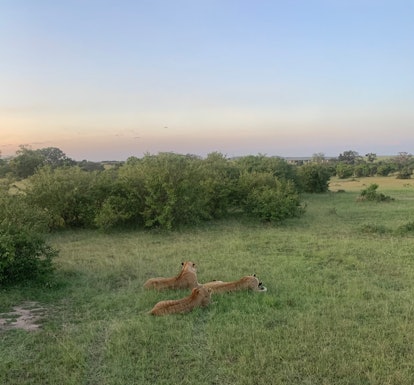
The safari also taught me a lesson in patience. Unlike in a zoo, you’re not able to control when or where you’ll see cheetahs, hippos, or prides of lions — which ends up making it so much more fulfilling when you do.
It’s not a question of if, but when, I’ll go back to Masai Mara on safari. And who knows — maybe this time I’ll spend more than a few days exploring Kenya’s most famous game reserve.
Five Zero Safaris
The black leopard safari in kenya, track and see an extremely rare beauty on the black leopard safari.
After years of rumours and exaggerated tales, there is finally a chance to see a wild Black Leopard! Also known as a Black Panther, this magnificent animal is bring seen on a regular basis, giving you a very realistic opportunity to see and photograph a wild Black Leopard.
Set in the foothills of Central Kenya, just a stones throw from Mount Kenya, you will head out every morning and afternoon in open safari vehicles in search of not just the Black Leopard, but a whole host of other incredible animals, including lions, elephants, buffalo and the always exciting African wild dogs. The savannah itself is quite fantastic, with thousands of acacia trees and interesting rocky outcrops creating a spectacular backdrop to an amazing safari. In amongst all the trees and rocks, around 350 species of birds can be seen, as well as the endangered greys zebra and reticulated giraffe. Each safari is exciting, as you never what you will see, and if it will be the safari where the living shadow reveals itself.
The female Black Leopard that we are all looking for is a young adult so she will hopefully be around for some time, but nature is unpredictable and there is no guarantee she will around forever. If seeing a Black Leopard in the wild is something you have ever dreamed about, or is anywhere on your bucket list, then you should not let this chance slip past you.
The accommodations welcome you into a relaxed and authentic bush camp vibe, and the staff do everything they can to help you out and give the best experience. As this is not (yet) on the main tourist route, you will get a taste of a more authentic Kenya.
The BlackLeopard Safari is fully customised – from group size to dates and duration. For those looking to extend your stay in India, we have several options to enhance your experience. Contact our safari specialists to help you plan your dream safari!
Contact us for more information.
Photos from previous safaris. Click to view at full-size.
Suggested itinerary for The Black Leopard Safari in Kenya
Upon your arrival at JKIA Airport, you will be met by a driver who will transfer you to Wilson Airport for your charter flight North into Kenya. This flight is about an hour and you fly over some breathtaking landscapes and mountains. After checking in and enjoying a quick lunch, you will head straight out on the afternoon safari in search of the Black Leopard.
Dinner awaits you on your return from the wilderness accompanied by ice cold drinks and good conversation.
An early morning wake up call gets your day started, and is closely followed by tea and coffee and a quick bite while everyone gets ready for safari. You will head out on the morning safari, which last around 3-hours, and will bring you back to a waiting breakfast.
After some well earned rest, lunch is served in the middle of the day.
The afternoon excursion again starts with tea and coffee and freshly baked cake before heading out into the savannah. Make sure you keep your eyes peeled for the other wonderful animals that inhabit this lovely landscape as well.
Drinks in the bar and dinner will finish off your day.
Depending on your International flights, you might have one last chance to see the Black Leopard on your final morning safari. When you return, enjoy a quick breakfast before boarding your flight back to Nairobi in time for your onward travels.
Highlights from The Black Leopard Safari in Kenya
Best time to go:.
This is a customized safari with flexible dates and can be enjoyed year round
7 nights / 8 days
Accommodation:
Bush camp - clean and comfortable
Start/End point:
Jomo Kenyatta International Airport, Nairobi, Kenya
Wildlife highlights:
Black Leopard, (Spotted) Leopard, Elephant, African Wild dogs, Lions
Package includes:
Full board Accommodation All scheduled safari activites All internal transfers All park fees and permits Drinks (except premium brands of alcohol) Laundry
A La Carte:
International flights Any items not listed in the 'Includes'
FiveZero Tip:
Camera equipment can be rented through FiveZero. For those looking to purchase or bring their own equipment, Kurt Jay Bertels , your photographic safari host, recommends the following equipment for The Black Leopard Safari in Kenya:
- If you would like to get that perfect shot, why not ask our professional photographer to guide you on this safari, and show you how! Make it a Photographic Safari!
- The longer you stay, the better your chances of seeing theBlack Leopard.
Be the first to know about new safaris and special offers:
- +254 754 351 908
- [email protected]

INTIMATE AUTHENTICITY
- Soroi Leopards Lair
An Intimate Safari Experience in Tsavo
Welcome to Soroi Leopards Lair, your gateway to an authentic and intimate African safari experience. Nestled within the heart of the Lumo Conservancy , close to the majestic Taita Hills and expansive Tsavo, our lodge promises a remarkable journey into the untamed wilderness of Kenya. Our intimate lodge on the same hill as the renowned Soroi Lions Bluff brings you closer to nature’s grandeur and the thrilling spectacle of African wildlife. Our humble enclave of only four en-suite rooms, designed with local materials and warm, earthy colors, ensures an intimate and personal experience. This boutique approach allows Soroi Leopards Lair to seamlessly blend with its surroundings, enhancing your connection with the unspoiled environment.
Treat yourself to an awe-inspiring vista across the vibrant Tsavo ecosystem from our spacious verandas. From the verdant Taita Hills to the distant silhouette of Mount Kilimanjaro and onto Mukamazi in Tanzania, the view is a breathtaking tapestry of Africa’s unique landscapes. Soroi Leopards Lair is designed for those who seek a safari experience that strikes the perfect balance between adventure and comfort without the need for extravagant luxury. Here, we offer exceptional value for money while ensuring that your wilderness escape is everything you dreamed it would be.
Experience the thrill of close encounters with leopards, the elegance of waking up to exotic birds chirping, the serenity of sunsets over African plains, and the mystery of night-time in the bush. All of these are enveloped in the warm and friendly hospitality Kenya is famous for. Welcome to Soroi Leopards Lair, where the magic of the African wilderness is always just a heartbeat away.
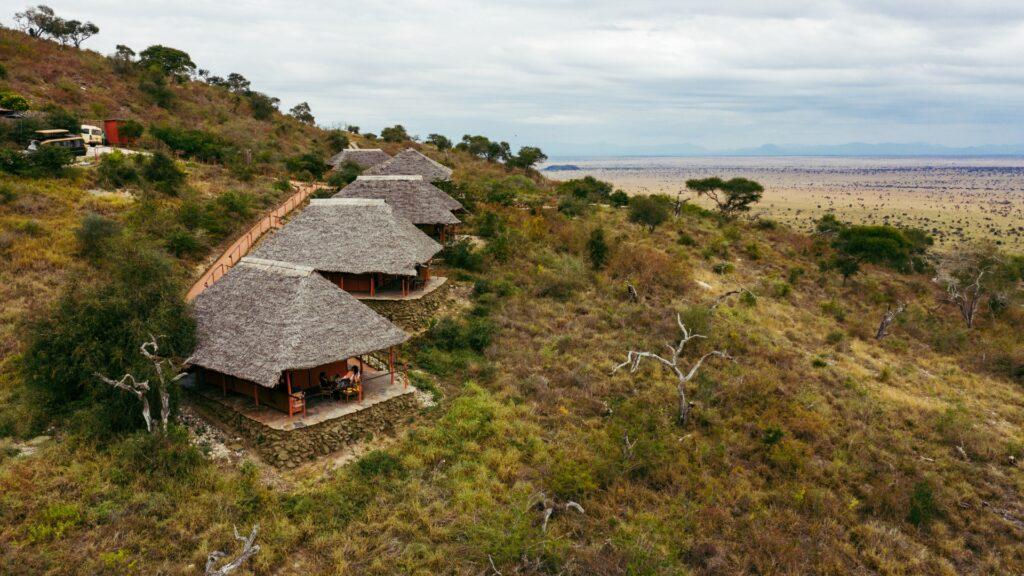
Discover your home away from home in the enchanting wilderness of Tsavo at Soroi Leopards Lair. Our cozy cottages, nestled in the vibrant Lumo landscape, epitomizes comfort and tranquility, offering an intimate and serene retreat after a day of thrilling safari adventures.
Each of our cottages has a king-size bed adorned with soft, plush duck feather duvets, promising a restful and refreshing sleep.
Awaken your senses each morning with a freshly brewed cup of coffee or tea prepared at your convenience using the in-room facilities. Our en-suite bathrooms, complete with indoor and outdoor showers, offer a refreshing sanctuary where you can revitalize your spirit under the vast African sky or in the privacy of your own space.
Stay connected to the world with complimentary Wi-Fi, accessible in all guest areas and rooms, and keep in touch with our team through the intercoms provided in all rooms and main areas.
Our cottages are designed to accommodate different needs, with two cottages comfortably housing two people and two intended for triples, providing flexibility and comfort for all our guests.
Experience the charm of Soroi Leopards Lair cottages – your sanctuary in the heart of the wilderness.
Boutique comforts
It's all in the details...
Amazing Views
Bask in panoramic views of Tsavo’s ecosystem, from the lush Taita Hills to the distant silhouette of Mount Kilimanjaro.
Spacious Varandas
Unwind on our expansive verandas, a serene spot for wildlife spotting or soaking in spectacular African sunsets.
Campfire Conversations
Gather round the campfire for enchanting tales under the stars, bonding with fellow adventurers in the heart of the wilderness.
HOW TO SPEND THE DAY
a Sneak Peak at our Activities
SAFARI. SAFARI. SAFARI.
Evening euphoria., wilderness feast., cultural visit., 3 steps to paradise.
Find your dates
Send you inquiry
- Soroi Mara Bush Camp
- Soroi Private Wing
- Soroi Luxury Migration Camp
- Soroi Lions Bluff Lodge
- Soroi Cheetah Tented Camp
- Soroi Larsens Camp
- Soroi Samburu Lodge
© Copyright Soroi Collection 2023 – www.soroi.com

- South Africa
Polar Regions
- Bwindi National Park
- Kruger National Park
- Lofoten Islands
- Okavango Delta
- Ranthambore NP
NATURE TOURS
- Archipelagos Tours
- Deserts & Shrubland
- Northern Lights
- Polar Scapes
Leisure Tours
- Beach Resorts
- Diving & snorkelling Tours
- Heritage Resorts
- Mountain Resorts
- Snow Activities
- Snow Resorts
- Water Activities
- Wellness Tours
Wildlife Resorts
Wildlife Tours
- Bear Tracking
- Big Cat Safaris
- Birding Tours
- Elephant Safaris
- Leopard Safaris
- Lion Safaris
- Tiger Safaris
- Unique Wildlife
- Wildlife Cruises
- Wildlife Safaris
Cultural Tours
- Architecture
- Art & Crafts
- City Trails
- Culinary Tours
- Fairs & Festivals
- Fort & Palaces
- Monuments & Museums
- Palaces of Worship
- Tribals Interactions
Village Visits
Type of Journey
- Deep ocean Adventures
- Exploration Journeys
- Luxury Tours
- Friends & family Tours
- Rares species Tours
- Romance Tours
- Photography Tours
- Trekking Expeditions
TOP EXPERIENCES
- Big Cat Journeys
- Fairs & Festivals
- Heritage Stays
- Polar Journeys
- View all Itineraries
- View all Fixed Departure
- +1-646-583-2666
- Guest Login
- Agent Login
- Type of journeys
- Refer a friend
- Be an agent
- Holiday finder
- Image Gallery
- Video Gallery
- Guest Reviews
- In the media
Top Experiences
Top destinations.
- Kruger national park
- Ranthambore
- Serengeti National Park
Type Of Journey
- Rare species Tours
- Itineraries
Big Five Kenya Jungle Safari

No. of days
Activity level, experiences.
January to December
Trip Highlights
More details, places you will visit, similar itineraries.
Request free consultation
Our travel experience designers will reach out for consultation. By submitting, you confirm that you agree to our privacy policy .
When planning a Kenya Jungle Safari, you are likely to come across the renowned Big Five animals that are a must-see. The Big Five, including lions, leopards, elephants, African buffalo, and rhinoceros, are the classic wildlife sightings during a safari adventure. Opting for Big Five Kenya safaris is a top-notch choice.
Kenya stands as a dream destination for enthusiasts of nature, wildlife, and photography. The journey starts in the bustling capital city of Nairobi, where urban life seamlessly blends with lush greenery. Get ready to witness some of the world’s most awe-inspiring marvels—four national parks await your exploration, offering glimpses of majestic creatures like lions, elephants, hippos, giraffes, wildebeests, zebras, flamingoes , and potentially even cheetahs, along with a diverse array of bird species.
- Take in the gorgeous landscape and relish the wildlife of the savannahs during your Kenya trip.
- Watch the big cats in their natural habitats hunting big game against the stunning backdrop of the savannah.
- Witness the Big Five—lions, leopards, African elephants, African buffalo, and rhinoceroses.
- See other members of the Kenyan ecosystem, such as giraffes, zebras, wildebeests, gazelles, flamingos, kingfishers, storks, ostriches, and eagles.
- Get a stunning view of Mount Kilimanjaro from Amboseli.
- Spend time watching flamingoes and rhinos in Nakuru and take a cruise on Lake Naivasha.
- Get a unique perspective and in-depth knowledge of the Kenyan ecosystem from expert guides.
- Enjoy various activities like safaris, trekking, water safaris, game drives, and more.
ITINERARY - 10 Days
Begin your unforgettable Kenya Jungle Safaris with Wild Voyager, a journey filled with exciting activities like game drives, boat safaris, bird-watching, sailing close to the hippos, hiking, and even bicycle safaris. These are designed to involve you in the heart of Kenya’s breathtaking wilderness. Every moment promises an amazing connection with nature.
The final leg of the tour is the perfect finish for your Kenya trip—the Masai Mara—the most sought-after safari destination in the world, rich in wildlife and biodiversity. You will get a chance to view the stunning beauty and vastness of the savannahs. To spot the Big Five animals , the Kenya jungle is the best safari destination.
These Big Five animals are only found in 11 countries, all belonging to the African continent. Witnessing them in their natural habitats is one of the iconic experiences during your trip. Each of the Big Five animals in the group is part of the charismatic megafauna. It refers to animal species that are large and often have widespread popular appeal. During an African safari, the Big Five are the most well-known among avid safari-goers.
The term ‘Big Five’ was first coined in the late 1800s during Africa’s colonial period. The Big Five refers to those animals that were considered the most challenging and dangerous to encounter during a safari.
However, the safari of the colonial period wasn’t anything like it is today. During those times, the safari was undertaken by trophy hunters to kill animals on foot. So, big game hunters killed the Big Five animals and they classified them as the most difficult animals to hunt. Fortunately, at present, the Big Five Kenya jungle safaris involve shooting these animals but only with cameras.
The Big Five group can be spotted around Africa, from Botswana’s Okavango Delta to Kruger National Park of South Africa and even Namibia’s Etosha National Park. But the Big Five are best witnessed in Kenya jungle safari , also home to Mount Kenya – the second-highest peak on the continent.
Along with the Big Five, travellers also have the opportunity to see other members of the Kenyan ecosystem. These include zebras, gazelles, wildebeest, giraffes, hyenas, cheetahs, and endangered species like African wild dogs and Jackson’s hartebeest.
Tracking elusive leopards, admiring black rhinos from afar, seeing herds of elephants bathing, and witnessing head-strong fights between buffalos and lion pride are just some experiences that can be seen and felt during a Big Five African safari.
With its wealth of wildlife, dramatic sceneries, and beautiful cultures, the Big Five Kenya jungle safaris are one of the most popular vacation itineraries.
Icons of the Savannah: A Quick Glimpse into Big Five Kenya Safari
The Big Five group consists of five different animal species. Each is special and iconic on its own. Here is a brief introduction to the Big Five found in Kenya.
African bush elephant
The African bush elephant is a large mammal with thick, almost hairless skin and a long yet flexible trunk. It is the largest mammal in the world and the biggest of the three elephant species. Despite their gigantic size, they can hide well in tall grass.
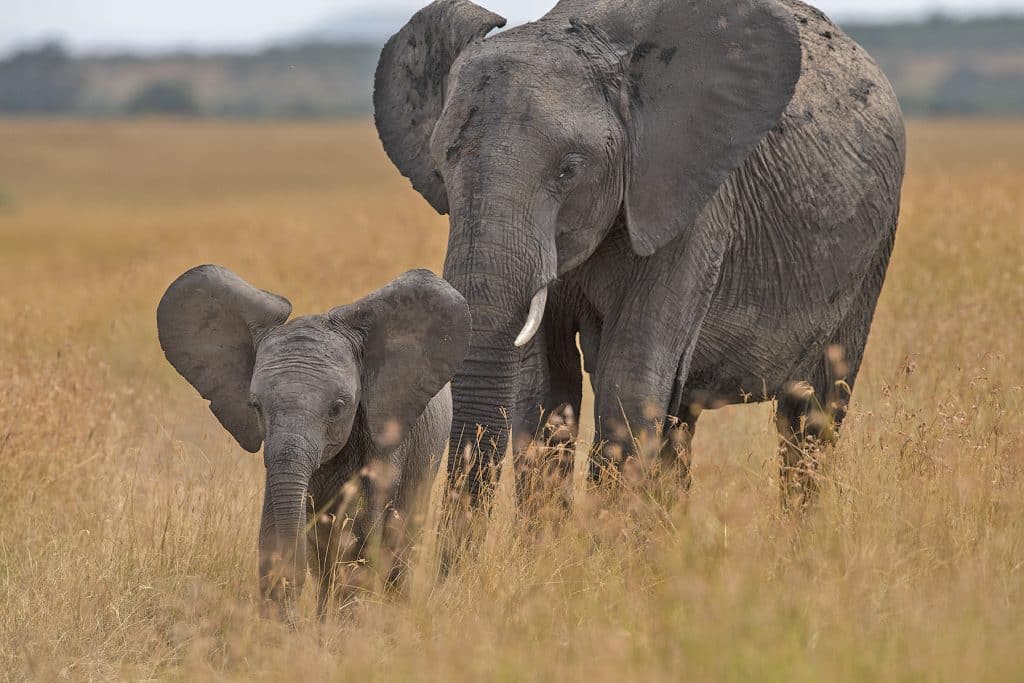
African elephants live longer than any other mammal except humans, approximately 70 years. Elephant herds are led by a matriarch – the eldest female of the group.
The African lion is one of the most social among all cat species. They are also the only cats that live in large family groups called pride. They enjoy the title of ‘King of the Jungle’ as lions are considered to be the fiercest and most dangerous predators on land. They use ambush and stalking techniques to hunt most of the herbivores’ animals.
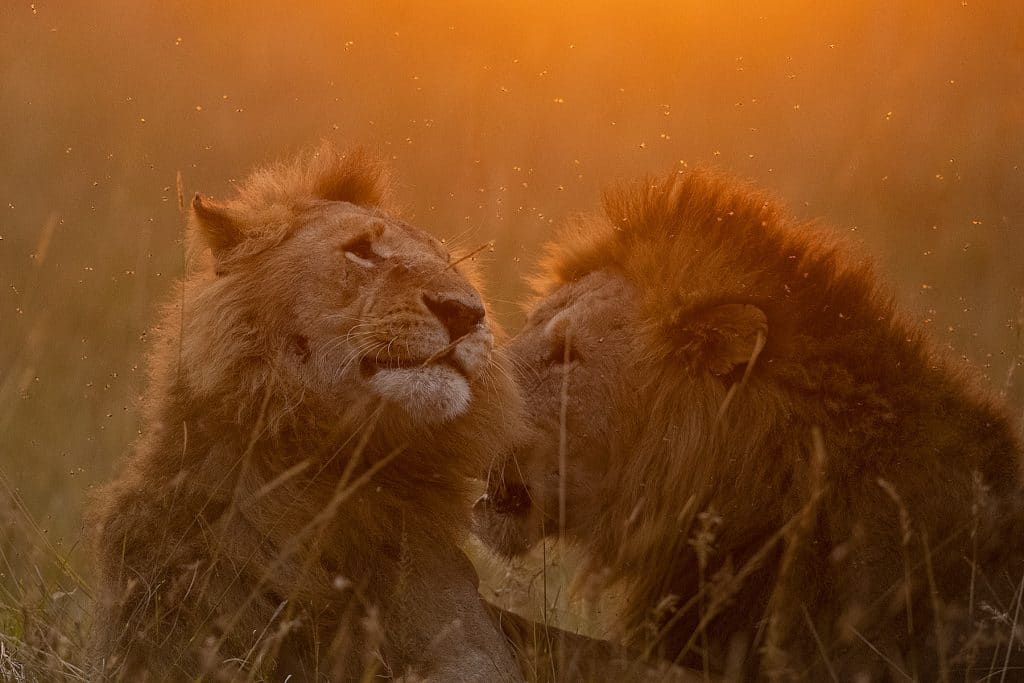
Males are distinguished from females with their big size and shaggy manes. These manes also frighten rivals, protect their throat from attacks, and attract females.
Lions are the most famous of the Big Five animals, and Kenya is home to some of the largest and most well-known pride in Africa. The Maasai Mara Reserve is particularly famous for its lion sightings, and visitors can often see lions lounging in the grass or hunting for prey.
Lions are social animals and live in groups called pride, which are usually led by a dominant male. They are also skilled hunters and can take down prey much larger than themselves, making them a fearsome predator.
The African leopard is one of the graceful yet ferocious hunters. They are closely related to jaguars, lions, and tigers. They are also one of the most elusive and hunt during the night.
The best time to spot leopards is early in the morning or at night. During the daytime, they are particularly camouflaged behind a tree or in the undergrowth.
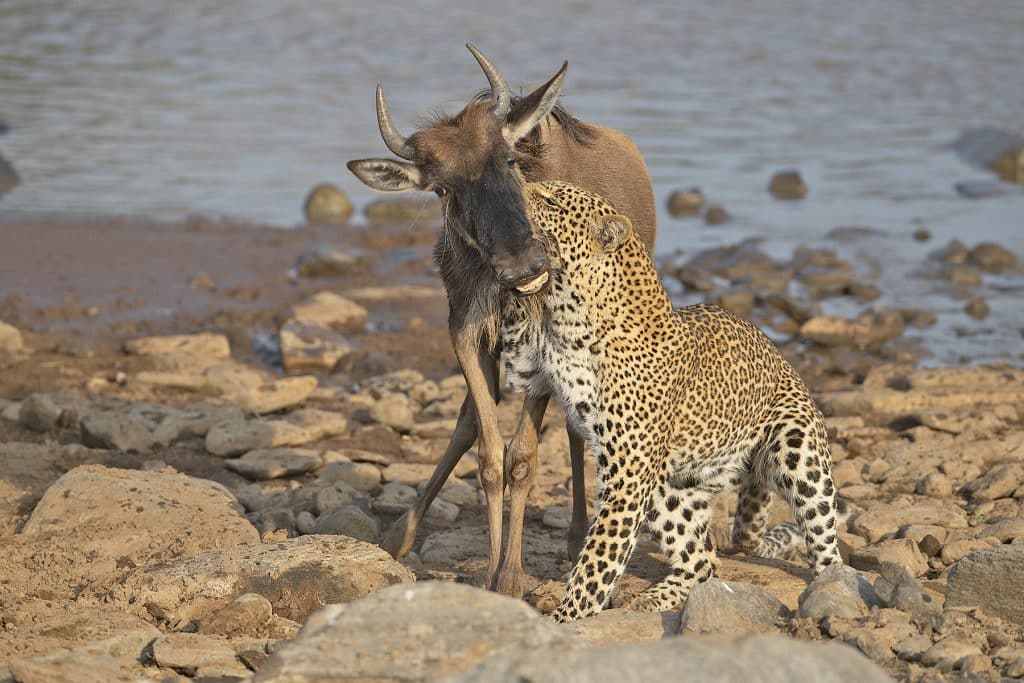
Leopards are the smallest species of the big cat family. However, they are known for their sharp hunting skills and astounding strength. A leopard’s distinctive spots are known as rosettes as they resemble the shape of a rose.
Leopards are one of the most elusive of the Big Five animals and are often difficult to spot in the wild. However, they are also one of the most beautiful and adaptable animals in Africa, with their distinctive spotted coats and powerful hunting skills.
Leopards are solitary and nocturnal, making them challenging to find during the day. However, visitors on a Big Five Kenya Jungle safari may have the opportunity to see leopards resting in trees or stalking prey in the early morning or late afternoon.
Cape buffalo are regarded as the most dangerous of all Big Five animals when encountered during Kenya jungle adventure safaris . They are large, strong, and have an intimidating set of horns.
These animals are overly protective of their territory and feel threatened when someone disturbs them. They are known to charge with aggressive speed.
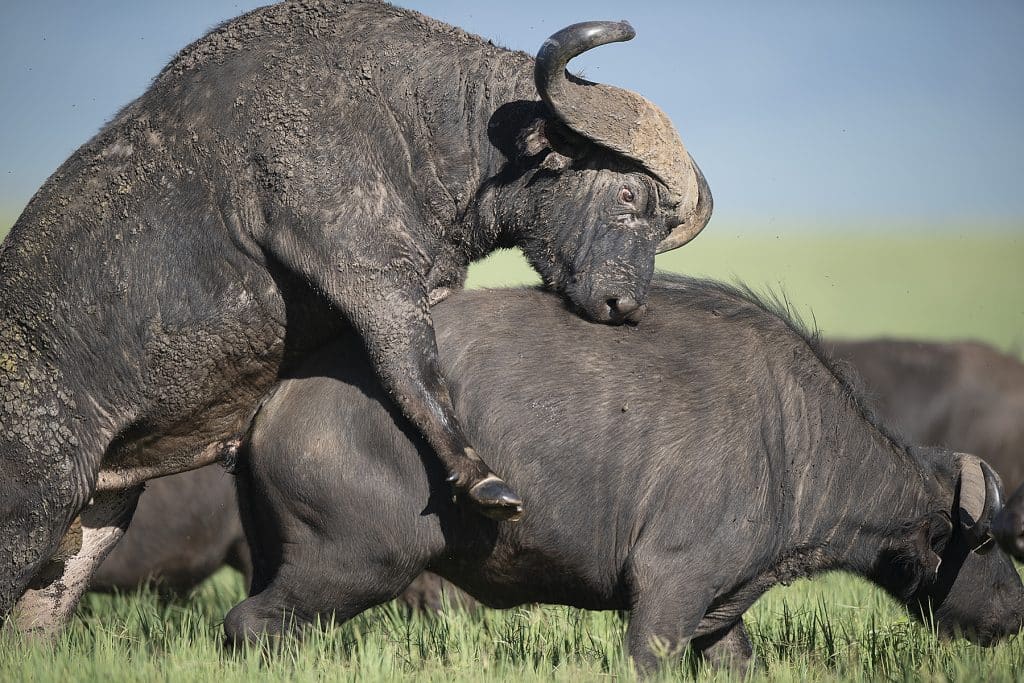
Buffalos are mostly found in huddled groups and herds. They spend most of their time grazing in floodplains and savannahs.
African buffalos are one of the favorite prey for lions. Nonetheless, due to their sharp thorns, strong hooves, and formidable defenses, they pose a massive danger to the lion and even cause serious damage. Watching real-time fights between these two is one of the highlights of a Big Five Kenya jungle safari .
African buffalos are large, powerful animals that can weigh up to 1,500 pounds. They are known for their large, curved horns and their tough, thick hides, which make them a formidable opponent for predators.
Buffalos are herbivores and graze on grasses and other vegetation, and they are often found in large herds. Visitors on Big Five Kenya safaris may see these impressive animals grazing in the grasslands or drinking from a waterhole.
Rhinoceros are an endangered species. Today, as a result of persistent conversation across various African regions, black rhinos have a current population of more than 5000.
It is a rare Big Five to see on a Kenya jungle safari and witnessing them from a distance is an extremely special venture.
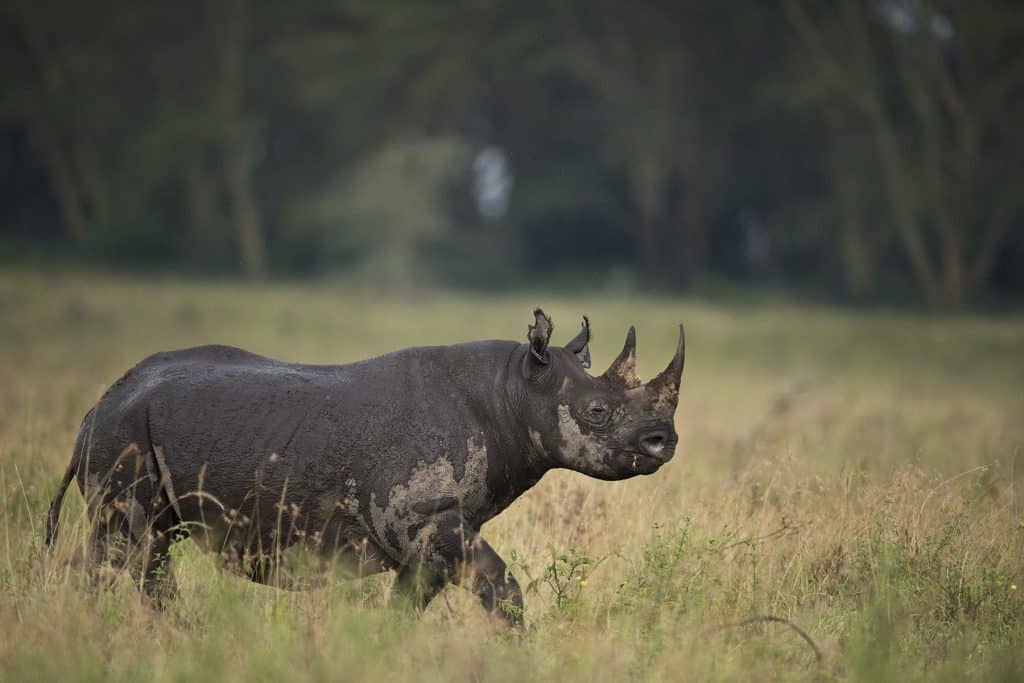
Black rhinos have hooked lips while white rhinos have a square lip. Black rhinos have two horns, occasionally a third as well, known as the small posterior horn. Both species of rhinoceros weigh at least 5000 pounds individually and their horns grow up to five feet long.
There are two species of rhinoceros in Kenya: the black rhino and the white rhino. Both species are critically endangered due to poaching and habitat loss. Rhinos are large, heavily built animals that can weigh up to 5,000 pounds.
They are known for their distinctive horns, which are made of keratin, the same material as human hair and nails. Visitors during Big Five Kenya safaris may have the opportunity to see rhinos grazing in the grasslands or resting in the shade.
Where to encounter the Big Five during your Kenya Jungle Safari
Spotting these animals is not limited to just one national park or reserve in Kenya. There are various regions where travellers can enjoy witnessing Big Five during Kenya jungle safari s. Experienced guides and rangers combined with world-class game reserves make up for a once-in-a-lifetime vacation. Here are some places to spot the Big Five animals:
Masai Mara National Park
Among all the places in Kenya , Masai Mara is the most famous jungle safari destination. It is home to the famous wildebeest migration . Other than that, the Mara is characterized by its abundance of wildlife and classic savannah views. The Masai Mara houses the Big Five African animals along with families of hippos and topi.
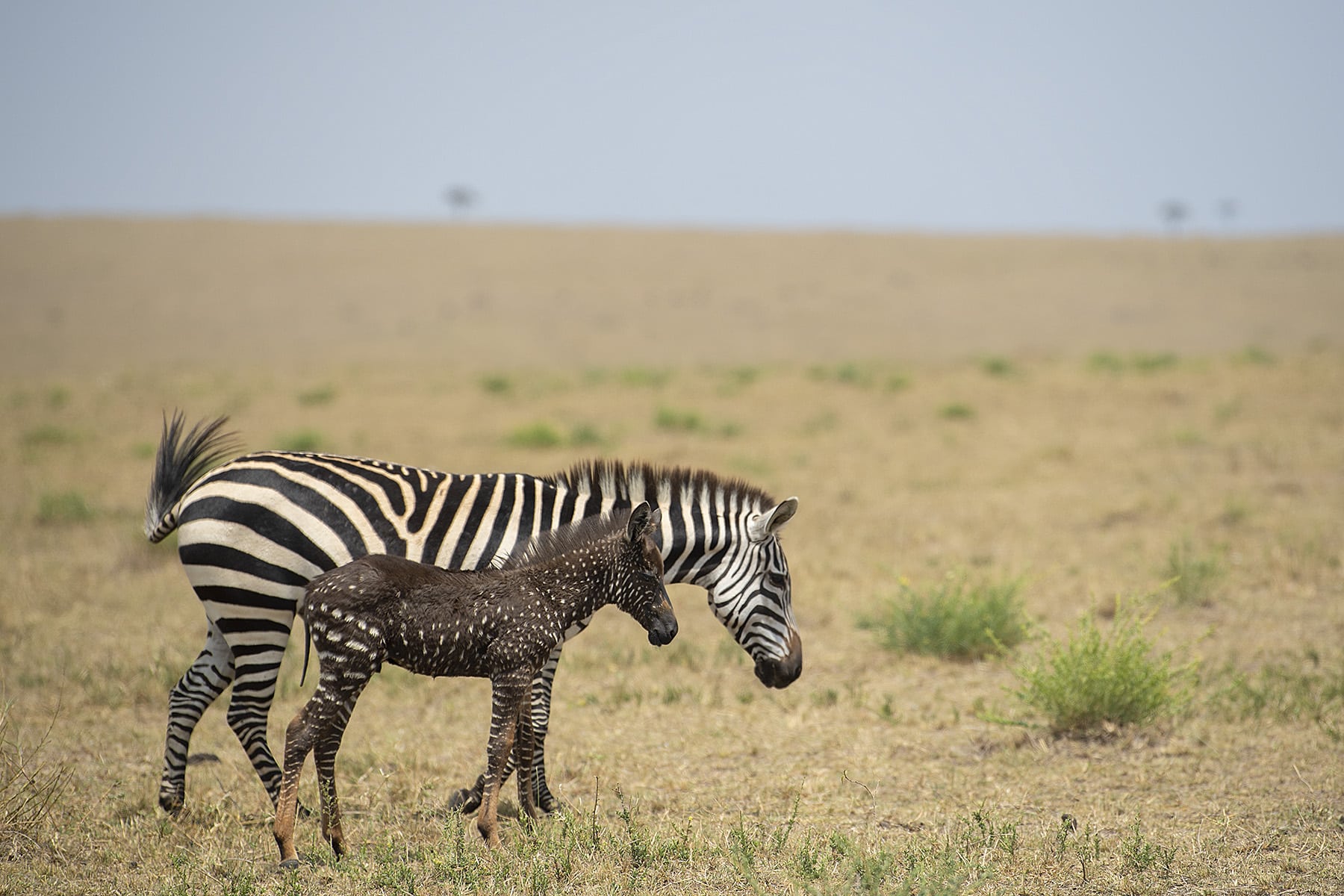
Since the park has no fences, game drives become even more adventurous and exciting. Travelers can safely spot these animals while being accompanied by guides. The park is the ideal location to enjoy walking safaris, hot air balloon rides, and bush picnics.
Tsavo National Park
The Tsavo East and West National Park are perfect for wild and exciting adventures. The Big Five sightings are always anticipated in this national park. Particularly, Tsavo West displays elephants sand bathing in red dust. This region is also an outstanding protected area in Kenya.
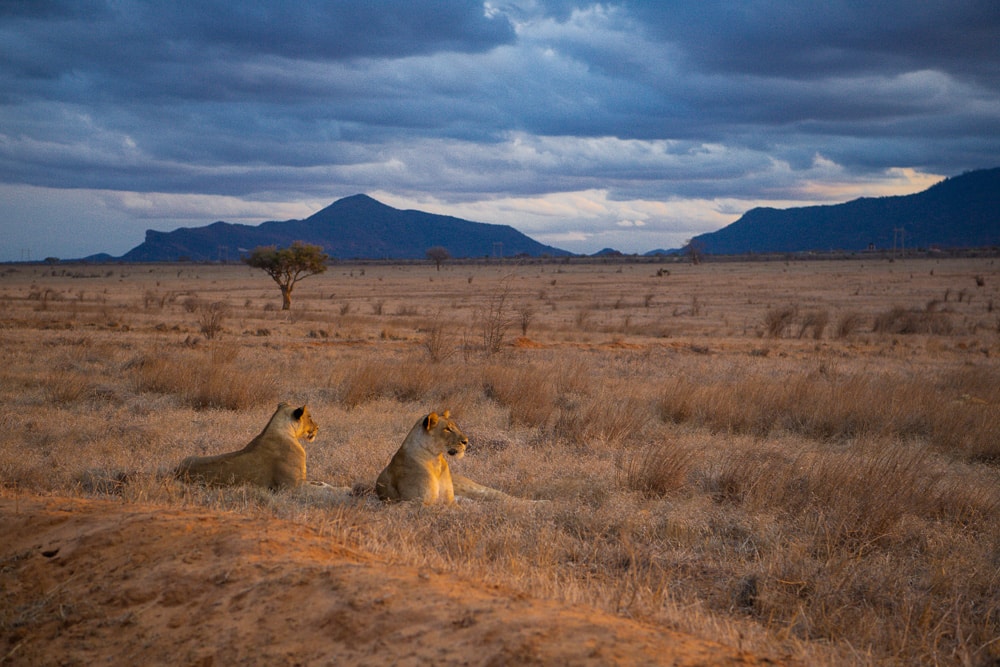
The park is dominated by various habitats. It is host to a wide range of animals and more than 500 species of birds. Being one of the oldest yet largest national parks in the county, it offers exciting tours in Kenya. Tsavo is also a lesser-known park. In Tsavo, you can enjoy Big Five sightings while being away from much of the tourist crowd.
Amboseli National Park
Amboseli is one of the popular parks, famed for showcasing aesthetic views of elephants traversing against the backdrop of magnificent Mount Kilimanjaro . The park is known as the ‘Land of Giants’ due to the large herd of elephants that roam the savannah. The Big Five in Amboseli is particularly famous for spot in their scenic habitats.
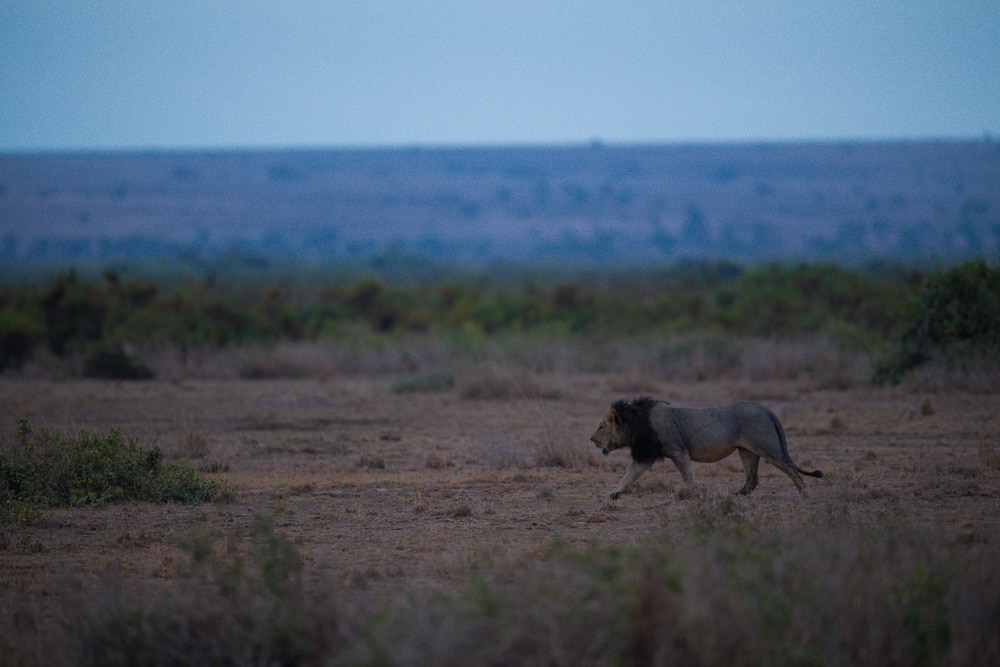
The unobstructed views of Amboseli allow for year-round wildlife viewing. Travelers can spot lions, leopards, buffalos, and even cheetahs during game drives.
Lake Nakuru National Park
Lake Nakuru is an alkaline lake and a major attraction of the park. It attracts huge flocks of pink flamingoes which make up for an incredible sight.
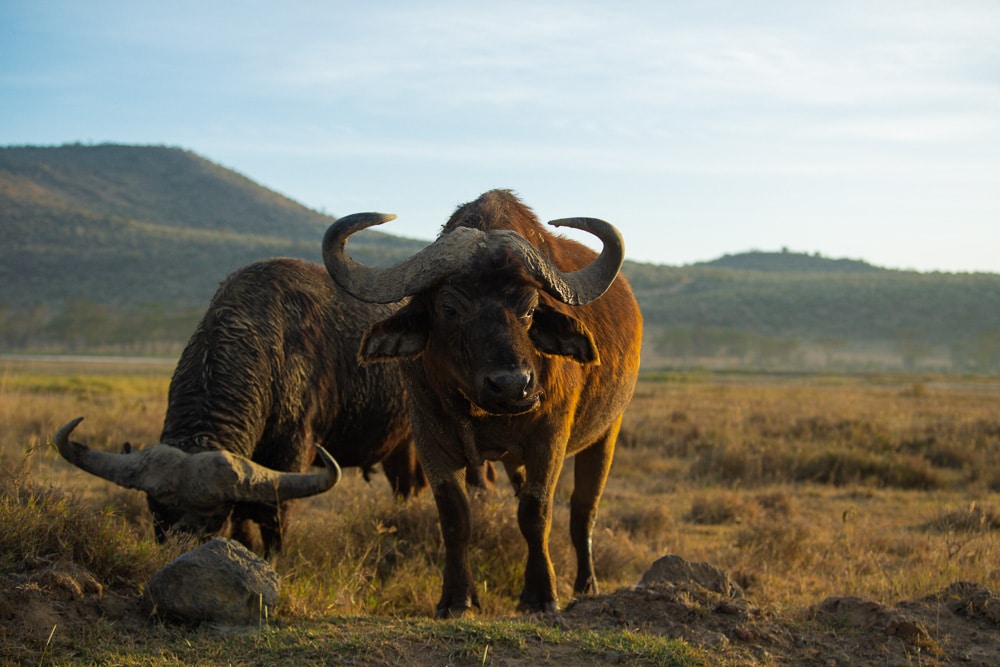
Travelers on Big Five Kenya jungle safari s are thrilled to spot rhinos grazing against the backdrop of enormous flamingoes. Near the shallow alkaline waters of the lake, millions of other birds are spotted nesting.
So, along with wildlife lovers, enthusiastic birders can also enjoy exploring Lake Nakuru. Travelers can have frequent sightings of the lion leopard, giraffe, hippo, warthog, and ostrich in the park.
Lewa Conservancy
Located in northern Kenya, Lewa Conservancy is a leading area for the conservation of wildlife and its habitats. This private wildlife reserve was first established to protect rare black rhinos and Grevy’s zebra. Today, there are more than 60 animal species that roam the conservancy. Travelers can enjoy fulfilling Big Five Kenya safaris in Lewa.
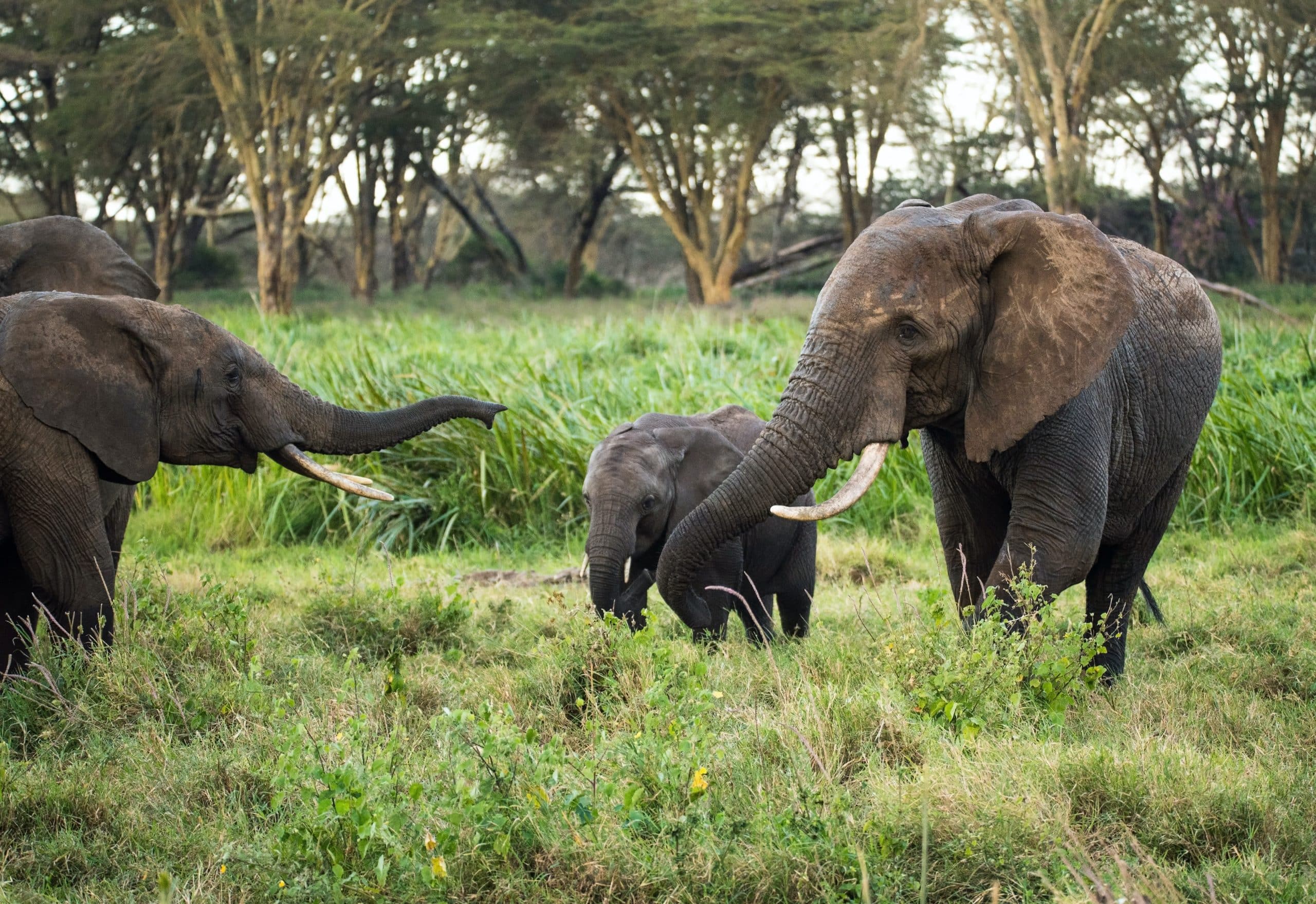
To enjoy a unique experience, travelers can also opt for horseback and cam rides. Along with the Big Five, the most routinely spotted animals at Lewa include the reticulated giraffe, eland, Beisa oryx, wild dog, and many more.
Optimal Moments: Planning Your Big Five Kenya Safari for the Ultimate Wildlife Encounter
Each season of Kenya displays something new, making this country a year-round destination. However, the best months to spot the Big Five in Kenya are from July to October. This period in Kenya marks the peak season of jungle safari .
The vegetation becomes sparse during these months and so, spotting the Big Five becomes easier. The weather also remains favorable during these months. This way, you can enjoy your Big Five Kenya safaris comfortably.
Optimal Lodgings for Your Big Five Kenya Jungle Safari
Kenya offers world-class and incredible accommodation options. From lodges to camps, various types of accommodation suiting your taste and budget are found in Kenya. However, to watch the Big Five, we recommend the Olgatuni Camp situated in the heart of Masai Mara.
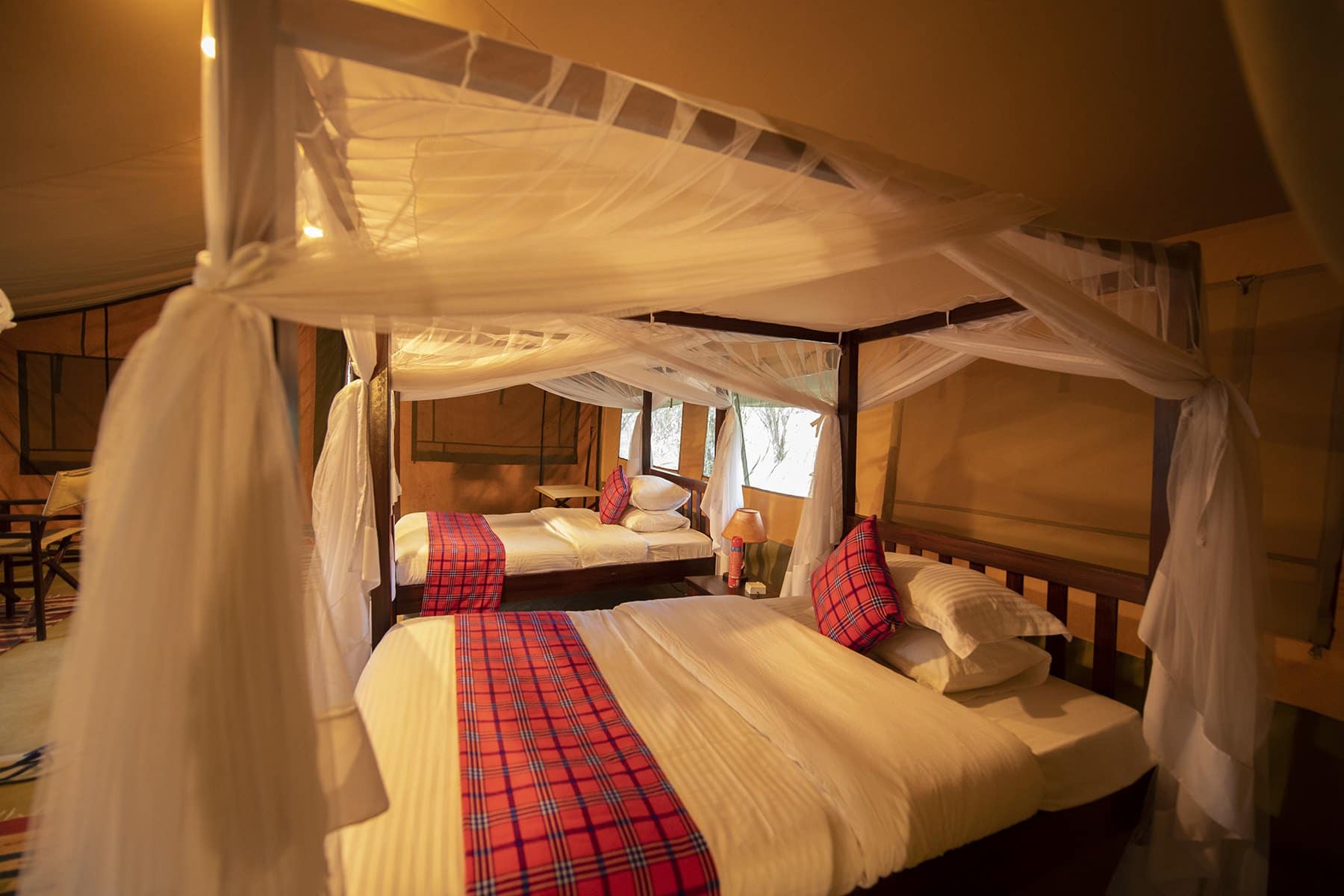
The Mara itself is the top place to see the Big Five. Furthermore, Olgatuni Camp is strategically built inside the reserve to display the best views of the surrounding animals.
Olgatuni Camp offers the most authentic experiential stay in Masai Mara. In fact, the camp is located close to a resident leopard and lion pride as well as other Big Five animals.
The camp has a rustic ambiance, offering the perfect African safari experience. Its services are high-quality and take care of every traveler’s needs. It is the best accommodation to choose from in Masai Mara for rewarding Big Five safaris.
How to See the Big Five Animals in Kenya
In Kenya , many parks and reserves offer jungle safari s to witness the Big Five in their natural habitats. One of the most popular and classic ways to see Big Five animals is through game drives which take place in safari vehicles. You can also spot the Big Five during hot air balloon rides offered by selected parks and reserves of Kenya.
Going on Big Five Kenya jungle safaris is one of the most exciting vacations to consider. Talk to the experts of Wild Voyager today to enjoy customised and perfect adventure tours in Kenya.
To see the Big Five animals, the Kenya jungle is one of the best safari places in Africa. The Big Five refers to the lion, elephant, buffalo, leopard, and rhinoceros, which were historically considered the most challenging and dangerous animals to hunt.
Today, these animals are protected and revered for their impressive size, strength, and beauty, and they are a major draw for tourists visiting Kenya.
In conclusion, the Big Five Kenya jungle safari s is an unforgettable experience for anyone who loves wildlife and nature. The chance to see lions, elephants, buffalos, leopards, and rhinos up close in their natural habitat is truly a once-in-a-lifetime opportunity.
By protecting these incredible animals and their habitats, we can ensure that future generations can continue to enjoy the beauty and majesty of the Big Five in Kenya.
Best season: January - December
Tags: Architecture , City Trails , Culinary Tours
Lake Naivasha Kenya
Masai mara national reserve, east africa safari tour & packages.
Activity Level: Moderate
No. of days: 16
Best season: July - September
Explore Kenya Safari Tours
No. of days: 12
Great Rift Valley, Cheetah Safaris Kenya
No. of days: 11
Kenya Luxury Safari Travel Packages
No. of days: 10
Kenya Migration Safari
No. of days: 9
Masai Mara Serengeti Ngorongoro Safari
Masai mara tour packages.
No. of days: 7
Wilderness Safari Namibia
Best season: April - November
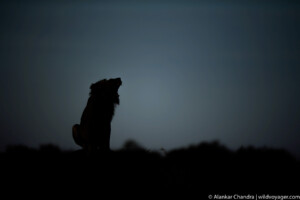
Travel Tips
Kenya travel safety advisory
January 10,2020
Travel Tips,Wildlife & Nature
East Africa Safari FAQs
June 20,2020
Wildlife & Nature
Conservancies of Masai Mara
July 7,2020
Where to do horse safari in Africa
July 15,2020
Seven wonders of Africa
July 17,2020
Where to do walking safari in Africa
July 18,2020
Mammals of Masai Mara
August 22,2020
Top Treks in Africa
November 29,2020
Best Hotels In Diani Beach
March 16,2021
Where To See Wild Dogs In Maasai Mara
View all posts
Enquire Now
Our travel experience designers will reach out for consultation. By submitting, you confirm that you agree to our privacy policy .
Follow us on social media

Subscribe to newsletter and stay updated
Read about our travel expeditions, new destinations, new pictures, latest trip schedules

© Copyright 2024 Wild Voyager Pvt Ltd.
Terms | Privacy | Contact
Spotting the Elusive Leopard in Masai Mara: A Kenyan Safari Adventure
- January 22, 2020
When it comes to thrilling wildlife encounters in Africa, few moments can match the excitement of spotting a leopard in the wild. Masai Mara National Reserve in Kenya, known for its incredible biodiversity and breathtaking landscapes, is a prime destination for wildlife enthusiasts and photographers hoping to witness this magnificent creature in its natural habitat.
Leopards, often referred to as the "ghosts of the savannah," are renowned for their elusive nature. These solitary and stealthy big cats are masters of camouflage, blending seamlessly into the dappled shadows of the acacia trees and tall grasses of the Masai Mara. As such, a leopard sighting is considered a rare and unforgettable experience for any safari-goer. The Masai Mara: Leopard's Paradise.
The Masai Mara, situated in southwestern Kenya, is part of the larger Serengeti-Mara ecosystem, famous for its annual wildebeest migration. This region's diverse ecosystems, including riverine forests, open plains, and woodland savannah, provide the ideal habitat for leopards and their prey.
The key to increasing your chances of spotting a leopard lies in understanding their behavior and the right safari techniques. Here are some valuable tips for your Kenyan safari adventure:
1. Expert Guides and Local Knowledge
Booking a safari with a reputable tour company like Jossec Tour and Safari Company ensures that you'll have experienced guides with in-depth knowledge of leopard behavior and movement patterns. Their local expertise can make a significant difference in your safari experience.
2. Early Morning and Late Afternoon Drives
Leopards are known to be most active during the cooler hours of the day, typically early in the morning and late in the afternoon. Planning your game drives during these times increases your chances of encountering these elusive cats.
3. Patience is Key
Leopard sightings require patience. Guides often rely on their tracking skills and knowledge of the leopard's territory, so be prepared for moments of waiting and anticipation. But when that moment finally arrives, it's absolutely worth it!
4. Photographing Leopards
For photography enthusiasts, capturing the beauty of a leopard in the wild is a dream come true. Remember to use a telephoto lens and keep your camera ready, as these cats can disappear into the bush as quickly as they appear.
5. Conservation and Respect
While the thrill of seeing a leopard is exhilarating, it's essential to remember that these animals are protected species. Maintain a respectful distance and adhere to ethical wildlife viewing practices to minimize stress on the animals.
Spotting a leopard in Masai Mara is an adventure filled with anticipation, patience, and the raw beauty of nature. It's a testament to the incredible biodiversity of Kenya's national parks and reserves. By following these tips and choosing a responsible safari operator, you'll increase your chances of witnessing one of the most breathtaking moments of your life.
Are you ready to embark on an unforgettable Kenyan safari adventure? Contact Jossec Tour and Safari Company to plan your journey into the heart of Masai Mara, where the elusive leopard awaits.
Don't miss out on this once-in-a-lifetime experience. Book your Kenyan safari today and be prepared for the magic of spotting the elusive leopard in Masai Mara!
Contact Jossec safaris and Let us help you plan the Kenya safari of your dreams call us on +254727103818 to speak to one of our team.
- Next Post Great Wildbeast Migration,Crossing river of death
- Previous Post Hotels for All Budgets
Got any questions?
Having any questions? Feel free to ask!
Popular Posts

Hotels for All Budgets

Great Wildbeast Migration,Crossing river of death

why visit Kenya
Book with confidence.

FOR ULTIMATE ADVENTURE
Helpful Links
- General Conditions
- Safari Vehicles
Secure online payment

Color Switcher

The Ultimate Guide to Spotting Elusive African Leopards on Your Safari!
Africa is home to some of the world’s most incredible wildlife. From majestic elephants and towering giraffes to the king of the jungle, the African lion, the continent is a veritable paradise for nature lovers and wildlife enthusiasts. However, no African safari experience is complete without a sighting of the elusive African leopard. These big cats are masters of stealth and can blend in seamlessly with their surroundings. However, with a bit of luck and the right guidance, you can increase your chances of spotting one of these elusive creatures. Here is our ultimate guide to spotting African leopards on your safari.
1. Choose the Right Time of Year.
One of the most important factors in spotting African leopards on your safari is choosing the right time of year. African leopards are most active at dawn and dusk, so you will want to plan your safari for these times. In addition, the dry season (June to October) is the best time to spot African leopards, as they tend to stay near water sources during this time.
2. Look for Signs of Recent Activity.
Another way to increase your chances of spotting an African leopard on your safari is to look for signs of recent activity. African leopards leave behind tracks, scat, and scratch marks on trees, which can help you determine if they have been in the area recently. Keep an eye out for fresh tracks in the sand or mud, as well as claw marks on tree trunks.
3. Listen for Vocalizations.
African leopards are not as vocal as other big cats, but they do make a range of sounds to communicate with each other. Listen for their distinctive cough-like call, which is used to locate other leopards in the area. You may also hear their deep growl or snarl if they feel threatened or are trying to assert their dominance.
4. Keep Your Distance.
When you do spot an African leopard on your safari, it’s important to keep your distance. These big cats are wild animals and can be dangerous if provoked. Stay in your vehicle and use binoculars or a telephoto lens to get a closer look. Do not attempt to approach the leopard on foot, and always follow the instructions of your safari guide.
5. Know the Leopard’s Habits.
Understanding the habits and behaviors of African leopards can also increase your chances of spotting them on your safari. African leopards are skilled climbers and often retreat to the safety of trees, where they rest and store their kills. Keep an eye on the branches above, as you may spot a leopard lounging in a tree or dragging its prey up for safekeeping.
6. Follow the Prey.
African leopards are opportunistic hunters and will often stalk their prey in dense vegetation or rocky outcrops. To increase your chances of seeing a leopard, keep an eye out for other wildlife, such as impalas, gazelles, or baboons, as they are often the target of leopard hunts. If you spot a group of animals behaving nervously or making alarm calls, it could be a sign that a leopard is nearby.
7. Use Local Guides and Trackers.
When embarking on a safari to spot African leopards, it’s highly recommended to hire local guides and trackers who have extensive knowledge of the area and the behavior of these elusive cats. They are trained to read tracks, identify signs of recent activity, and have a keen eye for spotting leopards even in the most challenging environments. Their expertise can greatly enhance your safari experience.
8. Patience is Key.
Spotting African leopards on your safari requires patience. These cats are masters of camouflage and may remain hidden for long periods. Take your time and scan the landscape slowly and carefully. Look for any movement, the flicker of a tail, or the glint of eyes in the shadows. It may take time, but the thrill of finally spotting a leopard will make it all worth it.
9. Be Respectful of the Environment.
While on your leopard-spotting safari, it is crucial to respect the natural environment and the wildlife within it. Follow the ethical guidelines provided by your safari operator and avoid disturbing the animals or their habitats. Remember, you are a guest in their territory, and it’s important to minimize your impact to ensure the conservation of these magnificent creatures for future generations.
1. How likely am I to spot an African leopard on a safari?
Spotting an African leopard is not guaranteed, as they are elusive animals. However, by following the tips and guidance in this guide, you can significantly increase your chances of a sighting.
2. What other wildlife can I expect to see on an African safari?
Africa is teeming with diverse wildlife. Apart from leopards, you may encounter elephants, lions, cheetahs, zebras, giraffes, hippos, and a wide variety of bird species.
3. Can I go on a safari to spot leopards on foot?
It is highly recommended to observe leopards for the safety of a vehicle. Walking in close proximity to leopards can be dangerous, as they are wild animals and should be respected as such.
4. Are African leopards endangered?
Yes, African leopards are classified as “vulnerable” by the International Union for Conservation of Nature (IUCN). Habitat loss, poaching, and human-wildlife conflict are the main threats to their survival.
5. How long do leopards typically stay in trees?
Leopards can spend several hours or even days resting in trees. It provides them with safety, a vantage point for hunting, and protection for their kills from other predators.
6. Can I take photographs of African leopards on my safari?
Absolutely! Photography is a wonderful way to capture the beauty and majesty of African leopards. Make sure to bring a good camera with a telephoto lens to capture those incredible moments. Remember to respect the animal’s space and avoid using flash, as it can startle or disturb them.
Conclusion .
In conclusion, spotting elusive African leopards on your safari can be an exhilarating and rewarding experience. By following the ultimate guide we’ve provided, including choosing the right time of year, looking for signs of activity, listening for vocalizations, and practicing patience, you can increase your chances of encountering these majestic creatures in their natural habitat. Remember to always prioritize the well-being and conservation of the leopards and their environment, and enjoy the magic of witnessing one of nature’s most remarkable animals.
Get a Quote
We would love to hear about your upcoming trip! Contact us to book a 1:1 consultation with one of our expert safari designers so we can discuss your trip in great detail together and get a quote. Initial consultations will be free of charge.
Related Posts
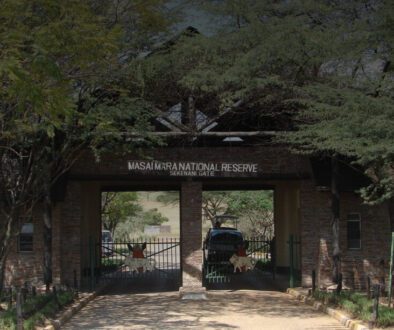
Best Time to Visit , Things to Do , Wildlife
Plan a 2024 Masai Mara Safari
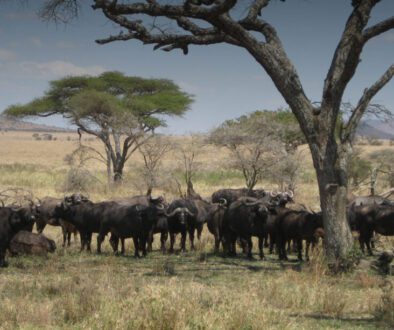
Things to Do , Wildlife
Why a Serengeti Safari Will Blow Your Mind?
Best Time to Visit , Wildlife
How many days do you need in Masai Mara?
National Geographic content straight to your inbox—sign up for our popular newsletters here
- BEST OF THE WORLD
See Kenya’s wildlife in a different light: on horseback
Riders can encounter leopards, rhinos, or zebras on these intimate safaris in Kenya's Borana Conservancy.

The equatorial sun is relentless, bearing down as I lead Elaine, a walnut bay with a dark mane, through thorny acacia and dense shrub. It’s been a long day in the saddle. My thighs ache and our camp beckons across a ridge of ancient folding hills in the Lolldaiga Range of northern Kenya , a mosaic of intertwined landscapes and communities.
Suddenly Elaine’s ears flick into alert, antenna-like, and the muscles of her body tense beneath me. Our guide Nicholus Nangunye Tuta stretches out a lean arm toward a bush just meters away. My eyes focus, straining to see what the others already have: two amber orbs glowing from a shadowed form. It’s a young lion, quick and strong, crouched amid the high grass.
A wild silence hangs between us. Without the defensive armor and high wheels of a safari vehicle, I feel completely exposed. Peering into the bush, I’m suspended between wonder and terror, the distance between myself and the savannah’s most notorious predator laughably small. Usually, I’m the one tracking the lion, camera in hand. Now, the lion shifts in my consciousness from object to subject. I shift, too, acutely aware of the soft flesh of my own body.

Nicholus nods his head in the other direction, a safer distance away. He points to indentations in the dust. “Look, this is a big lion, and these are young ones, some cubs,” he says. “Probably a mother.” Pawprints mottle the earth, each telling the story of more lions, moving in different directions. It was time to go.
( Horseback riding in Kenya is one of 20 best travel experiences for 2024. See the full list here .)
In the country where they started in the 1970s, horseback safaris are still the most immersive way to view wildlife in Kenya. To journey on horseback is to break down the walls—meant to protect, but also to separate us from the natural world. And as we’re absorbed in the thrill of the experience, we’re vividly reminded of the importance of protecting these wild spaces.
Out here your horse is your translator, responding to the low hiss of a leopard, the soft scent of an elephant herd, the cool morning breeze descending from Mount Kenya’s glacial peaks. Your job is to learn how to listen.
Safari tourism and conservation
Saddling up the next morning, we fall into a nose-to-tail line, murmurs of conversation fading as we enter the light-dappled mountain forest. African olive trees stretch out between sentinel-like cedar, and wild orchids root amid the branches. It looks like challenging terrain to navigate, but this trail was blazed by grazing elephants and meanders through the trees with the crooked, effortless sweep of a river.

Around a corner the rough-hewn outline of Mount Kenya appears. Three million years ago this singular volcano was birthed from the Earth’s core, rising to 23,000 feet before time wore it down. Known first as Kirinyaga by the Kikuyu, who lived at its feet and considered it sacred, Mount Kenya is the highest mountain in the country that became its namesake.
Ice still sparkles off its basalt peaks, even though, as our planet has warmed over the last 80 years, its once mighty glacier has shrunk by 90 percent. The lush volcanic greenery of the country’s center fades here to a more austere beauty of sparse woods, arid plains, and isolated mountains. Crops yield to cows.
( This is the future of safaris in Africa .)
Like many conservancies in Kenya, Borana began as a cattle ranch, though its land was used to sustain livestock long before that. For thousands of years, cows were the center of culture and currency for the Maasai, Samburu, Pokot, and other pastoral groups. When national parks and conservancies began to be established in the middle of the 20th century, these same groups routinely found themselves barred from grazing their animals on land they had relied on for generations. Borana now aims for deeper engagement with its neighbors, with outreach programs such as Mazingira Yetu , or “our environment” in Kiswahili, that promote environmental stewardship. Students from nearby communities can spend a day at the conservancy, go on game drives, meet Borana’s rangers, and learn more about sustainable land practices, including water storage, regenerative farming, and tree nurseries. The program launched in 2022, bringing 365 students to Borana, but has grown to welcome more than 1,100 students in 2023.
( Here are five game drive alternatives, from cycling to camping .) Borana reinvests all profits into conservation efforts like this one, and it’s made a difference: Last year tourism generated over $1 million, leading to the protection of 28 endangered species, the training of 114 rangers, scholarships for 55 students, and drought relief to seven communities. But there’s a necessary, and growing, recognition that change doesn’t happen in isolation, and that long-term efforts to protect wildlife require a shared vision across borders, communities, and interests.

An encounter with rhinos
On my final day in Borana, Elaine and I crest a hill, and I notice her aloof, walnut-hued eyes clock two grey masses moving just ahead. It’s a rhino calf and its mother, who moves languidly forward to place herself between us and her young.
Elaine pauses, the two locked in a mutual gaze. Evolution is a funny thing: These two animals are each other’s closest living relatives. The distant cousins seem to come to a cautious truce. We maintain our distance; the rhinos continue grazing. I relax in the saddle and find my attention shifting from the obvious differences between these creatures to the subtle hints of shared lineage: their soulful eyes, strong jaws, and loping gait.
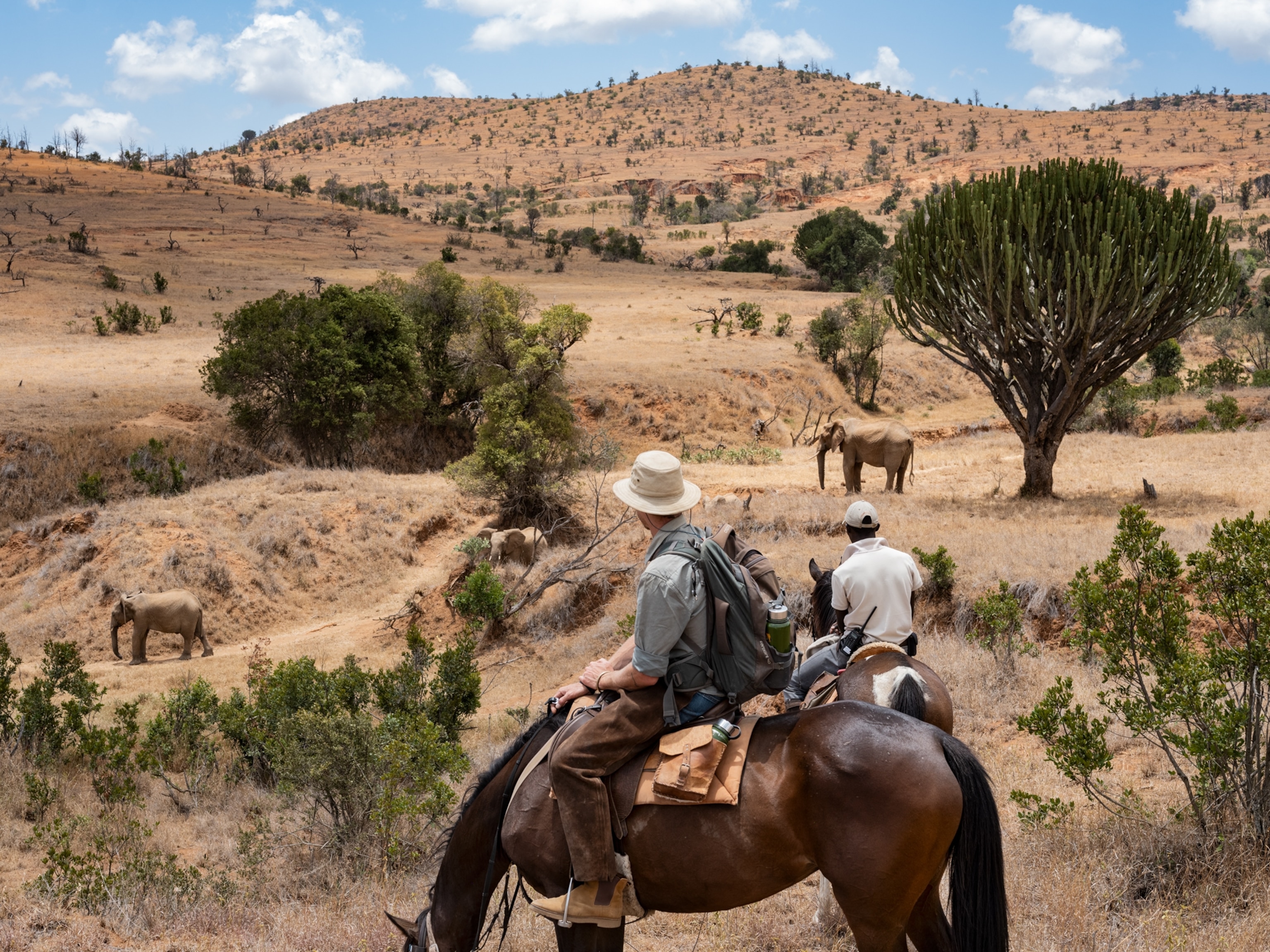
The diversity of our natural world is a wonder, and there is so much to learn from its infinite contrasts—and unexpected connections. As the sun falls behind the hill, I nudge Elaine. She turns away from the now thoroughly unbothered rhinos and we head back home.
What to Know
Related topics.
- HORSEBACK RIDING
- WILDLIFE CONSERVATION
- WILDLIFE PHOTOGRAPHY
You May Also Like

Maasai Mara & beyond: 5 must-see safari parks in Kenya

20 of the coolest travel adventures for 2024
Free bonus issue.

How locals are protecting the wildlife of the Queen Elizabeth Conservation Area

Here are the best ways to get outdoors in all 50 states

The Cool List 2024: the 30 most exciting destinations to visit in 2024

5 wildly underrated natural escapes for 2023

Meet the safari guide empowering women in East Africa
- History & Culture
- Environment
- Paid Content
History & Culture
- History Magazine
- Mind, Body, Wonder
- Terms of Use
- Privacy Policy
- Your US State Privacy Rights
- Children's Online Privacy Policy
- Interest-Based Ads
- About Nielsen Measurement
- Do Not Sell or Share My Personal Information
- Nat Geo Home
- Attend a Live Event
- Book a Trip
- Inspire Your Kids
- Shop Nat Geo
- Visit the D.C. Museum
- Learn About Our Impact
- Support Our Mission
- Advertise With Us
- Customer Service
- Renew Subscription
- Manage Your Subscription
- Work at Nat Geo
- Sign Up for Our Newsletters
- Contribute to Protect the Planet
Copyright © 1996-2015 National Geographic Society Copyright © 2015-2024 National Geographic Partners, LLC. All rights reserved

Leopard Rock Lodge
Leopard Rock Lodge is a fully refurbished upmarket Safari Lodge built on a 3.5Km river frontage, in the last remaining park devoted to wilderness Meru National park, along the Equator 310km from Nairobi, North East of Mt Kenya.
Meru National Park has a wide variety of Landscapes and Habitat around the Equator. Forest, swamp and Savannah are pierced by 15 perennial rivers, rising from the volcanic Nyambene Hills reaching Tana river in the Southern boundary.
The park is a low altitude area ranging 110m to 1100m above sea level.
Access :: 5 hour journey from Nairobi by road :: 1 hour Flight from Nairobi – daily flights available.
Accommodation Leopard Rock Lodge offers very luxurious and gorgeous cottages which border the tropical Murera River.
The cottages offer a panoramic view overlooking the bush and the river. completely furnished hand carved king size bed, desk, panel frames. Our Cottages also offer a grandiose private terrace.
Accommodation at Leopard Rock Lodge consists of 15 spacious luxury cottages with cool stone floors, colourful Persian rugs, polished teak furniture and four- post Lamu-style beds.
Activities :: Sun Downer :: Bush breakfast :: Rhino Sanctuary :: Borana visit :: Bird watching :: Fishing :: Massages :: Trip to Kora (including Lunch Box) :: excursion to Adamson fall (including Lunch Box) :: Borana Dance
Facilities :: Swiming pool :: Island bar :: Jaccuzi :: Museum, Library, videotech :: Conference Room :: Fire Place :: Curious Shop :: Massage :: High Class Restaurant :: Bar
Search Tour
Popular tours.
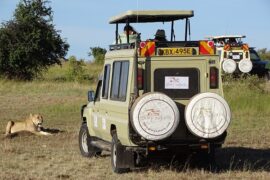
3 Days Maasai Mara Safari
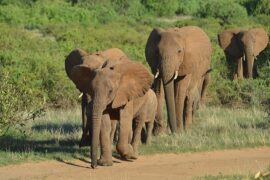
Best of Tanzania Safari
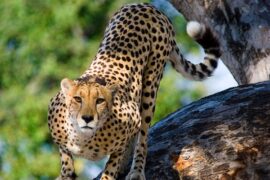
Marvels of Uganda Safari
Winter is here! Check out the winter wonderlands at these 5 amazing winter destinations in Montana
- Travel Guide
15 Best Game Reserves And Safari Parks In Kenya
Published: September 22, 2023
Modified: January 3, 2024
by Doe Herrin
- Africa & Middle East
- Plan Your Trip
- Travel Destinations
- Travel Tips
When it comes to experiencing the thrill of wildlife and embarking on unforgettable adventures, Kenya is a destination that stands out from the crowd. With its breathtaking landscapes, diverse wildlife, and rich cultural heritage, Kenya has become a top choice for those seeking an authentic safari experience. The country boasts a remarkable collection of game reserves and safari parks, each offering unique encounters with some of the most iconic animals on the planet.
In this article, we will explore the 15 best game reserves and safari parks in Kenya, providing a comprehensive guide for wildlife enthusiasts and nature lovers. Whether you are searching for the Big Five – lions, leopards, elephants, rhinos, and buffalos – or hoping to witness the awe-inspiring wildebeest migration, Kenya’s game reserves and safari parks offer a once-in-a-lifetime opportunity to immerse yourself in the wonders of the natural world.
Masai Mara National Reserve
The Masai Mara National Reserve is undoubtedly one of the most famous safari destinations in Kenya. It is home to an incredible concentration of wildlife, including the renowned Big Five – lions, elephants, buffalos, leopards, and rhinos. The annual wildebeest migration, where millions of wildebeest and zebras cross the Mara River, is a sight to behold.
Amboseli National Park
Situated at the foothills of Mount Kilimanjaro, Amboseli National Park offers breathtaking views of Africa’s highest mountain. Known for its large elephant herds, Amboseli provides unique opportunities for up-close encounters with these majestic creatures. The park also boasts an impressive variety of bird species and other wildlife.
Samburu National Reserve
Samburu National Reserve, located in the arid northern part of Kenya , offers a distinctive safari experience. With its rare wildlife species such as the Grevy’s zebra, Somali ostrich, and reticulated giraffe, Samburu provides a chance to encounter animals rarely seen in other parks. The Ewaso Ng’iro River flows through the reserve, creating a lush oasis attracting diverse wildlife.
Lake Nakuru National Park
Famous for its pink-hued shores created by thousands of flamingos, Lake Nakuru National Park is a bird lover’s paradise. Besides the flamingos, the park is home to a wide range of bird species and serves as a sanctuary for both black and white rhinos. The park also offers captivating views of the Great Rift Valley and hosts various wildlife including buffalos, zebras, and giraffes.
Mt. Kenya National Park
Nestled around the majestic Mount Kenya, the national park offers awe-inspiring landscapes and diverse wildlife. Visitors can embark on thrilling hikes to summit Mount Kenya or explore the lower slopes with expert guides. The park also provides a habitat for rare animal species like the bongo antelope, as well as elephants, buffalos, and various bird species.
Tsavo East National Park
As one of the largest national parks in Kenya, Tsavo East is known for its untamed wilderness and expansive plains. With its red elephants and diverse wildlife, including lions, cheetahs, and giraffes, Tsavo East offers a true African safari experience. The park also boasts natural attractions such as the spectacular Lugard Falls and the stunning Aruba Dam.
Aberdare National Park
The Aberdare National Park is a magnificent high-altitude park renowned for its scenic beauty and abundant wildlife. The park is home to elusive animals like the bongo antelope, as well as elephants, buffalos, and leopards. Visitors can embark on game drives, hikes, or even stay in unique treehouse accommodations for an unforgettable experience.
Meru National Park
Located in the eastern part of Kenya, Meru National Park offers a diverse ecosystem including riverine areas, savannah grasslands, and wooded valleys. The park is home to an array of wildlife, including lions, leopards, elephants, and giraffes. Visitors can also explore the Tana River, go bird-watching, or even visit Elsa’s Kopje, the lodge made famous by the book and film “Born Free”.
Amboseli Conservation Area
Adjacent to Amboseli National Park, the Amboseli Conservation Area is dedicated to preserving the magnificent wildlife and habitats of the region. It offers opportunities for nature walks, game drives, and guided bush walks, allowing visitors to immerse themselves in the beauty of this unique ecosystem.
Maasai Mara Conservancies
Alongside the Masai Mara National Reserve, the Maasai Mara Conservancies provide exclusive and intimate safari experiences. These private conservancies offer a more secluded and personalized encounter with wildlife, as well as the chance to support local communities and conservation efforts.

Tsavo West National Park
Located on the western side of Tsavo, Tsavo West National Park is a hidden gem with stunning natural attractions. From the famous Mzima Springs, where hippos and crocodiles can be viewed underwater, to the breathtaking lava flows of the Chaimu Crater, the park offers a unique blend of wildlife and geological wonders.
Ol Pejeta Conservancy
Ol Pejeta Conservancy is a pioneering wildlife conservancy in Kenya, known for its commitment to conservation and community development. It is home to the largest population of black rhinos in East Africa and also provides sanctuary to endangered species such as chimpanzees. Visitors can enjoy game drives, guided walks, and even engage in conservation activities.
Amboseli Trust for Elephants
Founded in 1972, the Amboseli Trust for Elephants is dedicated to the preservation and protection of elephants in the Amboseli ecosystem. Visitors can learn about elephant behavior, conservation efforts, and even witness the incredible sight of these majestic creatures in their natural habitat.
Lewa Wildlife Conservancy
The Lewa Wildlife Conservancy is a private wildlife reserve renowned for its conservation efforts and sustainable tourism practices. This protected area is home to various wildlife including the critically endangered Grevy’s zebra and black rhinos. Visitors can partake in game drives, bush walks, and even visit local Maasai communities.
Laikipia Plateau
Stretching across the central highlands of Kenya, the Laikipia Plateau is a conservation success story. The region is home to numerous private and community-based conservancies that aim to protect wildlife and support local communities. Visitors can enjoy horseback safaris, camel rides, and experience authentic African hospitality.
These 15 best game reserves and safari parks in Kenya offer a magical opportunity to witness the beauty and wonder of Africa’s wildlife up close. Whether it’s witnessing the Great Wildebeest Migration in the Masai Mara or spotting elusive creatures in the Samburu National Reserve, each park provides a unique and unforgettable safari experience. So, pack your bags and embark on an adventure of a lifetime in the “15 Best Game Reserves and Safari Parks in Kenya”.
Kenya offers some of the best game reserves and safari parks in the world. With its diverse landscapes and abundant wildlife, it is a paradise for nature enthusiasts and adventure seekers. From the iconic Maasai Mara National Reserve to the lesser-known gems like Samburu National Reserve and Tsavo East National Park, there are plenty of options to choose from.
Visitors to Kenya’s game reserves and safari parks can expect thrilling game drives, close encounters with the Big Five (lion, leopard, elephant, rhinoceros, and Cape buffalo), and breathtaking views of the African savannah. The knowledgeable guides and rangers ensure a memorable experience by sharing interesting facts about the wildlife and their habitats.
Whether you are a photography enthusiast, a family looking for an educational adventure, or a nature lover seeking tranquility, Kenya’s game reserves and safari parks have something for everyone. So pack your bags, grab your binoculars, and embark on an unforgettable journey amidst the wonders of the Kenyan wilderness.
1. What is the best time to visit Kenya’s game reserves and safari parks?
The best time to visit is during the dry season, which is from June to October. This is when the wildlife congregates around water sources, making it easier to spot them.
2. Do I need a visa to visit Kenya?
Yes, most visitors require a visa to enter Kenya. It is advisable to check the visa requirements before traveling to ensure a smooth entry into the country.
3. Are children allowed on safari?
Yes, children are allowed on safari. However, it is important to choose a family-friendly safari lodge or camp that caters to the needs of children and provides a safe environment.
4. Can I go on a walking safari in Kenya?
Yes, some game reserves in Kenya offer guided walking safaris. It is a unique experience that allows you to get closer to nature and observe the smaller details of the wilderness.
5. Can I see the Great Migration in Kenya?
Yes, Kenya is one of the best places to witness the Great Migration of wildebeest and zebra. The Maasai Mara National Reserve is known for its dramatic river crossings during this annual event.

- Privacy Overview
- Strictly Necessary Cookies
This website uses cookies so that we can provide you with the best user experience possible. Cookie information is stored in your browser and performs functions such as recognising you when you return to our website and helping our team to understand which sections of the website you find most interesting and useful.
Strictly Necessary Cookie should be enabled at all times so that we can save your preferences for cookie settings.
If you disable this cookie, we will not be able to save your preferences. This means that every time you visit this website you will need to enable or disable cookies again.
The Kenyan Leopard Is Doing Well
Their numbers are not as diminished as the other big cats, and it's status is "near threatened" according to the International Union for the Conservation of Nature. This puts Kenya's leopards at a fairly low risk for extinction.
Unlike the lion, leopards do not live in groups. These solitary cats will live and hunt on their own, typically at night. The share much of the same territory as the much larger lion, so they hunt at night to avoid competition. A leopard will hunt and eat basically anything they can kill, from small rodents up to full-grown antelope.
Where To Find Leopards In Kenya
The leopard isn't confined to any one part of Kenya, and can be found in many wildlife parks or reserves. The Masai Mara National Reserve and the Samburu National Reserve are two parks particularly known for their leopards.
A leopard will usually drag its kill into a tree to defend against bold scavengers like the hyena. This habit can make the leopard easier to spot and photograph, because its much more noticeable above the tall grasses. An ideal situation for the safari photographer.
Black Panthers
A variation of the standard spotted leopard is a "melanistic" leopard, which means they have coats that are all black. Without their distinctive markings, these cats are not always recognized as leopards. They are commonly referred to as black panthers. To add to the confusion, black jaguars also exist, and they too are called black panthers.
Black leopards are almost never seen in the grasslands, but only in the heavily forested parts of Kenya. In fact, nearly all of the leopards living in the Malaysian rainforest are the black variety. In Kenya, black leopards are quite rare.
Related Pages:
A List Of The Most Important Animals Of Kenya Presence Of Kenya Wildlife By Park Which Wildlife In Kenya Is Endangered? The Kenyan Lion: Threatened Predator About Kenya's Birds From Kenya Leopard To The Homepage
Would you prefer to share this page with others by linking to it?
- Click on the HTML link code below.
- Copy and paste it, adding a note of your own, into your blog, a Web page, forums, a blog comment, your Facebook account, or anywhere that someone would find this page valuable.
The 12 best national parks in Kenya

Apr 4, 2023 • 13 min read
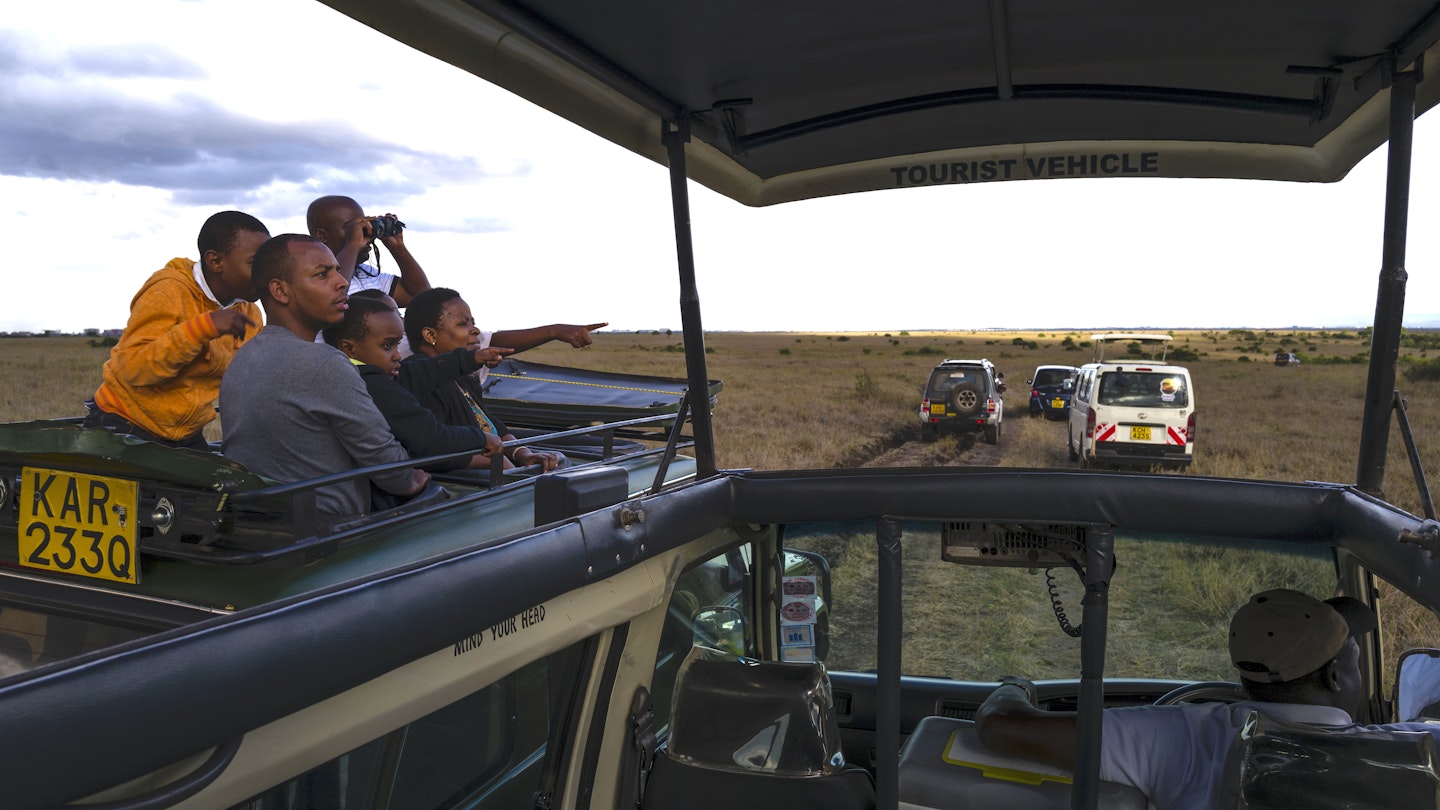
Nairobi National Park is one of the best protected spaces to spot wildlife in Kenya © Heath Holden / Getty Images
National parks and Kenya go hand in hand. It’s home to a whopping 23 of them, as well as four marine national parks. From the unforgettable scene of thousands of wildebeest crossing the Mara River during their migration to the sight of steaming geysers at Hell’s Gate National Park , Kenya certainly has no shortage of protected parks, reserves, marine parks, and privately owned conservancies.
Many people go on safari in Kenya with a steely determination to see the Big Five (rhino, buffalo, elephants, leopards, and lions). The term originates from colonial-era hunters who deemed these to be the most dangerous animals to hunt on foot, so don’t let an obsession with seeing them all stop you from visiting national parks that don’t feature the full list – you’re sure to spot plenty of other equally fascinating creatures.
From spectacular scenery and geothermal springs to brilliantly colored birdlife and the indigenous communities that live in and around these areas, Kenya’s national parks are about more than wildlife, and you’ll be in for a treat whatever parks you choose to visit. These are the 12 best national parks in Kenya.

1. Masai Mara National Reserve
Known locally as the Mara, the Masai Mara National Reserve is Kenya’s most famous national park, not least because from July to October, it’s the route for the Great Migration, the spectacle of thousands of wildebeest, giraffes and zebra traveling from the Serengeti in southern Tanzania across the Mara River to the lush grass of Kenya. Nile crocodiles lie on the riverbanks waiting for their prey.
The semi-nomadic Maasai communities are another draw, with travelers attracted to their traditional singing and dancing, warrior traditions and colorful dress. The Maasai people own several private reserves around the Mara, which are leased to different safari companies, and these are one way to support community-powered tourism. A bush walk with a Maasai warrior is a wonderful way to appreciate the community’s connection with the land, as they point out wildlife and medicinal plants.
It’s not always easy to ensure cultural tourism experiences are genuinely ethical and non-exploitative. Ideally, visit a Maasai-run project, or ask your tour operator exactly where your money goes. If companies claim to support community projects, ask how and if you can see them. Conversely, some tourists report being overcharged (for crafts or a photo, for example), but this is often the consequence of years of communities seeing wealthy travelers pass through their villages on expensive tours that haven’t benefited them.
The Mara is a Big Five park, home to rhinos, buffalo, elephants, leopards and lions. The Mara has one of the world’s highest densities of lions, but the birdlife – 470 species, including birds of prey and migratory birds – and the wild savanna are just as alluring. To get a sense of the vastness of the Mara, book a hot-air balloon safari. You’ll see why the Maasai people named it the Mara (“spotted land”) as you float over specks of shrubs, cloud shadows, and animal herds. Walking and horseback safaris, in the company of armed rangers, are an incredible way to experience the beauty of the Mara up close.

2. Amboseli National Park
In southern Kenya near Tanzania, Amboseli National Park is known for its big-tusked (tusker) elephant herds – the population is estimated at 1500 – and its views of Mt Kilimanjaro . The relatively stable number of elephants is mostly thanks to the work of the Amboseli Trust for Elephants, one of the most celebrated such projects in the world. Amboseli doesn’t get as much rain as other parks but has a network of swamps instead – due to its mountain forest environment – which attracts a lot of birdlife. The park is also home to big cats, buffalo, Maasai giraffe, antelopes and vervet monkeys.
The word “Amboseli” comes from the Maasai for “salty dust,” and you’ll often see elephants caked in this dry, white mud after a good wallow. This region is also home to Maasai people. Some conservation areas such as Selenkay are Maasai-owned, and you can support the community by staying in and visiting their villages.
To photograph views of Kilimanjaro, aim for an early wake-up call when it’s clear and before the clouds come in. Weather patterns, environmental issues and climate change have also changed the movement of wildlife, so you might now see flamingos in Amboseli, when before they were more commonly sighted at Lake Naivasha or Lake Nakuru . Wildebeest, not usually a common sight in Amboseli, have also been spotted recently.
Outside of the rainy season, Lake Amboseli is dry, which can make for beautifully stark photography. For incredible views of the park, head to Observation Hill, where you can see the swamp being enjoyed by elephants, hippos, and more.

3. Tsavo National Park
Made up of two national parks, Tsavo East National Park and Tsavo West National Park , Tsavo in southwest Kenya is best known for its large elephant herds and impressive semi-arid landscape. Tsavo East is one of Kenya’s oldest parks and, combined with Tsavo West, comprises Kenya’s largest national park.
The parks were split when the railway line from Mombasa to Kenya’s interior was constructed, and now a highway also runs between Nairobi and Mombasa, making Tsavo a great safari stop-off on a city-to-coast vacation.
The two parks have slightly different terrains. Tsavo East is mostly flat plains, with the Galana River flowing through. Camping along the river is one of the highlights of Tsavo, as is taking a walking safari across the vast Yatta Plateau, the world’s longest lava flow at 300km (186 miles).
Tsavo West, home to Lake Jipe and Mzima Springs , is wetter, more mountainous and swampier. Bird spotting is better in Tsavo West, which has around 500 species. Most impressive of all is the force of Mzima Springs, where 50 million gallons of water rush out from the lava rock. The lushness makes for prolific game-viewing, with elephants, hippos, crocodiles, zebras, giraffes and monkeys hydrating and hanging out in this verdant terrain. For epic views, it’s hard to beat the scene over the plains from Poacher's Lookout .
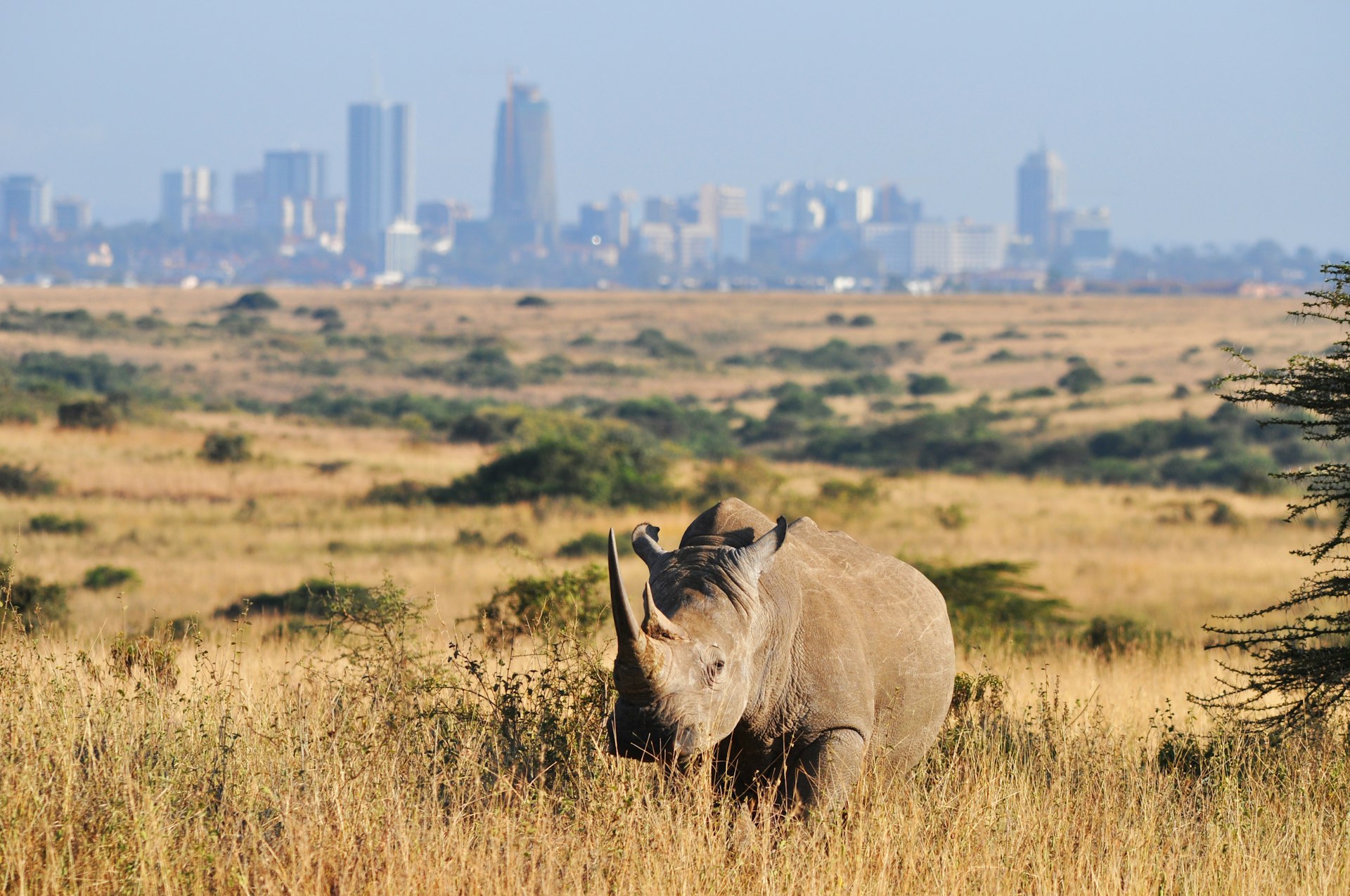
4. Nairobi National Park
Opened in 1946, Nairobi National Park was Kenya’s first national park and is the world’s only national park within a city. Some travelers even manage to get in a few wildlife sightings on their way to or from the airport.
It’s deeply surreal to be on an open plain with Nairobi’s skyscrapers as a backdrop, and among the acacia bush, you’ll spot a variety of game, including lions, leopards, buffalo and the endangered black rhino. The park has developed a successful rhino conservation program and restocked other parks through their breeding projects. As in many national parks across Kenya, the birdlife is excellent, with more than 400 species recorded here.
The park has designated picnic spots, walking trails around the hippo pools and campsites, so it’s a viable choice for a day trip or overnight if you don’t have time to travel farther. Also inside the park is the Sheldrick Wildlife Trust , a rhino and elephant sanctuary that retains links with Tsavo National Park, where David Sheldrick worked as an anti-poaching warden. Visitors to the sanctuary can see the Trust’s rescue and rehabilitation program in practice and watch the animals at feeding time, from a distance.
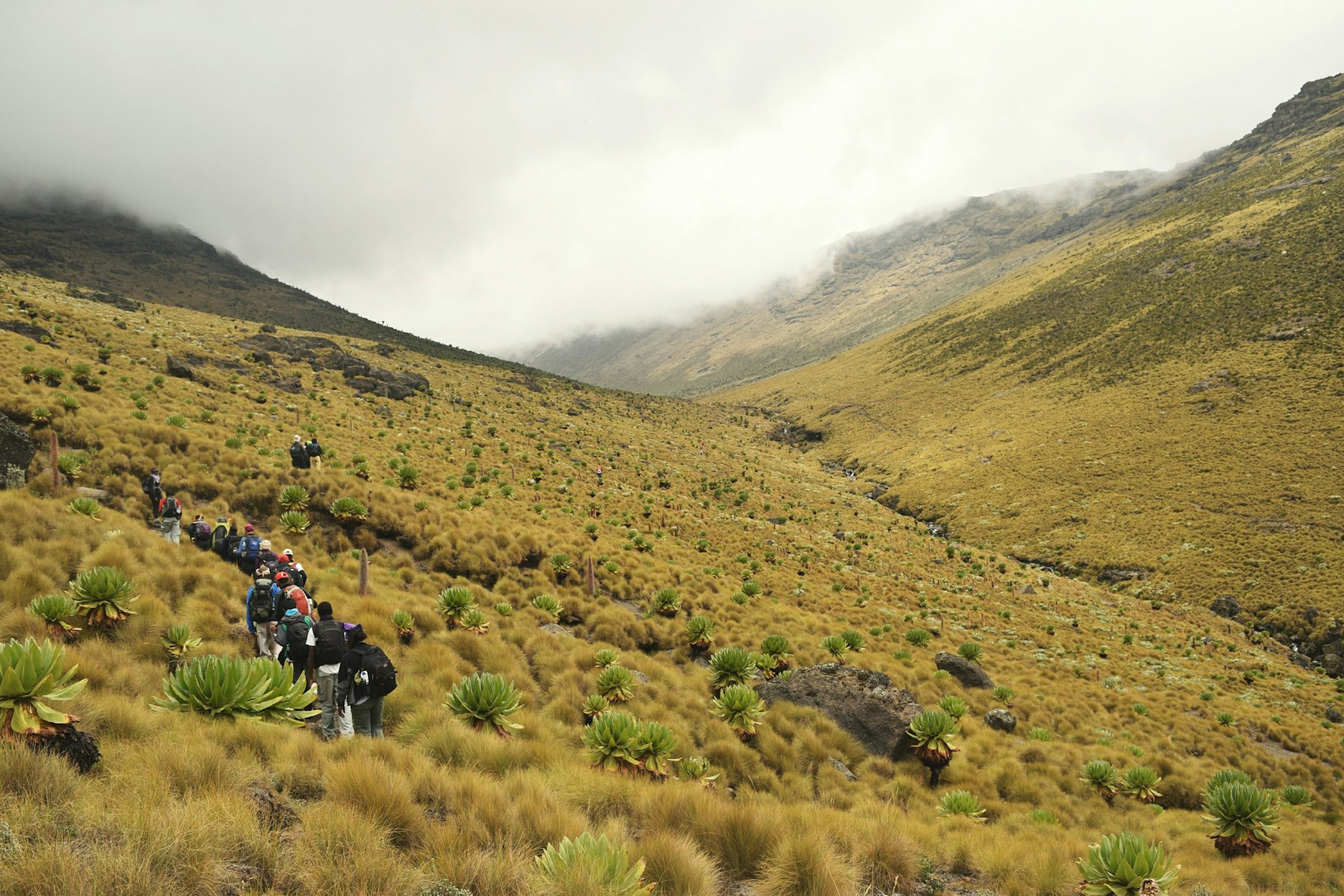
5. Mt Kenya National Park
If you’re a hiker or a climber, Kenya’s second highest mountain, Mt Kenya , deserves a spot near the top of your best treks list for the trail to Point Lenana, the main peak for trekkers. Mt Kenya National Park has great camping, including wild camping along some of the lesser-used trails, and rock climbing on the lower peaks. The park also features a 10km (6.2-mile) hike up to the Met Station if you only have time for a day excursion.
This Unesco-listed park is pure joy to explore, with its ecosystem of lakes, glaciers, mineral springs and Afro-Alpine forest. You’re in for sweeping views of high ridges, deep valleys and dense forest gradually meeting glacial terrain as you go higher into the park.
Mt Kenya is home to elephant, mongoose, bushbuck, eland and colobus monkeys, but it’s the walking trails and scenery that are its biggest attraction. Mt Kenya lies within the Laikipia Plateau , a network of conservancies mostly managed by local communities, so it’s an excellent region for community-based tourism accommodation. The three-day drive from Nairobi to Mt Kenya National Park is also one of Kenya's best road trips .
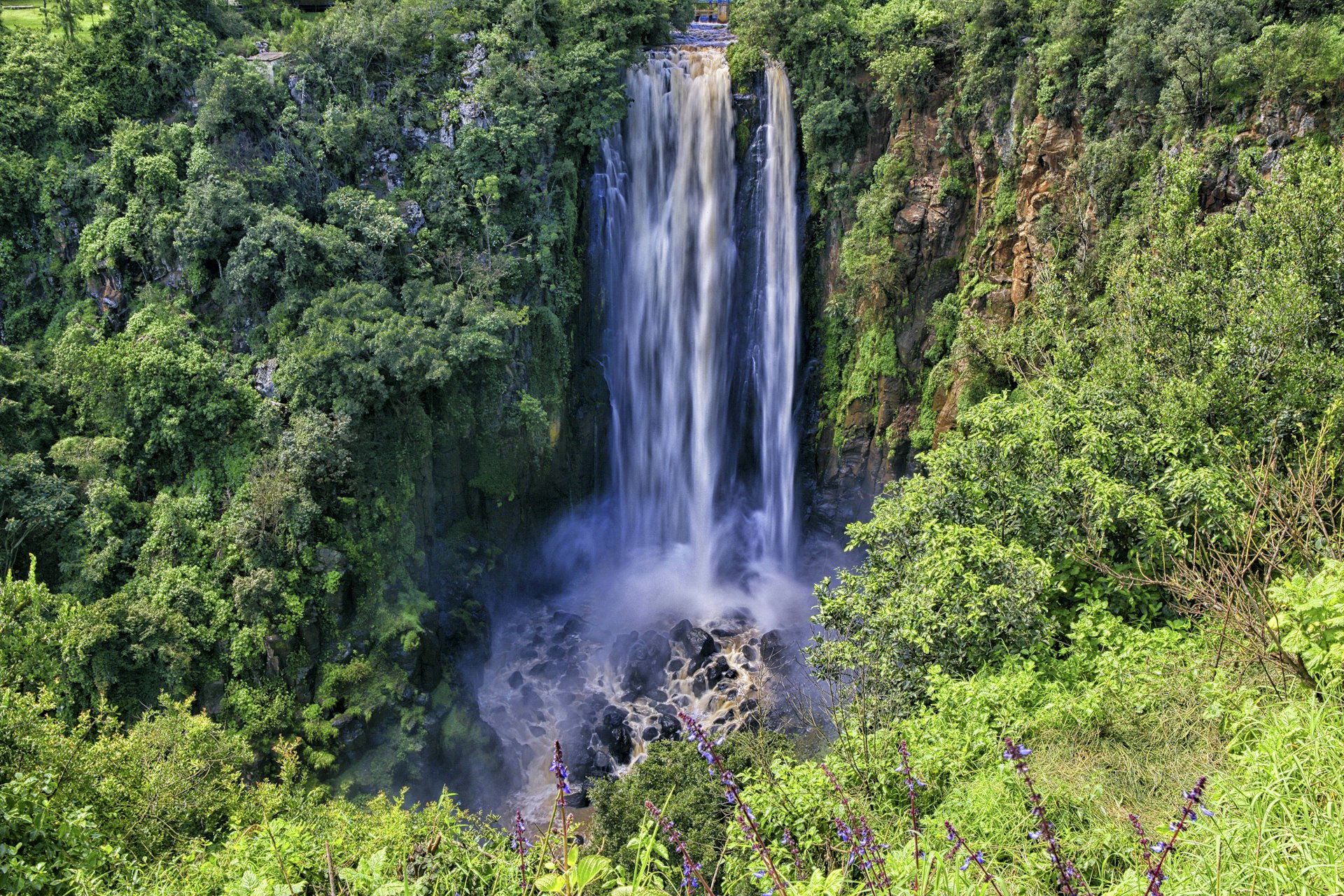
6. Aberdare National Park
Aberdare National Park is perhaps the most distinctive of all Kenya’s national parks, a place to savor nature in the cooler climes of the central highlands. While you will see wildlife, Aberdare is known primarily for the outstanding natural beauty of its misty forests and river valleys. The High Park, as the higher moorlands are sometimes called, is perfect for hiking. You can climb the peaks of Lesatima, Il Kinangop and Kipipiri easily, but you’ll need a guide and a pass, so arrange your excursion in advance.
Created in 1950 to protect the Aberdare mountains, which drop to the Rift Valley on the western side, the park comprises dense forest, steep ravines, open moorland and thundering waterfalls. It is home to black rhinos, elephants, baboons, colobus monkeys, buffalo and elusive leopard. Birdwatchers are also in for a treat, with more than 250 species sighted.
The park also has a lot of history. In the 1950s, the dense forest hid Kenya’s Kikuyu Mau Mau guerrillas during their struggle against European colonization. And it is home to Treetops Lodge, where Princess Elizabeth found out she would be Queen of the United Kingdom in 1952 after the early death of her father. You need a good 4WD vehicle if you’re heading to Aberdare, especially when it’s rainy.

7. Meru and Kora national parks
If you’re looking for rugged, remote and pristine landscapes, Meru and Kora national parks in the Rift Valley are great options. These parks contain vast grasslands, thorny bush, gushing rivers and thick jungle, and you’ll find Grevy’s zebras, elephants, buffalo, hippos and giraffes – plus more than 420 bird species.
The landscape, with huge swathes of savanna, dries out in the dry season, so staying cool and hydrated is important. A good eight-hour drive from Nairobi, Meru and Kora are some of the more off-the-beaten-track national parks.

8. Samburu National Reserve
Samburu National Reserve , north of Laikipia, is a popular park on the northern safari circuit. It’s home to the “Special 5” – Grevy’s zebra, Somali (blue-necked) ostrich, reticulated giraffe, gerenuk and beisa oryx (both types of antelope) – so-called because they’re not typically found in Kenya’s southern game reserves. The Samburu and Rendille people of this region are involved in protecting and monitoring Grevy’s zebras.
Named after the Samburu people, nomadic pastoralists, and a warrior people for whom this region is home, this national park is one of the best places to see leopards in Kenya, and it’s a prime spot for tuskers. You can also experience Samburu culture and go on camel-trekking safaris with Samburu guides.
Drought is an issue in Samburu. Far drier than the Mara, the Ewaso Nyiro River is a lifeline for the pastoral communities, wildlife and flora and fauna. When wildlife gathers on the river banks, it’s quite a sight, and a photographer’s dream. Samburu is one of the parks where George and Joy Adamson of Born Free -fame raised Elsa the lioness.

9. Hell’s Gate National Park
A unique element of the Great Rift Valley is the dramatic landscape of Hell’s Gate National Park , one of the most atmospheric of Kenya’s national parks. Geothermal steam rises from the ground in an epic landscape of volcanoes, basalt columns, high cliffs and gorges. From a huge natural spa pool managed by KenGen (Kenya’s main electric power producer), you can enjoy the views over a hot soak.
While wildlife isn’t the prime reason for visiting Hell’s Gate, the park counts zebras, buffalos, antelopes, and baboons among its residents. Its 100 recorded bird species include vultures and Verreaux's eagles. You’ll also sometimes spot raptors that have set up their nests in the cliffs. The park is particularly popular with walkers, mountain bikers, rock climbers, and cyclists. If you’re a Lion King fan, you’ll be impressed that the rock formation at Hell’s Gate Gorge is what inspired Pride Rock.
Hell’s Gate National Park is a doable day trip from Nairobi, often combined with Lake Nakuru or smaller soda (alkaline) Lake Elmenteita , which has a population of flamingos.

10. Lake Nakuru National Park
Within driving distance of Nairobi, Unesco-listed Lake Nakuru on the floor of the Great Rift Valley allows you to pack a game drive, birdwatching, a hike and a picnic into one day.
With around 450 bird species recorded, Lake Nakuru National Park is a particularly good place for spotting water birds because of high algae levels, although flamingo numbers have been dropping as issues around pollution and human encroachment have affected the lake. It still attracts many pelicans and other water birds. You’ll also see animals such as waterbuck and white rhinos. The park is known for its annual 50km (31 miles) Cycle With the Rhinos race, which raises funds for the endangered rhino.
The lake is surrounded by high ridges: head to the viewpoints of Lion Hill, Baboon Cliffs and the Out of Africa Lookpoint for some of the best vistas over the lake and valley. Many travelers combine this national park with a visit to the Menengai Crater , the caldera just outside Nakuru town, which has incredible views over the landscape. The crater is the site of a Mau Mau Cave, where guerrilla soldiers camped out during the 1950s Mau Mau uprising in resistance to British colonial rule.
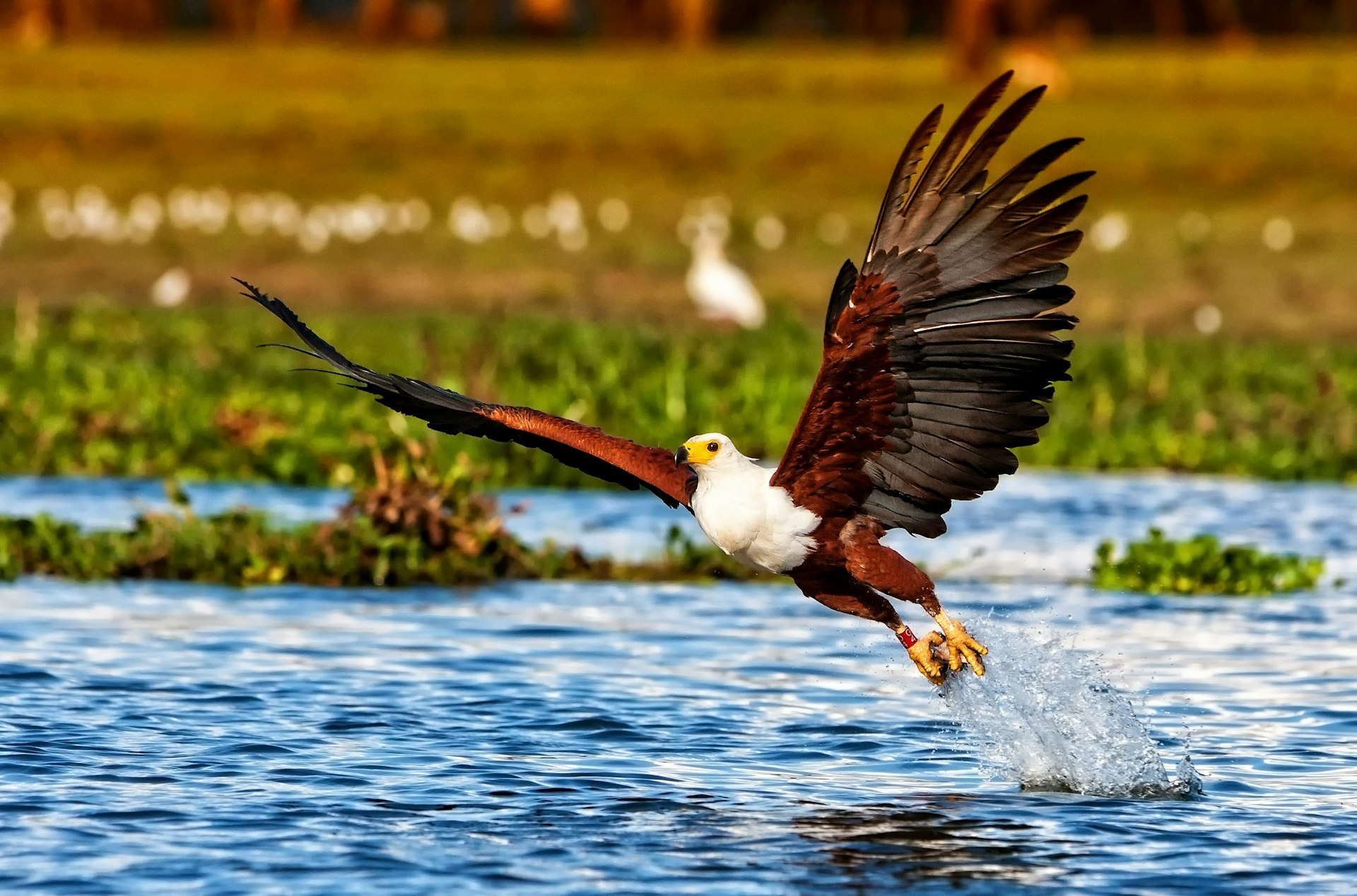
11. Lake Naivasha
Though not technically a national park, with its deep blue freshwater lake and nearby patchwork of waterfalls, gorges, acacia forests and extinct volcanoes, Lake Naivasha is one of the prettiest and most accessible areas near Nairobi. Hippos are at home in the high-altitude lake, which often has pelicans and other water birds nearby. On the banks, you’ll see small herds of zebra, buffalo and several species of antelope. It’s a top destination for birding, especially birds of prey.
The naturalist Joy Adamson lived on the shores of Lake Naivasha with her husband George, where together they raised the lion cub Elsa. The story became an award-winning book and film, Born Free . Their former home, Elsamere , is now a museum and conservation and field study center.

12. Lake Turkana National Parks
Three parks – Sibiloi National Park , the South Island and Central Island National Parks – make up the Unesco-listed Lake Turkana National Parks, surrounding the vivid greenish-blue Lake Turkana, the world’s largest permanent desert lake. This otherworldy region is ideal for the adventurous traveler: it’s hot, dry, windy, vast and volcanic.
Central Island consists of three active volcanoes and three crater lakes, where you’ll find the largest concentration of Nile crocodiles in the world, plus enormous Nile perch and tilapia fish. You should see a decent amount of game – such as zebras, hyenas, kudu – and if you’re lucky, lions, cheetahs and leopards. Volcanic ash covers South Island, which has become a breeding ground for more than 20 bird species and a large crocodile population.
Lake Turkana hosts one of Kenya’s biggest cultural festivals. The three-day Lake Turkana Festival in Loyangalani on the southeastern coast of the lake celebrates the heritage of the communities that live here, who fish in the Lake Turkana basin, and whose languages and cultures require the same preservation as the environment.
Lonely Planet contributor Helena Smith provided additional edits and fact-checking.
This article was first published August 2022 and updated April 2023
Explore related stories
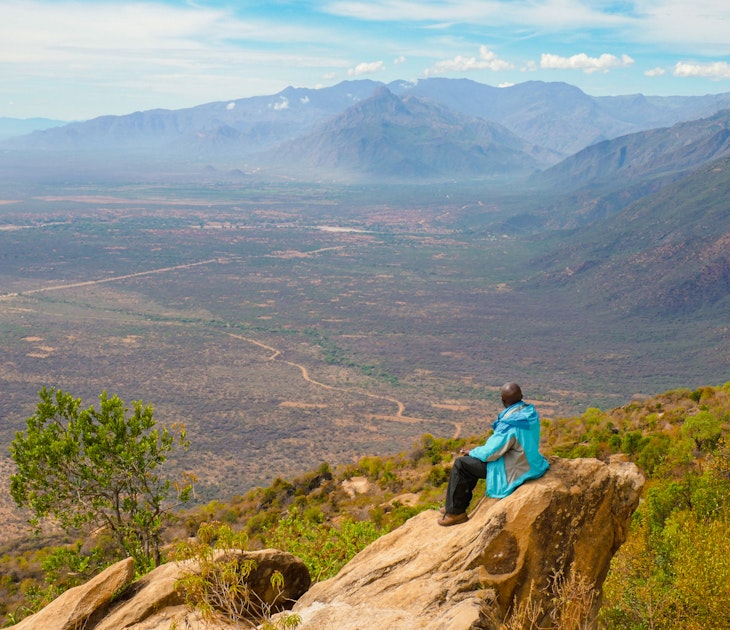
Mar 24, 2023 • 8 min read
It’s easy to forget that Kenya has some wonderful hiking trails. Here are 9 of the best.
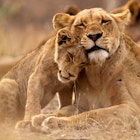
Sep 8, 2022 • 7 min read
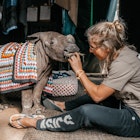
Aug 23, 2022 • 10 min read
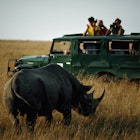
Aug 16, 2022 • 6 min read

Jul 28, 2022 • 7 min read
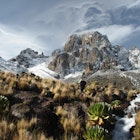
Jun 10, 2022 • 8 min read
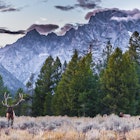
Dec 2, 2021 • 5 min read
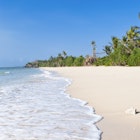
Sep 17, 2020 • 6 min read
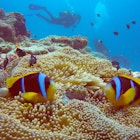
Aug 25, 2020 • 5 min read
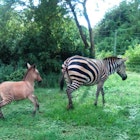
Apr 15, 2020 • 2 min read

- +254 712683442
HOLIDAY SAFARIS IN KENYA'S NATIONAL PARKS
Discover national parks, reserves & conservancies, kenya’s wild animal parks and reserves.
Or perhaps we should say worlds . Because Kenya’s parks cover every sort of landscape – from the red dust plains of Tsavo to the rolling savannahs of the golden Masai Mara Reserve. And there’s also Rift Valley lakes, alpine rainforests, and tropical jungle waiting for your first steps of exploration.
But not all safaris are on dry land. You can even swim, snorkel, and dive amongst dolphins in the brilliant lagoons and corral gardens of our Marine National Parks.
From the Big Cats to Chimpanzees
These amazing parks will bring you up close to brilliant worlds of wildlife –thousands of wildebeests rumbling forward in the Great Migration and prides of lions stalking their flow.
Endangered rhinos and chimps at protected reserves, invite your gaze and delight. Great herds of towering elephants show off their immense tusks at close range. Peacefully grazing antelope, gazelle, and giraffe invite closer inspection on walking and even bicycling safaris.
Picture yourself in a natural setting amongst nature’s most beautiful wildlife and we’ll take you to a park that will surpass even your imagination.

The Great Savannah Parks
Masai Mara National Reserve – You’ve probably heard of the Masai Mara – it’s Kenya’s most popular park, home of the Great Migration of wildebeests and zebras. It’s also where you’ll likely see the most lions and other predators.
The Tsavo Parks: East & West – These are Kenya’s oldest and largest reserves. Under their endless skies and over infinite plains you’ll find Africa’s Big Five, plus dozens of wildlife like giraffe, zebra, baboon, monkey, impala, and even crocodile.
The Elephant Parks
Amboseli National Park – Perhaps the best elephant gazing in the world is found in this photogenic park seated at the base of the great Mt. Kilimanjaro. This small park boasts guaranteed sightings of large-tusked elephants,
Samburu National Park – To the north, this wide-open reserve offers lots of parkland to discover its over 1000 elephants. Plus, opportunities to visit with the local communities of indigenous Samburu People.

The Sanctuary Parks
Lake Nakuru National Park – This beautiful Rift Valley lake offers voluminous birdlife and sometimes even pink flamingoes. But the protected sanctuary here will also bring you opportunities to see one of Kenya’s largest population of endangered black rhinos.
Ol Pejeta Wildlife Sanctuary – A versatile private reserve, Ol Pejeta is home to Africa’s Big Five. But what mainly puts it on the map are its two sanctuaries for threatened rhinos and orphaned and abused chimpanzees.
The Marine Parks
Kisite Mpunguti Marine National Park – Yes, Kenya is also a wildlife paradise–undersea! Want to swim with the dolphins and sea turtles? There are lots of opportunities to snorkel or dive at this great corral barrier reef.
Watamu Marine National Park – Take a water safari through the park’s colorful lagoons and brilliant coral gardens. You’ll find yourself playing amongst turtles, dolphins, and bright tropical fish.

The Unusual Parks
Nairobi National Park – Probably the only one of its kind – go on safari just minutes from downtown Nairobi. Lion, leopard, buffalo, and giraffe can be spotted with the skyscrapers of the city in the distance, framing the scene. Not a zoo or an attraction – it’s the real thing, just a quick trip from your hotel.
Aberdare National Park – This is a cool land of mountain streams, waterfalls, and highland rainforests. You’ll be looking for black rhino, antelope, baboon, monkey, and the bongo – a giant antelope that makes its home in the alpine bamboo forest.
Meru National Park – An often-overlooked park, the empty rolling hills and forest are a private treasure to be enjoyed. This untouristed spot offers lion, elephant, buffalo, zebra, black and white rhino, hippo, and crocodile.
You’ll find these and many more of Kenya’s famous wildlife parks listed below. Click on any one of them to learn further about the wildlife and features you’ll find on your safari to each park. Then contact us here to book your Africa Kenya Safaris adventure .
Our National Parks and Game Reserves

Nairobi National Park

Amboseli National Park

Masai Mara National Reserve
Lake nakuru national park.

Lake Naivasha

Ol Pejeta Wildlife Sanctuary

Tsavo East National Park

Tsavo West National Park

Hell’s Gate National Park

Kakamega Forest Reserve

Lake Bogoria National Reserve

Shimba Hills National Park

Samburu National Reserve

Aberdare National Park

Arabuko Sokoke Forest Reserve

Kisiti Mpunguti Marine Park & Reserve

Meru National Park

Mt. Kenya National Park
Our wildlife conservancies.

Mara North Conservancy

Olare Motorogi Conservancy

Mara Naboisho Conservancy

Ol Kinyei Conservancy

Mara Triangle Conservancy

Mara Siana Conservancy

Lemek Conservancy

Lewa Conservancy
Kenya national park facts.
Want to discover more about Kenya’s captivating national parks? Our quick Q&A guide will help you with useful facts and information about Kenya National Parks and their wildlife, conservation, history, and just what makes them an unmissable safari destinations!
What are the national parks in Kenya?
Kenya is blessed with an incredible array of national parks that showcase the country’s natural wonders and safeguard its diverse wildlife. National parks serve as protected areas that preserve the ecological balance, promote conservation, and offer visitors a chance to experience the beauty of Kenya’s landscapes and wildlife up close.
Kenya national parks offer sanctuary for wildlife
These national parks are carefully managed to ensure the preservation of habitats and the sustainability of wildlife populations. They play a crucial role in protecting endangered species, maintaining biodiversity, and safeguarding the delicate ecosystems that exist within their boundaries. National parks provide a sanctuary for wildlife to thrive and allow for scientific research and educational opportunities.
Stunning landscapes
When visiting Kenya’s national parks, you can expect to be immersed in stunning landscapes that range from vast savannahs to dense forests, from towering mountains to serene lakes. These parks offer a chance to witness the magnificent African wildlife in their natural habitats. From iconic animals like elephants, lions, and rhinos to an incredible array of bird species, the parks are teeming with life and offer unparalleled wildlife viewing experiences.
Fantastic visitor facilities
The national parks also provide various amenities and facilities to enhance visitors’ experiences. These may include well-maintained trails, picnic areas, campsites, lodges, and guided safari tours. Expert guides and rangers are available to ensure the safety of visitors and provide valuable insights into the park’s flora, fauna, and conservation efforts.
Explore Kenya’s national parks with Africa Kenya Safaris
Exploring Kenya’s national parks with Africa Kenya Safaris offers a unique opportunity to immerse yourself in the wonders of the African wilderness. Whether embarking on a thrilling game drive, enjoying a guided walking safari, or simply taking in the awe-inspiring landscapes, these national parks provide an unforgettable adventure while contributing to the preservation of Kenya’s natural heritage.
What are the best national parks to visit in Kenya?
Each national park in Kenya offers distinct attractions, making them appealing to different types of safari holidaymakers. Whether you seek the drama of the wildebeest migration, the majestic presence of elephants, the wild beauty of Tsavo, or the rare encounters in Samburu, Africa Kenya Safaris can tailor your safari experience to your preferences, ensuring an unforgettable adventure in the heart of Kenya’s national parks. Here are some of the best national parks you can visit in Kenya on safari:
1. Maasai Mara National Reserve: Witness the Great Wildebeest Migration
Maasai Mara National Reserve is undoubtedly one of the best national parks to visit in Kenya, offering an extraordinary wildlife spectacle: the Great Wildebeest Migration. Every year, millions of wildebeest, accompanied by zebras and gazelles, embark on a remarkable journey from Tanzania’s Serengeti to Kenya’s Maasai Mara in search of fresh grazing grounds. This awe-inspiring migration, with dramatic river crossings and predator-prey interactions, attracts wildlife enthusiasts and nature photographers from around the world.
2. Amboseli National Park: Encounter Majestic Elephants and Mount Kilimanjaro
For those seeking breathtaking views and iconic wildlife encounters, Amboseli National Park is a must-visit destination. Located at the foot of Mount Kilimanjaro, Africa’s highest peak, Amboseli offers a stunning backdrop for wildlife photography. The park is famous for its large elephant herds, which can be observed up close as they traverse the open plains against the backdrop of Kilimanjaro. Other notable wildlife includes lions, cheetahs, giraffes, zebras, and a variety of bird species.
3. Tsavo National Park: Discover the Vast Wilderness and Red Elephants
Tsavo National Park, divided into Tsavo East and Tsavo West, is a paradise for adventurers and those seeking a more off-the-beaten-path safari experience. With its rugged terrain, diverse landscapes, and incredible wildlife, Tsavo offers a unique safari adventure. The park is renowned for its “red elephants,” which appear dusted in red soil. Visitors can also spot lions, leopards, rhinos, giraffes, and numerous bird species as they explore this vast wilderness.
4. Samburu National Reserve: Encounter Rare Species and Cultural Richness
Samburu National Reserve beckons those in search of unique wildlife encounters and cultural experiences. This park is home to the “Samburu Special Five,” a collection of rare and endemic species that include the Grevy’s zebra, reticulated giraffe, Somali ostrich, beisa oryx, and gerenuk antelope. The reserve’s arid landscapes and meandering rivers provide a stunning backdrop for wildlife sightings. Additionally, visitors can engage with the local Samburu tribe, known for their rich cultural heritage.
How many national parks are there in Kenya?
Kenya is home to a remarkable collection of 25 national parks, each offering unique landscapes, wildlife, and safari experiences. This extensive range of national parks sets Kenya apart as a premier safari destination in Africa. Comparatively, other countries may have a smaller number of national parks, and along with its sheer number of parks, Kenya’s diverse ecosystems and abundant wildlife make it a top choice for nature enthusiasts.
Explore the national parks of Kenya
Exploring the national parks in Kenya may seem like a daunting task, but Africa Kenya Safaris simplifies the process and makes it easy for travelers to embark on a comprehensive safari adventure. With their expertly crafted itineraries and personalized services, Africa Kenya Safaris ensures that visitors can discover the splendour of the best national parks without the stress of planning and logistics.
Top safari experiences with knowledgeable national park guides
Whether you dream of witnessing the Great Wildebeest Migration in Maasai Mara National Reserve, gazing at the snow-capped peaks of Mount Kilimanjaro in Amboseli National Park, or venturing into the untamed wilderness of Tsavo National Park, Africa Kenya Safaris has you covered. Their knowledgeable guides and well-designed safari packages allow you to explore the diversity of Kenya’s national parks with ease and comfort.
Choose Africa Kenya Safaris for the perfect national park experience
By choosing Africa Kenya Safaris, you can seamlessly navigate the vast landscapes and incredible wildlife encounters that each national park has to offer. From the picturesque savannahs of Maasai Mara to the rugged terrains of Tsavo, Africa Kenya Safaris ensures that your journey through Kenya’s national parks is filled with unforgettable moments and lifelong memories.
How much of Kenya is national parks and reserves?
The combined area of Kenya’s national parks and reserves spans over approximately 7.5% of the country’s total land area. This equates to thousands of square kilometers of protected wilderness, offering a sanctuary for a rich variety of flora and fauna. These national parks are carefully designated and managed to maintain the delicate balance of ecosystems and ensure the survival of endangered species.
National parks for sustainable tourism
In comparison to the vastness of Kenya’s overall land area, the extent of national parks showcases the nation’s commitment to conservation and sustainable tourism. With over 50 national parks and reserves, including world-renowned destinations like Maasai Mara, Amboseli, and Tsavo, Kenya presents a remarkable mosaic of protected areas that attract wildlife enthusiasts and nature lovers from around the globe.
Explore national parks with Africa Kenya Safaris
When you embark on a safari with Africa Kenya Safaris, you’ll have the opportunity to explore these incredible national parks, traverse their diverse landscapes, and witness the splendour of wildlife in their natural habitats. Immerse yourself in the vast savannahs, lush forests, and picturesque lakes that make up Kenya’s national parks, and experience firsthand the remarkable conservation efforts that contribute to the preservation of this precious ecosystem.
What animals can be seen in Kenya wildlife parks?
Kenya’s wildlife parks are teeming with a remarkable diversity of animals, making it an exceptional destination for wildlife enthusiasts and safari lovers. From iconic species like elephants, lions, and giraffes to rare and endemic creatures, the parks offer an incredible opportunity to witness the wonders of African wildlife in their natural habitats.
Diverse Wildlife in Kenya’s Parks: A Haven for Nature Lovers
Kenya’s wildlife parks are home to an extensive range of animal species, showcasing the country’s rich biodiversity. The parks encompass vast savannahs, dense forests, picturesque lakes, and diverse ecosystems, providing habitats for a wide array of wildlife. Visitors can witness thrilling predator-prey interactions, captivating birdlife, and the majestic presence of large herbivores roaming the plains. The parks are carefully managed to ensure the conservation of these precious species and their habitats.
Ten Must-See Animals in Kenya’s Wildlife Parks
- Lions : Kenya’s parks are renowned for their lion populations, offering fantastic opportunities to observe these apex predators in action.
- Elephants : Amboseli National Park and Tsavo National Park are known for their large elephant herds, providing unforgettable encounters with these gentle giants.
- Giraffes : The graceful giraffes can be spotted in various parks, including Nairobi National Park and Maasai Mara, offering a chance to marvel at their towering presence.
- Cheetahs : Maasai Mara and Amboseli National Park are ideal for spotting cheetahs, the world’s fastest land animals, showcasing their incredible speed and agility.
- Rhinos : Ol Pejeta Conservancy and Lake Nakuru National Park are key locations for rhino conservation, providing opportunities to witness these endangered species up close.
- Wildebeest : Maasai Mara National Reserve hosts the epic Great Wildebeest Migration, where millions of these iconic animals traverse the plains in search of greener pastures.
- Zebras : Often seen mingling with wildebeest during the migration, zebras add a striking contrast to the savannah landscapes and are abundant in many parks.
- Hippos : Lakes and rivers within parks, such as Lake Naivasha and Tsavo, are home to large hippo populations, allowing for close encounters with these fascinating creatures.
- Leopards : While elusive, leopards can be found in parks like Maasai Mara and Samburu, rewarding patient safari-goers with glimpses of their unparalleled beauty.
- African Buffalo : These formidable beasts can be observed in several parks, including Nairobi National Park, showcasing their strength and resilience in the African wilderness.
Embarking on a safari with Africa Kenya Safaris offers an opportunity to encounter these incredible animals and more. Their expert guides and well-planned itineraries ensure that visitors can witness the diverse wildlife of Kenya’s parks while gaining a deeper understanding of the importance of conservation and sustainable tourism.
What landmarks and natural wonders can be seen in Kenya’s national parks?
Kenya’s national parks are not only home to incredible wildlife but also boast a diverse array of landmarks and natural wonders that will leave visitors in awe. From majestic mountains and scenic lakes to dramatic gorges and ancient archaeological sites, these parks offer a captivating blend of natural and cultural marvels. Embarking on a safari in Kenya provides a unique opportunity to explore these stunning landscapes and discover the hidden gems within each national park.
Diverse Landscapes and Natural Wonders of Kenya’s National Parks
Kenya’s national parks encompass a wide range of landscapes, showcasing the country’s geographical diversity. From the iconic savannahs of Maasai Mara to the rugged terrains of Mount Kenya National Park, visitors are treated to a mesmerizing tapestry of landscapes. These parks also feature extraordinary natural wonders that captivate the imagination and provide a deeper appreciation for the beauty of the natural world.
Ten Must-See Landmarks and Natural Wonders in Kenya’s National Parks
- Mount Kilimanjaro : Though technically located in Tanzania, Mount Kilimanjaro’s snow-capped peaks can be seen from Amboseli National Park, creating a breathtaking backdrop for wildlife sightings.
- Great Rift Valley : Stretching across several parks, including Lake Nakuru and Hell’s Gate, the Great Rift Valley offers dramatic vistas, hot springs, and unique geological formations.
- Lake Naivasha : This freshwater lake in Hell’s Gate National Park is a paradise for birdwatchers, with a rich avian population and opportunities for boat safaris.
- Hell’s Gate Gorge: A remarkable feature within Hell’s Gate National Park, this narrow gorge offers adventurous activities like hiking, rock climbing, and cycling.
- Mount Kenya : Africa’s second-highest peak, Mount Kenya National Park is a UNESCO World Heritage Site, featuring diverse ecosystems, pristine lakes, and unique montane flora.
- Chyulu Hills : Located within Tsavo West National Park, the Chyulu Hills are a volcanic mountain range characterized by lush greenery, ancient lava flows, and hidden caves.
- Lake Turkana : Also known as the “Jade Sea,” Lake Turkana in Sibiloi National Park is the world’s largest alkaline lake, known for its striking turquoise color and fossil-rich shores.
- Sheldrick Falls : Situated in Tsavo East National Park, these captivating falls cascade down rocky cliffs, providing a refreshing oasis amidst the arid landscapes.
- Pillar Rock : Found in Tsavo West National Park, Pillar Rock is an impressive granite outcrop that serves as a natural landmark and offers panoramic views of the surrounding plains.
- Koobi Fora : Located within Sibiloi National Park, Koobi Fora is an important archaeological site renowned for its fossil discoveries, including early hominid remains.
Exploring these remarkable landmarks and natural wonders is made easy with Africa Kenya Safaris. Their expert guides and well-crafted itineraries ensure that visitors can experience the diverse landscapes and cultural treasures that Kenya’s national parks have to offer, creating memories that will last a lifetime.
Is there accommodation in Kenya national parks?
Yes, and staying within Kenya’s national parks is a truly immersive experience, allowing visitors to fully embrace the natural wonders and wildlife that these pristine environments have to offer. Accommodation options within the parks provide an opportunity to connect with nature on a deeper level, offering breathtaking views, exclusive access to wildlife, and a sense of tranquility that is hard to replicate elsewhere. Africa Kenya Safaris offers a range of unique and comfortable accommodations within the national parks, ensuring an unforgettable stay amidst the beauty of the African wilderness.
Immersive Accommodation in Kenya’s National Parks
Staying within a national park offers numerous advantages, including the chance to witness breathtaking sunrises and sunsets over the savannah, the convenience of being in close proximity to wildlife-rich areas, and the serenity of being surrounded by untouched natural landscapes. Whether it’s waking up to the distant roar of lions or enjoying a sundowner with elephants grazing nearby, accommodation within Kenya’s national parks provides an authentic and unforgettable safari experience.
Unique Places to Stay with Africa Kenya Safaris
- Tented Camps in Maasai Mara : Experience the charm of traditional safari accommodation with luxurious tented camps nestled in the Maasai Mara National Reserve. These camps offer an authentic bush experience while ensuring modern comforts and conveniences. Imagine falling asleep to the sounds of wildlife just beyond your canvas walls and waking up to stunning views of the savannah. With attentive staff, delectable cuisine, and proximity to wildlife-rich areas, these tented camps offer an unforgettable stay in the heart of Maasai Mara.
- Salt Lick Safari Lodge (Taita Hills Wildlife Sanctuary) : Situated in the heart of a private wildlife sanctuary, this unique lodge offers exceptional views and an immersive safari experience. The lodge’s elevated walkways allow for close encounters with animals as they come to drink from the nearby waterholes. Guests can enjoy comfortable accommodation, delectable cuisine, and thrilling game drives in this remarkable sanctuary.
- Ashnil Samburu Camp (Samburu National Reserve) : Located in the arid landscapes of Samburu National Reserve, this camp offers a blend of modern comfort and traditional African charm. The spacious tents feature en-suite bathrooms and private balconies overlooking the Ewaso Nyiro River, where elephants and other wildlife come to quench their thirst. The camp also offers cultural experiences with the local Samburu tribe, adding an enriching dimension to the safari adventure.
Africa Kenya Safaris ensures that these accommodations within the national parks are carefully selected to provide guests with the utmost comfort, convenience, and immersion in the natural surroundings. With their expertise in crafting personalized itineraries, visitors can choose from a range of accommodation options that suit their preferences and make their stay in Kenya’s national parks truly extraordinary.
What new and unique activities can be enjoyed in Kenya’s national parks?
Exploring Kenya’s national parks goes beyond traditional game drives, offering a plethora of new and unique activities that allow visitors to truly immerse themselves in the natural wonders of this captivating country. From thrilling adventure pursuits to cultural encounters, these activities provide an enriching and unforgettable safari experience. Africa Kenya Safaris offers a range of exciting and curated activities that add an extra layer of adventure and exploration to your national park visit.
New and Unique Activities in Kenya’s National Parks: Elevating Your Safari Experience
- Hot Air Balloon Safaris in Maasai Mara : Embark on an exhilarating hot air balloon safari over the vast plains of Maasai Mara National Reserve . Drifting silently above the savannah at dawn, you’ll witness breathtaking panoramic views and have the opportunity to spot wildlife from a unique vantage point. As the golden sunlight blankets the landscape, you’ll capture unforgettable moments and create memories that will last a lifetime. After the balloon ride, enjoy a delicious bush breakfast in the wilderness, surrounded by the beauty of nature.
- Walking Safaris in Aberdare National Park : Lace up your boots and set off on a walking safari in Aberdare National Park, immersing yourself in the sights, sounds, and scents of the bush. Accompanied by experienced guides, you’ll navigate through diverse ecosystems, following animal tracks and discovering hidden gems along the way. This intimate and eco-friendly experience allows you to observe wildlife up close, learn about the intricate details of the ecosystem, and appreciate the smaller wonders of nature that may go unnoticed on a typical game drive.
- Cultural Encounters in Amboseli National Park : Experience the rich cultural heritage of the Maasai people with a visit to a Maasai village near Amboseli National Park. Engage in authentic interactions with the Maasai community, learn about their traditional way of life, and gain insights into their customs, ceremonies, and crafts. From traditional dances and songs to witnessing the Maasai’s deep connection with their land and wildlife, this cultural encounter offers a unique perspective on the symbiotic relationship between humans and nature.
Africa Kenya Safaris ensures that your national park experience is enhanced with these new and unique activities. Whether you’re soaring high above the savannah in a hot air balloon, embarking on a walking safari through the wilderness, or immersing yourself in the vibrant Maasai culture, these activities provide a deeper connection with Kenya’s natural and cultural treasures.
Why did the government of Kenya establish national parks and reserves?
The establishment of national parks and reserves in Kenya by the government serves a vital purpose in preserving the country’s natural treasures, safeguarding wildlife, and promoting sustainable tourism. These protected areas are a testament to Kenya’s commitment to conservation, ensuring the long-term survival of its diverse ecosystems and iconic wildlife species. The government of Kenya recognizes the significance of these natural habitats and has taken proactive measures to establish national parks and reserves for various important reasons.
Preserving Biodiversity and Wildlife
One of the primary reasons for establishing national parks and reserves is to conserve the rich biodiversity and safeguard the remarkable wildlife found within Kenya’s borders. These protected areas act as havens for numerous endangered species, providing them with secure habitats and protection from human activities such as poaching and habitat destruction. By designating specific areas as national parks and reserves, the government aims to maintain ecological balance and ensure the survival of diverse plant and animal species for future generations.
Promoting Conservation and Research
National parks and reserves serve as living laboratories for scientific research and conservation efforts. These areas provide researchers, scientists, and conservationists with invaluable opportunities to study and understand various ecosystems, conduct wildlife research, and develop effective conservation strategies. By promoting research and conservation initiatives, the government of Kenya aims to enhance knowledge about the natural world and implement measures to protect and sustainably manage its natural resources.
Supporting Sustainable Tourism
Another crucial objective behind the establishment of national parks and reserves is to promote sustainable tourism in Kenya. These protected areas attract millions of tourists each year, who come to witness the breathtaking landscapes, incredible wildlife, and unique cultural experiences. By conserving the natural environment and wildlife habitats, the government ensures the long-term viability of the tourism industry, which plays a significant role in the country’s economy. National parks and reserves provide opportunities for responsible tourism, where visitors can appreciate nature’s wonders while supporting local communities and contributing to conservation efforts.
The government of Kenya’s commitment to establishing national parks and reserves reflects its dedication to environmental stewardship, wildlife conservation, and sustainable tourism. These protected areas serve as a testament to Kenya’s natural beauty and provide a platform for safeguarding its diverse ecosystems, preserving wildlife habitats, and offering unforgettable experiences for visitors from around the world.
Who owns the national parks in Kenya?
The national parks in Kenya are owned and managed by the Kenyan government. The government of Kenya, through various agencies such as the Kenya Wildlife Service (KWS), plays a crucial role in overseeing the administration, conservation, and protection of these invaluable natural assets. The ownership of national parks signifies the government’s commitment to safeguarding Kenya’s wildlife and ecosystems for the benefit of present and future generations.
Duties of the Kenya Wildlife Service
As the custodian of these national parks, the Kenyan government formulates policies, regulations, and management plans to ensure the effective preservation and sustainable use of these protected areas. The Kenya Wildlife Service , a government agency established specifically for wildlife conservation and management, works diligently to enforce these policies and safeguard the integrity of the national parks.
Preserving Kenya’s heritage
The government’s ownership of national parks reflects its dedication to preserving Kenya’s natural heritage and fostering responsible tourism. By having ownership and control over these protected areas, the government can implement measures to combat illegal activities, such as poaching and habitat destruction, and enforce regulations that promote sustainable practices.
Protecting Kenya’s national parks for future generations
In collaboration with various stakeholders, including local communities, conservation organizations, and tour operators like Africa Kenya Safaris, the government strives to protect the national parks while also ensuring that they contribute to the socio-economic development of the country. This ownership model allows for the effective management of the parks and facilitates partnerships that support conservation efforts, community engagement, and sustainable tourism practices.
How do Kenya national parks help conservation?
Kenya’s national parks play a vital role in the conservation of its rich biodiversity and the protection of its iconic wildlife. These protected areas are instrumental in safeguarding natural habitats, implementing conservation initiatives, and promoting sustainable practices. Here’s how Kenya national parks contribute to conservation efforts:
Preserving Wildlife and Habitats
National parks provide crucial sanctuaries for a wide array of wildlife species, including endangered and threatened ones. By designating specific areas as protected, the government ensures the preservation of habitats essential for the survival and breeding of these animals. National parks act as safe havens, safeguarding wildlife from human encroachment, poaching, and habitat loss.
Anti-Poaching and Wildlife Protection
Kenya national parks are at the forefront of the fight against poaching and illegal wildlife trade. Dedicated anti-poaching units, supported by the government and conservation organizations, work tirelessly to combat poaching activities within the parks. They employ various strategies such as increased surveillance, ranger patrols, and collaboration with local communities to detect and deter illegal activities. By actively protecting wildlife, national parks contribute significantly to the conservation and preservation of Kenya’s natural heritage.
Conservation Education and Research
National parks in Kenya serve as educational platforms, raising awareness about the importance of wildlife conservation and environmental stewardship. These parks offer visitors the opportunity to learn about the diverse ecosystems, wildlife behavior, and conservation challenges through interpretive centers, guided tours, and educational programs. Additionally, national parks provide valuable sites for scientific research, enabling scientists and researchers to study wildlife, monitor ecosystems, and develop strategies for long-term conservation.
Promoting Sustainable Tourism
Kenya national parks strike a delicate balance between conservation and tourism. They provide unique opportunities for visitors to witness the country’s breathtaking landscapes and remarkable wildlife while promoting responsible and sustainable tourism practices. By generating revenue through tourism activities, national parks contribute to the local economy, empowering communities and creating incentives for conservation efforts. Sustainable tourism initiatives ensure that visitor activities have minimal impact on the environment, while supporting local communities and conservation projects.
Through these collective efforts, Kenya national parks play a pivotal role in conserving wildlife, protecting habitats, raising awareness, and promoting sustainable practices. Their commitment to conservation is essential in preserving Kenya’s natural treasures for future generations to enjoy.

Let’s Get Started
Our clients
Driving technology for leading brands, our accreditations and booking security.
Africa Kenya Safaris Ltd is licensed under the Kenya Tourism Regulatory Authority ( TRA ) . It is Bonded member No. AS/720 of the Kenya Association of Tour Operators ( KATO ) , Ecotourism Kenya , East African Wildlife Society, and the African Travel and Tourism Association ( ATTA )

- About Africa Kenya Safaris
- Safari guides
- About Kenya
- About Nairobi
- Sustainability
- 2-4 Day Nairobi Safari Tours
- 5-8 Day Nairobi Safari Tours
- Masai Mara Kenya Safaris
- Amboseli Kenya Safaris
- Kenya Flight Safaris
- Group Tours from Nairobi
- Group tours from Kenya beach
- Nairobi Excursions
- Nairobi Day Trips
- Nairobi to Diani Beach Tours
- Diani One Day Excursions and Safaris
- Safaris From Diani Beach
- Kenya Beach to Nairobi Safaris
- Kenya Safaris and Diani Beach
- Kenya-Tanzania Safaris
- Tanzania day safaris
- Mountain Climbing
- Customized Africa safaris
- Hot Air Balloon safari
- Masai Village cultural visit
- Nairobi to Mombasa Madaraka Express SGR Train schedule
- Bush dining on your African safari
- Africa Beach Holidays
- Wildebeest Calving Safari
- The Great Wildebeest Migration
- Bird watching safaris
- Tree planting
- Lion And Rhino Tracking
- Kenya & Tanzania Photographic safaris
- Family Safaris
- Honeymoon safaris
- Wellness safaris
- Booking Terms
- What to pack on an African safari
- Kenya E-visa
- Tanzania E-Visa
- Uganda E-Visa
- Rwanda E-visa
- Kenya Wildlife Parks
- Tanzania Wildlife Parks
- Tanzania safari guide
- 4 x 4 Safari Jeeps
- Safari Lodges & Tented Camps
- Flight safaris Baggage policy
- Watch our podcasts
Book This Tour
Personal information.
All fields with an asterisk (*) are required
Tour Information
Help us create your perfect safari tell us about your travel choices, any unique experiences you desire, and upcoming special occasions..


- Ready-made safaris
- Experiences
- Special offers
- Accommodation
- Start planning
- Booking terms
- When to go on safari - month by month
- East or Southern Africa safari?
- Solo travellers
- Women on safari
- Accommodation types & luxury levels
- General tips & advice
- All stories
- Afrika Odyssey Expedition
- Photographer of the Year
- Read on our app
- 2024 entries
- 2024 details
- 2024 prizes
- 2024 entry form
- 2023 winners
- Collar a lion
- Save a pangolin
- Rules of engagement
- Job vacancies
- Ukuri - safari camps
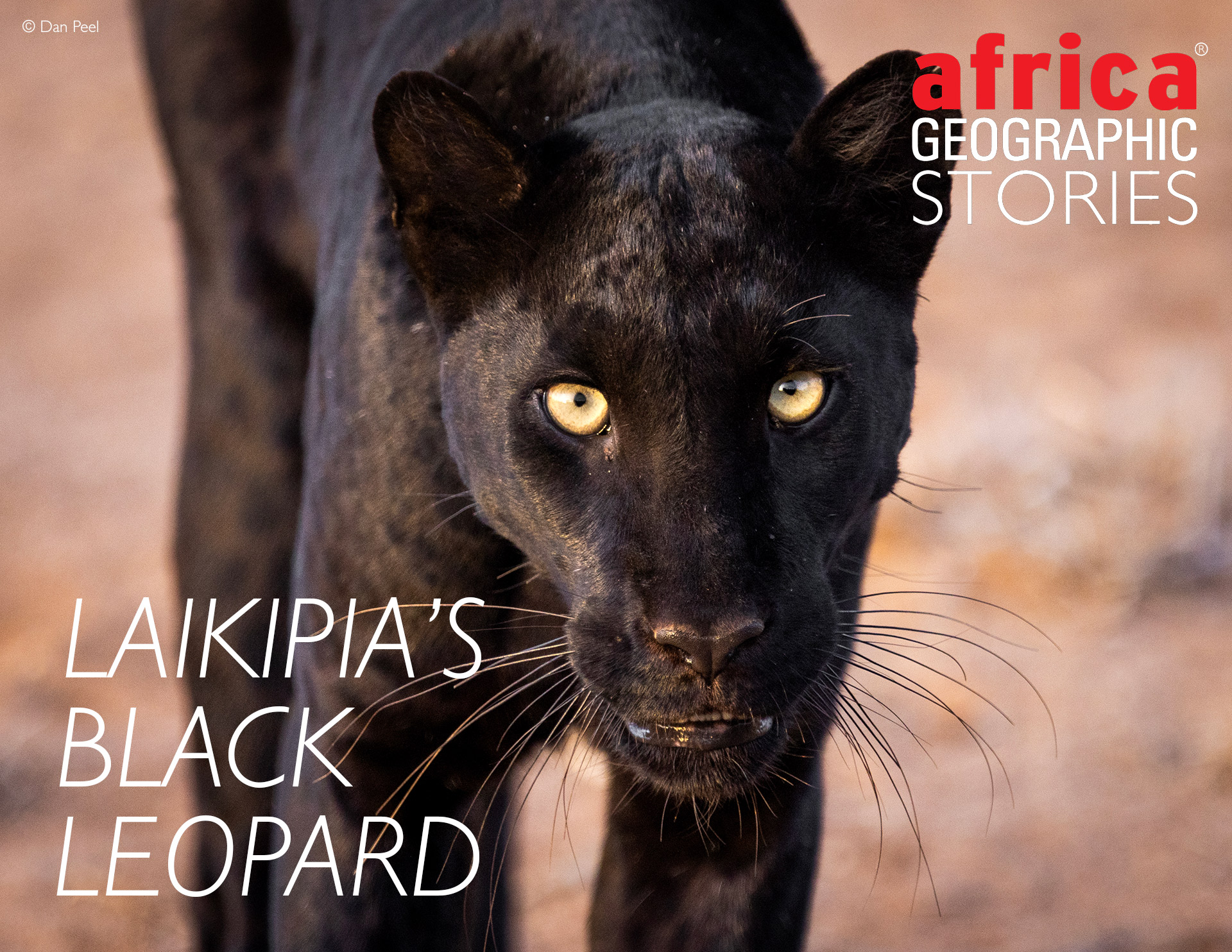
The incredible black panther of Laikipia

by Dan Peel
Thursday, 7 December 2023

Seeing a black leopard in the wild is an extraordinary feat. A wild encounter that dreams are made of. But tales of this magnificent creature reverberate from a small, wild county in Kenya. Dan Peel has spent hours with this rare black panther in Laikipia. He shares his story – and incredible photos – of this famous leopard.
Gazing out over the expansive vistas of Laikipia, a profound sense of tranquillity washes over me. A sudden chill in the air brushes against my face, descending from the snow-capped peaks of Mount Kenya in the distance. The sun falls rapidly towards the horizon in this part of the world; the rocky ridge I am sitting on in Laikipia Conservancy, Kenya , is just under 100km north of the equator. It’s the onset of the golden hour, my favourite time of day. Not only because the light throws a beautiful golden hue over everything it touches, but in this specific region, it signifies the leopard hour.
I watch the colossal storm clouds gather over the western horizon, above the scar traversing Africa – the Great Rift Valley. Emerging from the river below, a herd of elephants don their “black socks”, showing me they have been wading through the chilly, brown waters of the Ewaso Narok River. The scene exudes quintessential African charm; my thoughts wander, and I am in my happy place.
Suddenly, a single nasal whistle pierces the stillness, jolting me back to full alertness. Peering down the valley beneath, I hear another whistle, the distinctive alarm call of the dik-dik, a small knee-high antelope that thrives in this region.
This is precisely what I’ve been waiting for – an alarm call, the most dependable way to locate leopards in Laikipia. Scanning the valley below, the river, the luggas (Swahili for gullies), and the dark rocky outcrops. Inspecting every bush meticulously, I strain my eyes until they water, momentarily lowering my binoculars before resuming my search. I’m determined to pinpoint the dik-diks responsible for the call and, hopefully, the reason for their distress. A quick movement catches my eye, a mysterious shift in the scenery I can’t see. My entire focus narrows onto the specific bush that drew my attention. I hold my gaze there, unable to identify anything unusual. But still, I wait; I have been sitting on this ridge all afternoon waiting for this exact moment. In an instant, the dik-dik alarms intensify. In this area, I know what that means. There is a leopard on the move. Now to find it.
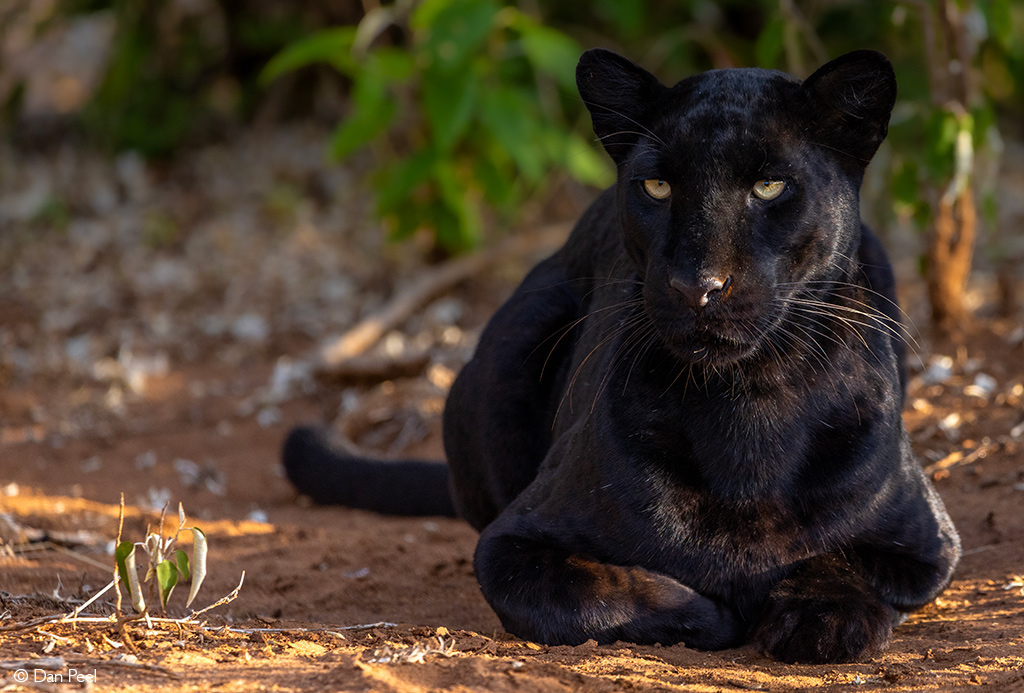
The dark basalt rocks beneath the bush begin to move – a moving shadow. Immediately, the shape takes form. And there she is, as if she was never in hiding, strolling out of the trees into the open. The dik-diks redouble their efforts to let the world know there is danger lurking. But they are not even given a momentary glance.
Holding her tail high in the classic arch of a leopard at ease, she glides across the open ground down towards the river – pure grace and beauty held like a coiled spring of unfathomable power. There is no animal, in my opinion, that commands as much respect.
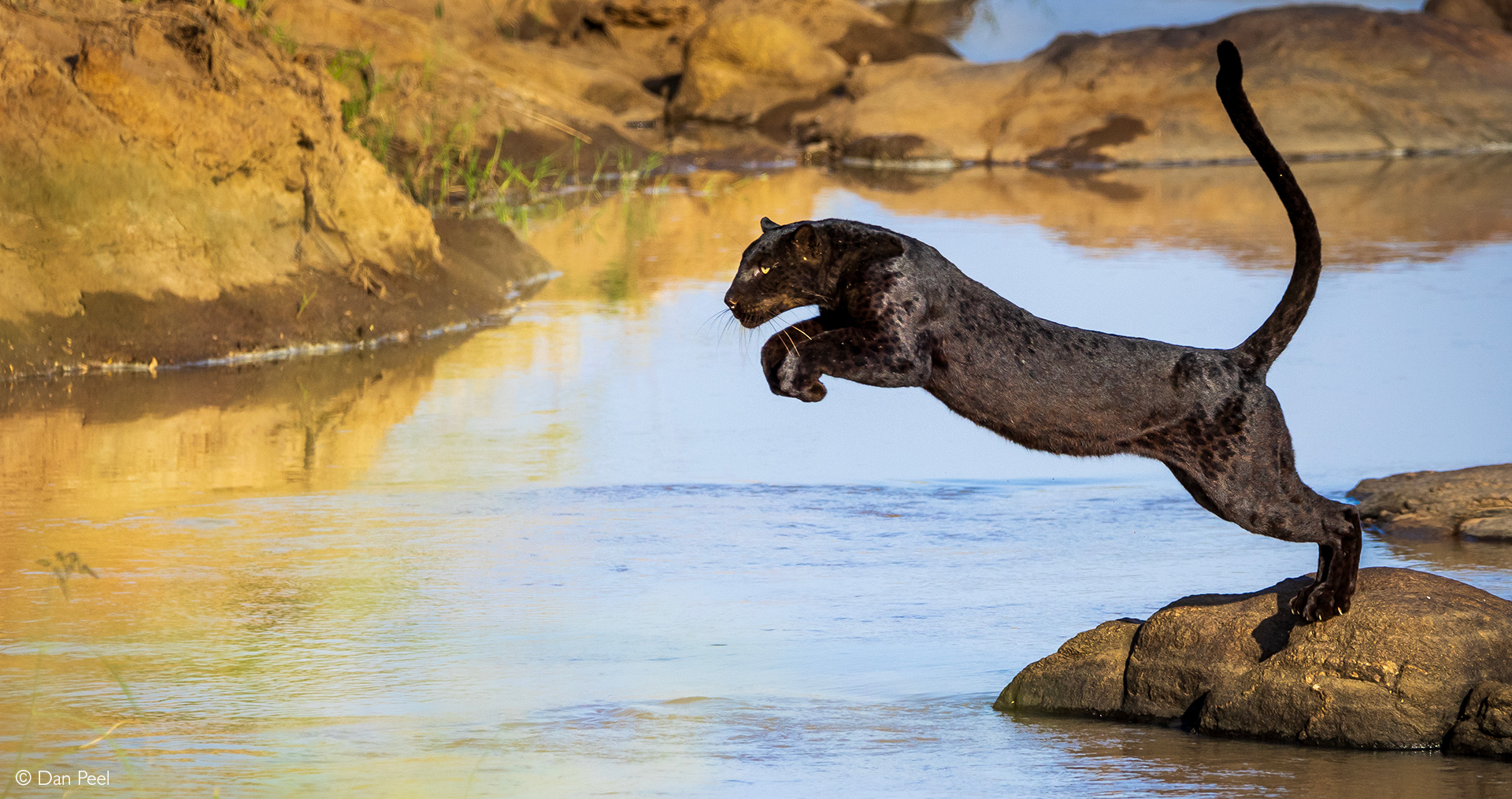
But this is no ordinary leopard; this is a black leopard. A rare genetic variety, this black leopard calls Laikipia home. In fact, Laikipia is home to the largest known population of black leopards. This is an animal that I had previously only ever dreamt about, a mythical creature that was beyond any chance of sighting.
This individual, I know well. This is Giza, the black leopard of Laikipia. I have been privileged enough to spend the last two years of my life following her, photographing her, watching and learning from her incredible journey from a playful cub into a lethal huntress.
My experience in the African bush started as a young boy growing up on a wildlife farm in Zimbabwe. I had always been fascinated by everything natural. But above all, leopards held my interest. Something about their enigmatic presence, piercing eyes, and ability to unleash unbelievable power or just as quickly slink into the bush without a trace.
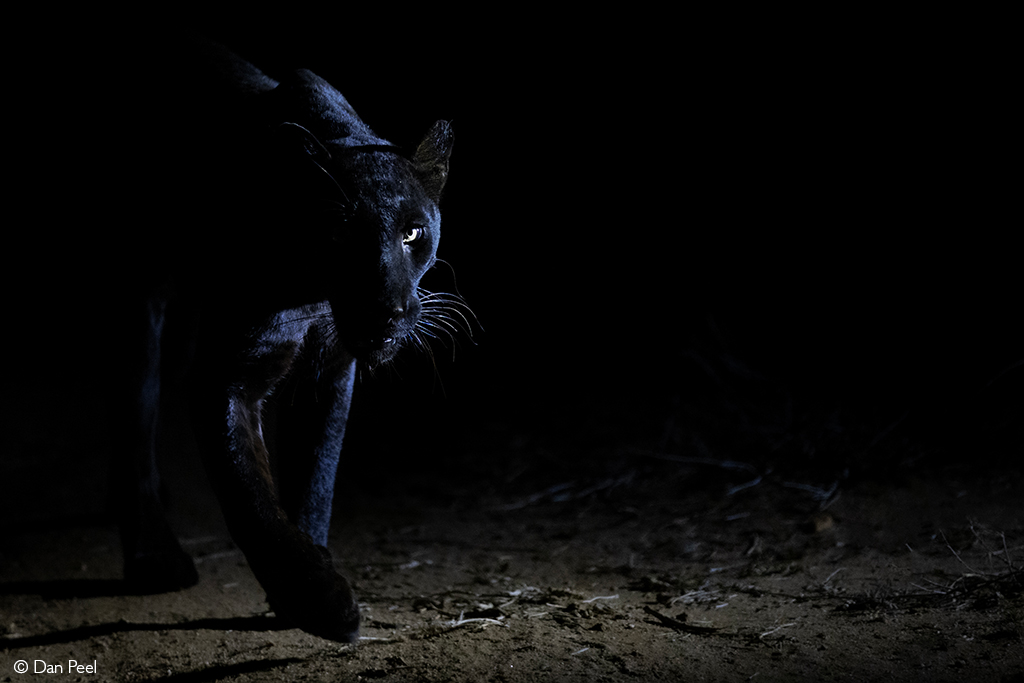
Throughout my decade and a half of guiding, I had heard whispers of the existence of black leopards in Africa. Still, there was never enough to hold faith in – rumours of a fleeting glimpse or an unidentifiable blurry camera-trap photo. It was not until my career took me to Laikipia that these rumours became more credible. More than a myth, these were real animals, rare and elusive, but real.
A culmination of incredibly fortunate events led us to become acquainted with Giza Mrembo – which is the full name we at Laikipia Wilderness Camp gave her. Meaning ‘the beautiful darkness’ in Swahili, it is a name that she lived up to in the next two years we got to know her.
In early 2022, the drought had ravished this part of Kenya. Many plains game species moved large distances in search of even the smallest patch of grazing, or perished in their efforts. This mass devastation was hard to watch, but it did bring about a unique situation. In times like this, predators thrive – on a seemingly unlimited supply of meat – and their numbers grow. Amid this chaos, Giza’s mother, a regular golden spotty leopard, introduced us to her one-year-old cub, Giza. And so this incredible journey began.

When we first crossed paths with Giza, she was a young leopard, still heavily reliant on her mother. She and her mother had been feasting on one of the unfortunate casualties of the drought. My initial encounter with her was a mix of excitement and deep emotion, a feeling impossible to put into words adequately. I had dreamt of encountering such an animal since I was a young boy.
Initially, she allowed only a brief glimpse, but over time, she grew bolder. Taking cues from her mother, she appeared at ease in our presence.
Giza’s life has been difficult, marked by close bonds and formidable challenges. Following in her mother’s footsteps, she has evolved into a skilled huntress, albeit with a unique technique. Her jet-black coat, advantageous in dense forests, or under thick undergrowth or moonless nights, offers little camouflage in the rugged acacia shrubland of this African region.
Leopards are renowned masters of camouflage, but Giza has never been one to blend in; she seems to have never grasped the concept. Her hunting strategy revolves around covering as much ground as possible, relying on surprise rather than stealth. She moves swiftly from one bush to another, hoping to catch a dik-dik off guard and pounce before it can successfully escape. She has skillfully harnessed the dense population of dik-diks to her advantage.
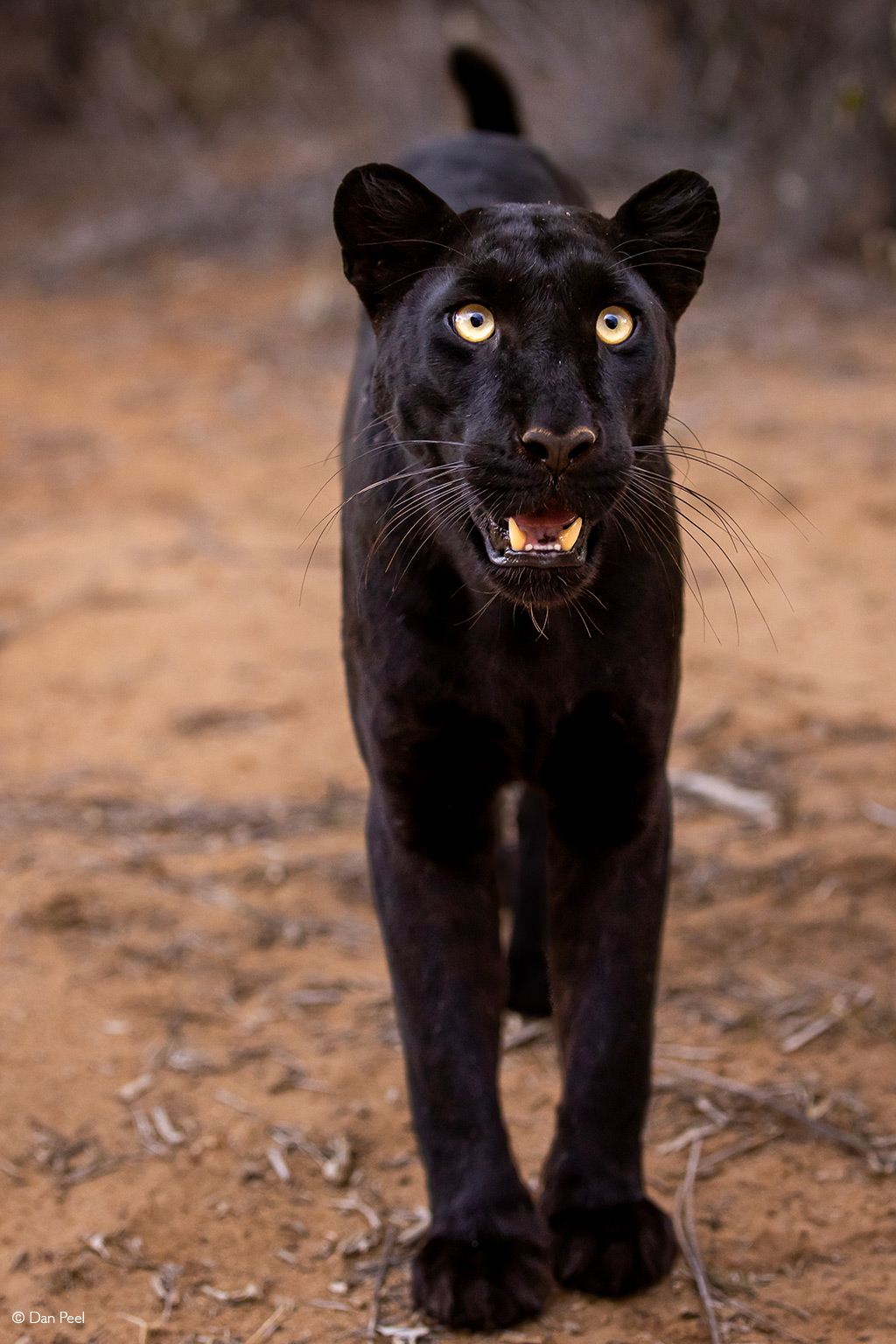
With such an efficient hunting technique, her prowess did not go unnoticed. After numerous nights of observing this, the resident male leopard in the area figured out that he could secure a free meal nearly every night by following Giza. His size and strength left poor Giza no chance, and the persistent male became an increasing problem for her. Losing almost every kill she made dealt a devastating blow, causing her condition to deteriorate. As challenging as it was to witness, it was nature’s way, and I had to let it unfold.
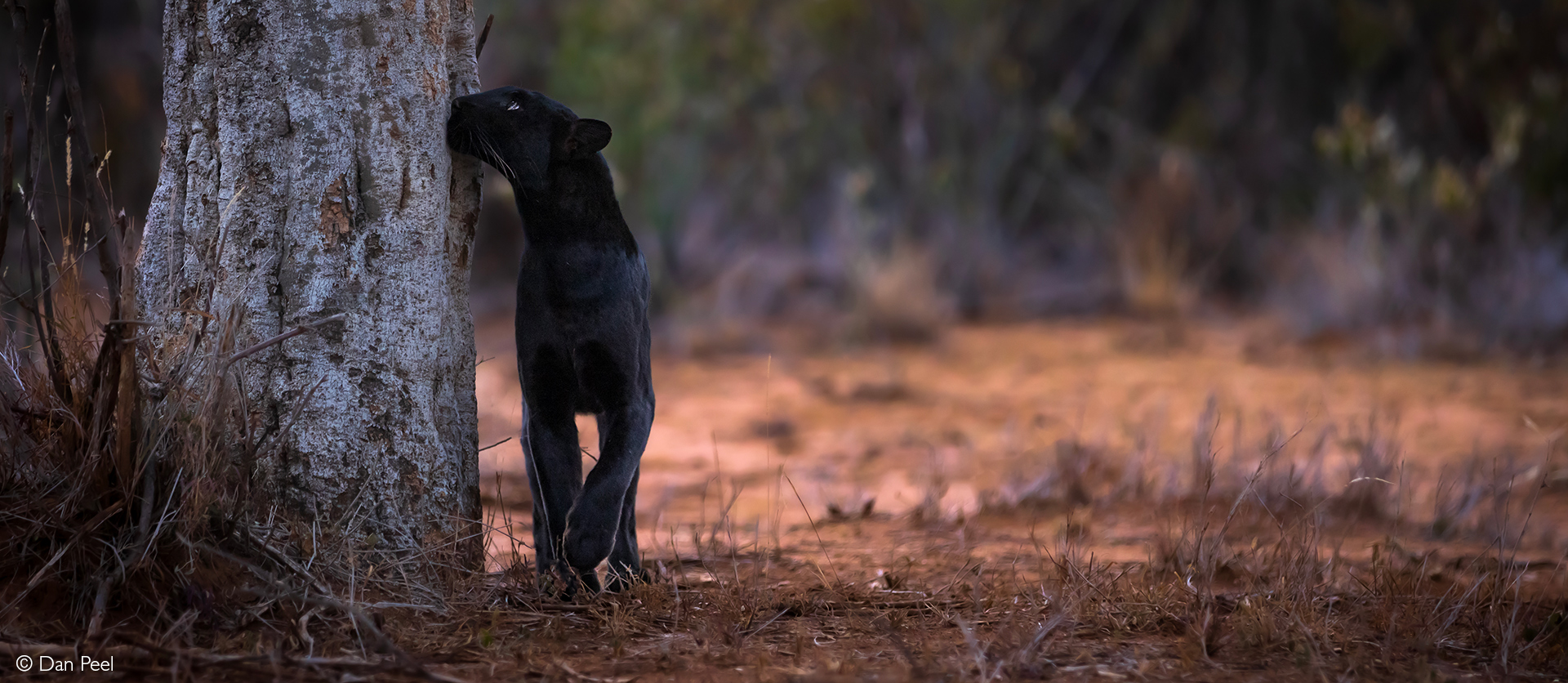
After a few months of this struggle, Giza was visibly ailing. Her ribs and spine were showing. She devised a solution to her predicament as a tribute to her undeniable tenacity. She didn’t choose to challenge her male competitor because she couldn’t, or to abandon her territory in an area already teeming with leopards. Instead, her answer was to become an even more proficient hunter, and so she did. Almost overnight, she began killing two dik-diks each night, the first presented reluctantly as a peace offering to appease the male and the second to sustain herself.
The undeniable adaptability and resilience of Giza, the black leopard, is awe-inspiring. Beyond her breathtaking beauty, her presence and energy set her apart from any other leopard I have had the privilege of encountering.

Through a blend of vivid photographs and compelling narratives, the book follows Giza’s extraordinary evolution from a curious cub to a powerful huntress.
Amidst the harsh realities of the African wilderness, Giza learns to navigate her environment with skill and finesse, utilising the cover of darkness and moonless nights to her advantage.
You can follow Dan on Instagram here . Or, to purchase a copy of Moving Shadows, click here .
HOW TO GET THE MOST OUT OF AFRICA GEOGRAPHIC:
- Travel with us . Travel in Africa is about knowing when and where to go, and with whom. A few weeks too early / late and a few kilometres off course and you could miss the greatest show on Earth. And wouldn’t that be a pity? Browse our ready-made packages or answer a few questions to start planning your dream safari .
- Subscribe to our FREE newsletter / download our FREE app to enjoy the following benefits.
- Plan your safaris in remote parks protected by African Parks via our sister company https://ukuri.travel/ - safari camps for responsible travellers

Friend's Email Address
Your Email Address
[email protected] | +230 452 3731

- Information
Kenya – Black Leopard Photo Safari II 2024
Fully Booked
8 May 2024 – 15 May 2024
ORYX is proud to present you with a wildlife photo safari to the Laikipia region of Kenya, as we embark on an exciting journey to photograph one of the most special big cats in Africa – the gorgeous Black Leopard.
Until recently, the chances of spotting a black leopard in the wild in Africa have been close to impossible. “Black” leopards are the same species as typically patterned leopards, but are darker as a result of a recessive gene that causes an excess of melanin in their coats. This beautiful colour form is best known from the shaded forests of Asia, however a few sporadic sightings in Ethiopia and Kenya over the last 2 decades have been just that, and until now, there have been no realistic, consistent options to make this gorgeous colour form accessible to the itinerant photographer.
That is until 2018, when a small population of black leopards were discovered on a series of camera trap images in the Laikipia. Over the last 5 years, guides and trackers have spent hours understanding the movement and territories of these animals, which has resulted in regular, consistent sightings of these rare big cats.
This photo safari is designed to take you to the heart of a black leopard territory to photograph a remarkable, beautiful colour form few have had the privilege to see, let alone photograph.
Why this Photo Tour is for You
Rare and unique wildlife.
The Laikipia area is home to some of the continent’s most sought-after wildlife species, including Leopard, African Wild Dog, Reticulated Giraffe and Grevy’s Zebra. Of primary importance is the of course the dark colour form of Leopard – the truly stunning “Black” Leopard, which has made Laikipia Wilderness Camp famous!
Our camp of choice is nestled within a private concession, with very low vehicle density so that it provides an exclusive photo safari experience in a true African wilderness region. An added benefit is being able to exit the vehicle, when it is deemed safe to do so, to photograph at ground level.
Night Game Drives
Our schedule will include a morning photography session, followed by an afternoon session that stretches into the evening before concluding around 20h00 (just prior to dinner). This gives us a wonderful opportunity to photograph nocturnal species and to increase our chances of photographing leopards, which frequently become more active as the shroud of darkness envelopes the savanna!
Private Game Drive Vehicle
This photo safari includes a local driver/guide, tracker, and private safari vehicle for the group
Guided Experience
The guides and trackers based in Laikipia have been following and studying the movements of black leopards for roughly 5 years and have an incredible knowledge base to help increase our odds of spotting a black leopard.

ORYX LEADER Daniel Bailey
- Destination Kenya
- Departure Nairobi
- person sharing US$8,995
- Single Supplement Single supplement charge for first single is US$175, second and third single supplement charge is US$1,625
- Photographic Highlights Black Leopard, Endangered Grevy’s Zebra and Reticulated Giraffe, Lion, Elephant, chances for African Wild Dog
- Guide Daniel Bailey
From our gallery
Best of Laikipia

Day 1: Arrival in Nairobi and transfer to accommodation
Day 2: scheduled flight from wilson airport to laikipia, days 3 to 7: laikipia, day 8: scheduled flight from laikipia to wilson airport and depart.

- Title Please Select... Mr. Mrs. Ms. Dr.
- Name * First Last
- Your Enquiry *
- Please include me
- Email This field is for validation purposes and should be left unchanged.
You don't have permission to register

- Name * Title Mr. Mrs. Ms. Dr. Prof. First Name Last Name
- Sign up for the Recommended Tour Mailer (required)
- Comments This field is for validation purposes and should be left unchanged.

Destination
- Sao Tome & Principe
- South Africa
- New Zealand
- French Polynesia
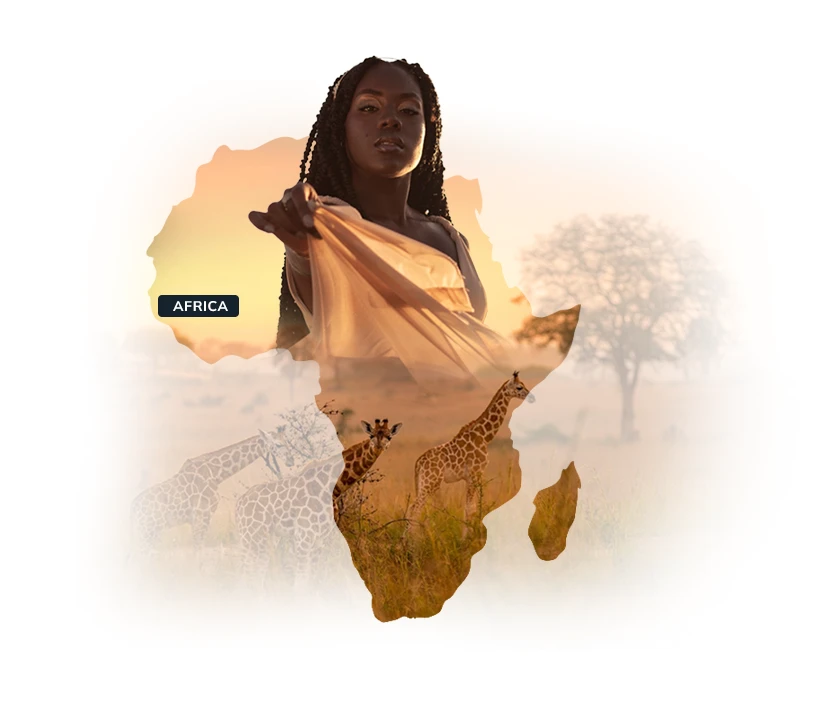
Australasia
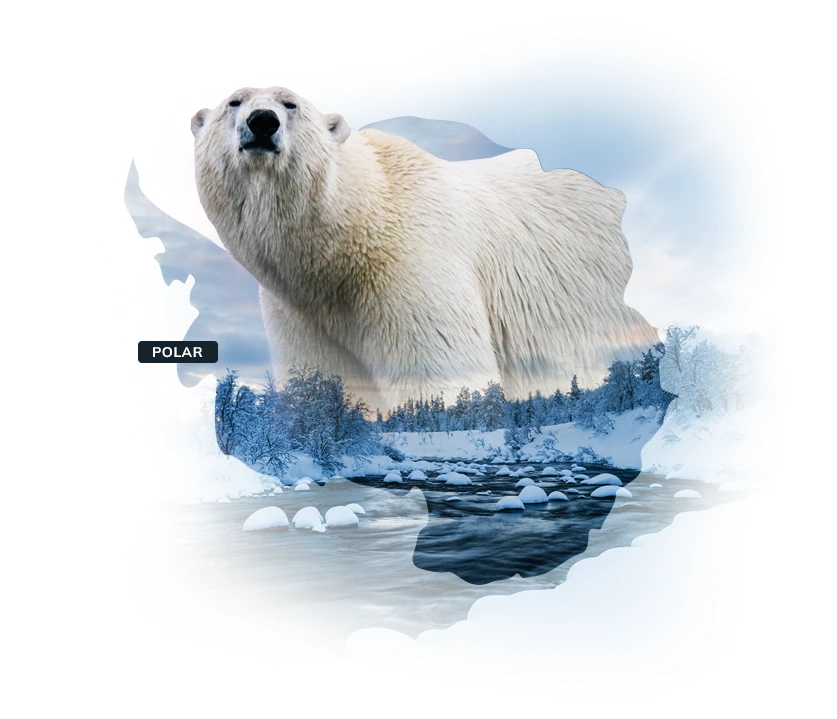
Latin America
South pacific.
- Wayfairer Experience
- Responsible Travel
- Eco by Wayfairer
- Beach Holidays
- Conservation Focused Holidays
- Family Beach Holidays
- Family Holidays with Babies
- Family Holidays
- Family Safari Holidays
- Luxury Holidays
- Safari and Beach Holidays
- Safari Holidays
- Trekking Holidays
- Travel Inspiration Travel Inspiration
- Get in touch +44 (0)117 313 3300 [email protected]
Where to see a Black Leopard in Kenya

Where to find the world's most secretive big cat
Black leopards, ghosts in the darkness, are exceptionally rare, almost impossible to find in the wild. But recently, with thanks to expect guiding and community led conservation, it’s now possible to significantly increase your chances of seeing these beautiful, elusive big cats in their natural habitat in Kenya.
Looking for travel inspiration? Wayfairer trip ideas that will take you to Kenya:
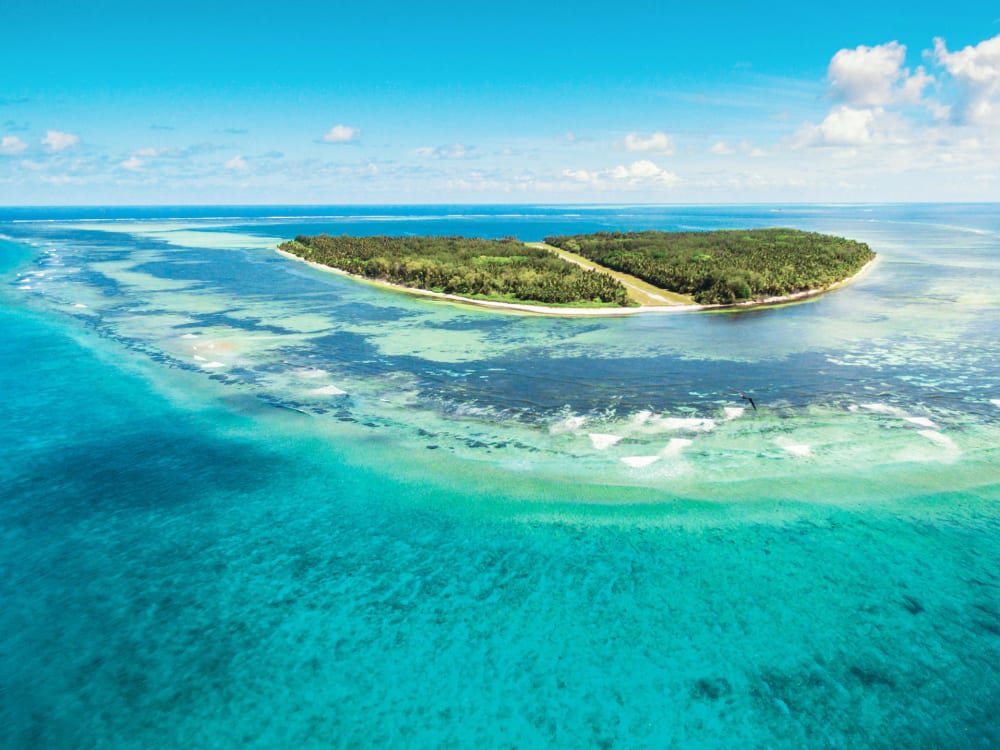
Safari & The Seychelles
An unforgettable safari in Kenya’s iconic Masai Mara followed by a week lounging on a private island in the turquoise waters of the Seychelles.
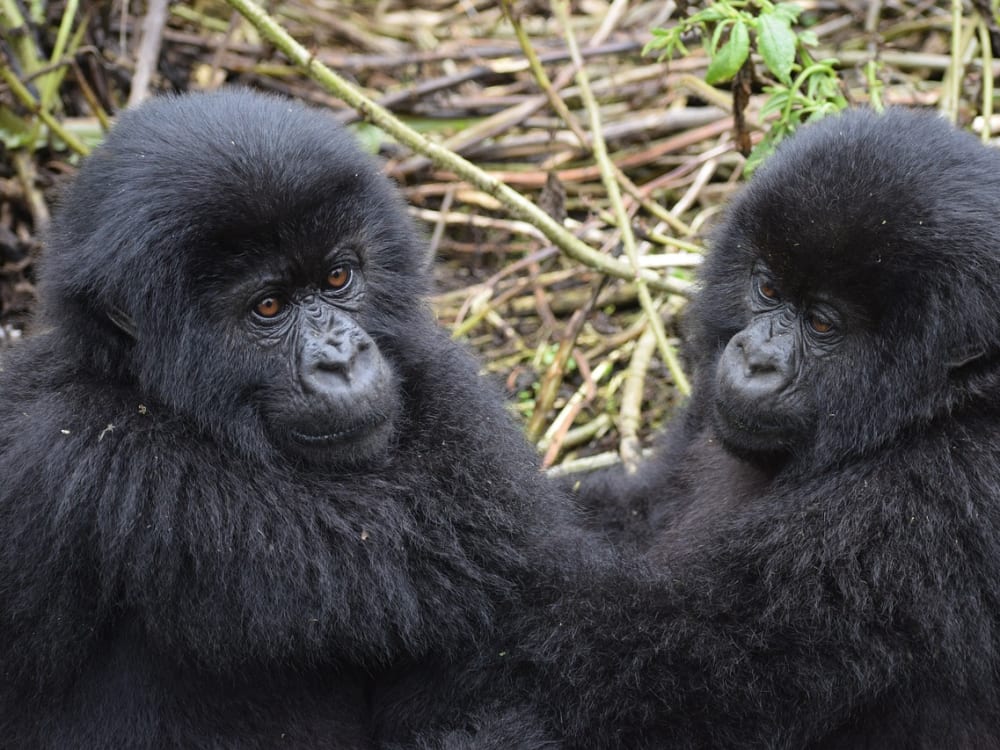
Gorillas, Masai Mara & Zanzibar
Trek to see Mountain Gorillas, enjoy an adventurous wildlife safari and relax on a tropical island
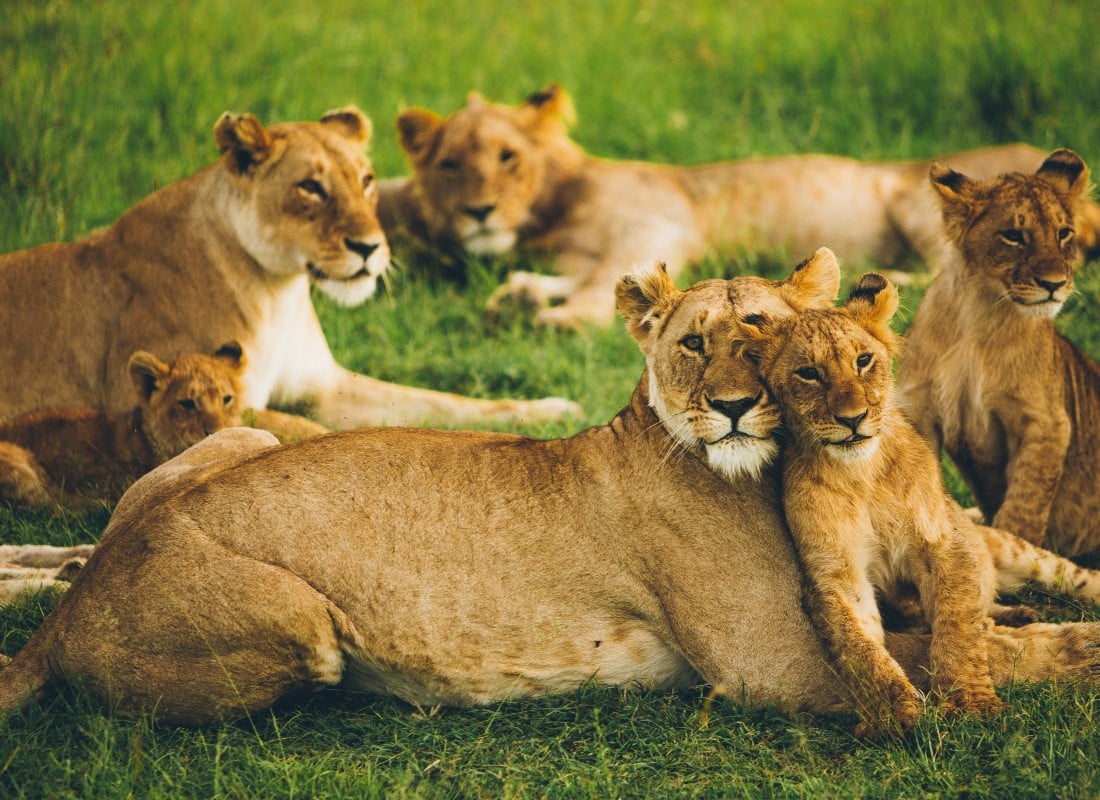
Luxury Kenya & Zanzibar Honeymoon
A romantic tour of Kenya & Zanzibar, featuring luxury accommodation, incredible safaris and a beach paradise
What is a black leopard?
The black leopard, also known as a black panther, is a melanistic variation of the better-known spotty variety, which means they have an excess of black pigmentation that makes their coats much darker. Melanistic leopards still have spots (which aren’t actually spots, but rosettes), but these distinctive markings can be harder to see on the darkest of these leopards, making them appear completely black. It’s unknown how many black panthers there are in the wild (these include melanistic jaguars and melanistic leopards) but sightings have been recorded in Sri Lanka, South Africa, Kenya, Nepal, Thailand, Costa Rica, Panama, Paraguay and a few other destinations.
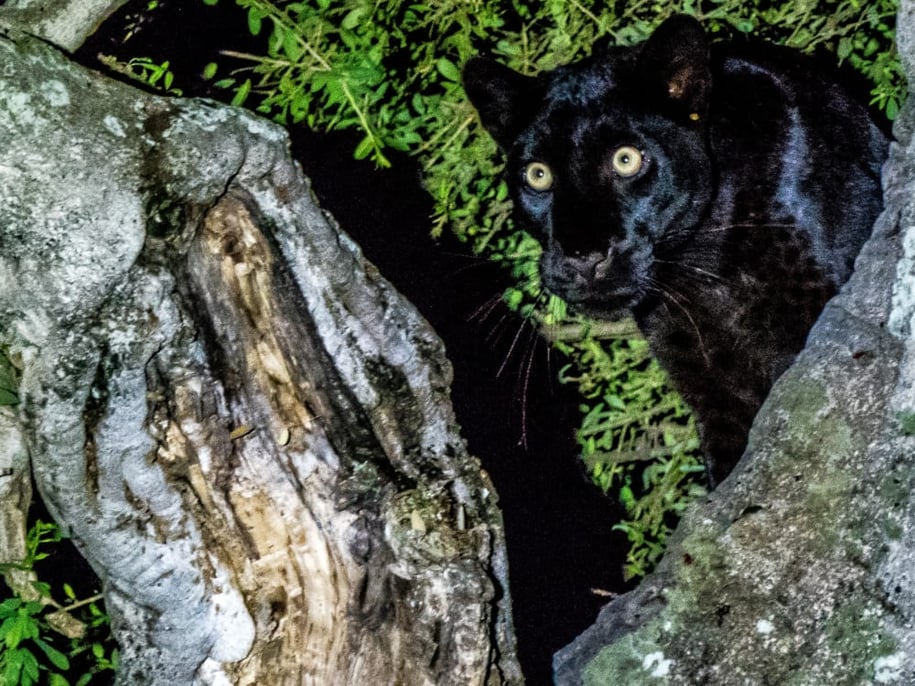
A black leopard in Laikipia, Kenya photographed by Dan Peel
Black leopard sightings in Kenya
In 2019 scientists from the San Diego Zoo confirmed the first sighting of a black leopard in Laikipia , Kenya. Leopards, much like domestic cats, quickly become habituated to their environment and so, over time, this leopard became increasingly comfortable with humans and sightings became a little more frequent. Riding the confirmation of this sighting, award-winning photographer Will Burrard-Lucas dedicated six months to his pursuit of capturing this black leopard and this area soon rose to fame when he published his incredible images.
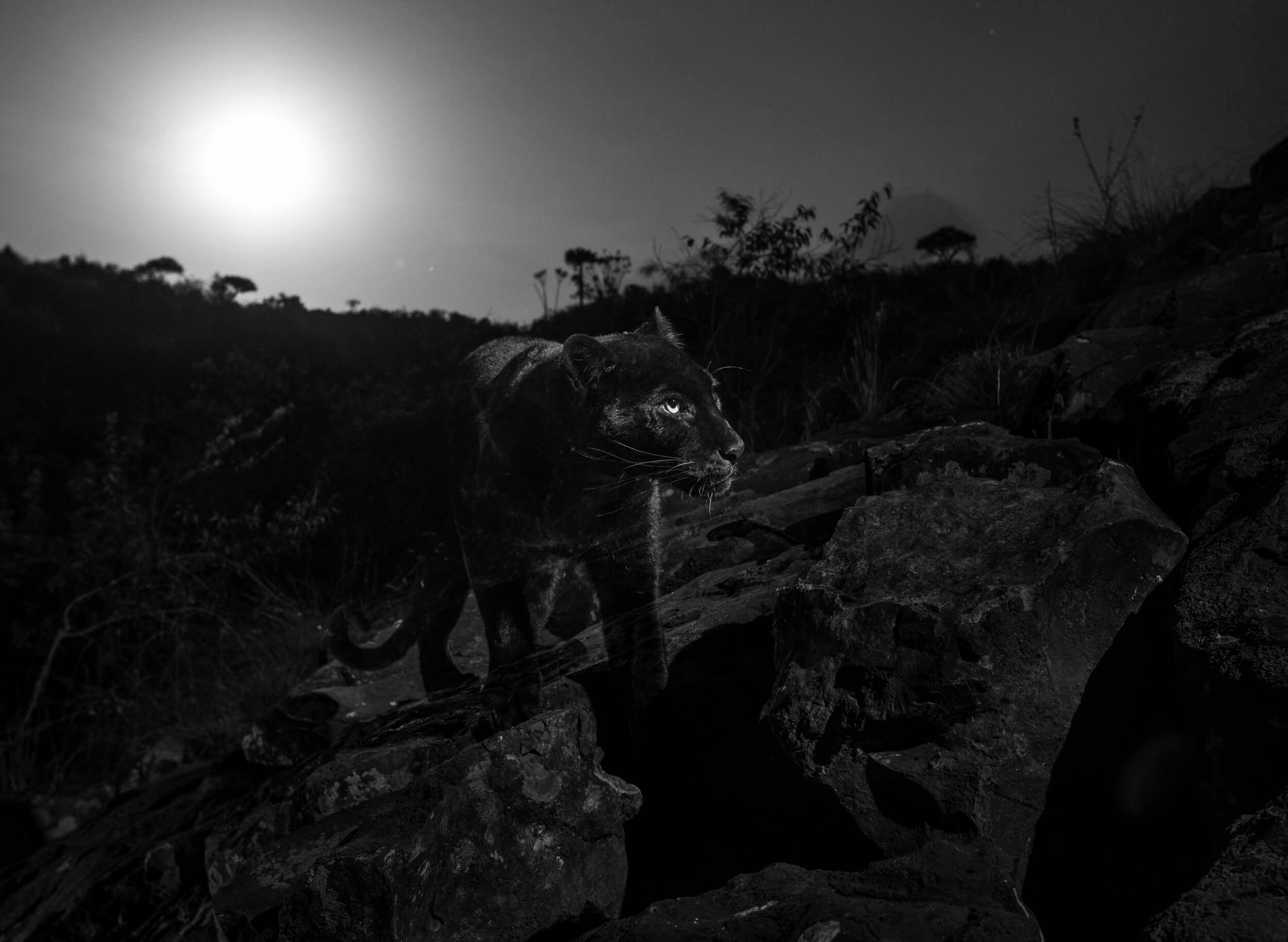
To date, there are now five known black leopards frequenting the Laikipia region of Kenya. At Laikipia Wilderness Camp , a female who has become very used to human settlement has made her home in the rocky outcrops around the camp and she is seen or heard almost daily. Black leopard sightings are now increasing at an astounding rate as these incredible big cats begin to feel more at home in the area. Watch this incredible footage from Will Burrard-Lucas's phone and this , most recent clip from Laikipia Wilderness, of a leopard chasing a black leopard off a kill from a Boscia tree, and it lands just a stone’s throw away from a guest vehicle.
How to see a black leopard in Kenya
Leopard sightings are incredibly rare, and black leopard sightings, until recently, nearly impossible. But to up your chances we recommend a few nights at Laikipia Wilderness Camp, with a private vehicle and guide (exclusive use of a vehicle is vital if you’re dedicated to your search). Laikpia Wilderness Camp is a family-owned, no-fuss bush camp an hour and a half drive from Nanyuki town in Laikipia, central Kenya. Its six tents enjoy uninterrupted wilderness views, open air ensuite bathrooms and a central communal area which has power for charging equipment, a comfortable lounge and dining space. With expert guiding and no off-roading or activity restrictions, Laikipia Wilderness is an ideal destination for anyone looking for an authentic, off-the-beaten-track safari experience. This is also the best place in Kenya to track and photograph African wild dogs on foot! With fewer than 6,000 African wild dogs left in the wild, this experience, together with the chance of seeing the elusive black leopard make it an incredibly unique destination.

Spacious tents at Laikipia Wilderness Camp & Tracking wild dog on foot
Fancy your odds? Get in touch and speak to us about booking your safari to Kenya.
We understand that booking trips, especially adventurous and alternative ones such as this can be intimidating, so get in touch; we can take the stress out of your holiday planning and organise a trip you won’t forget!
More kenya travel inspiration from wayfairer customers and travel specialist.
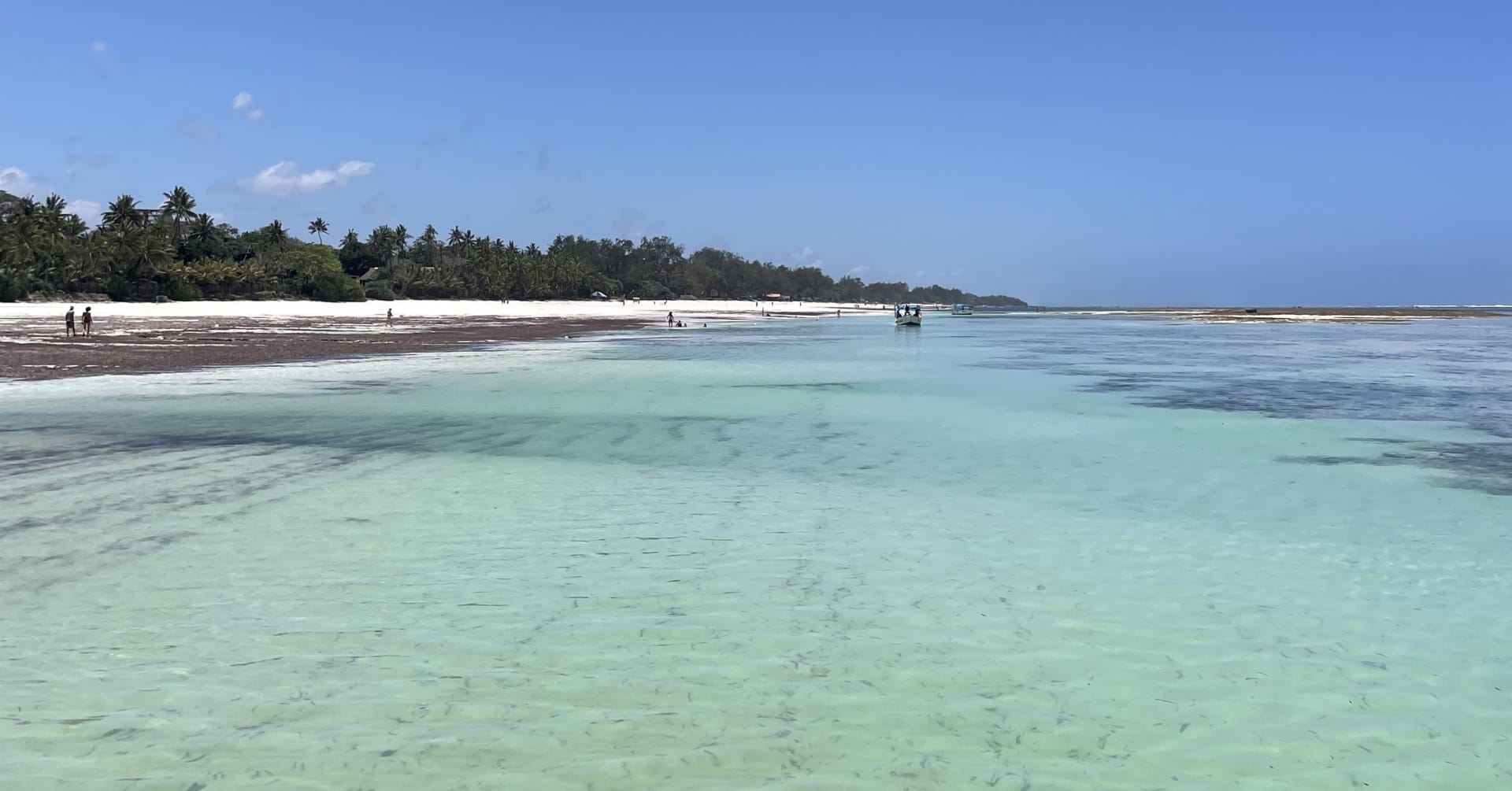
Sustainable Accommodation Spotlight: Kenyan Coast
By Ellie Lewis
November, 30, 2023
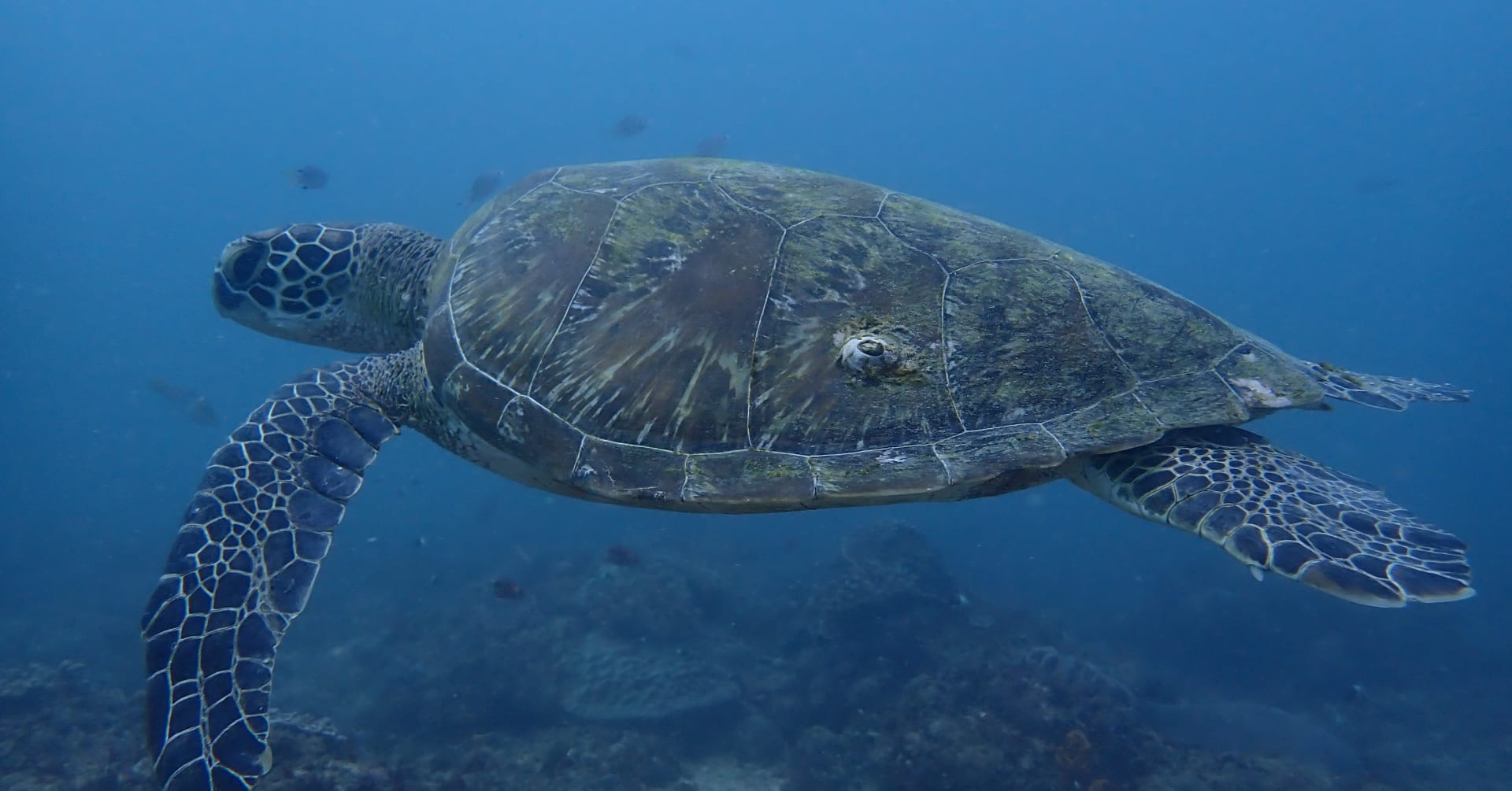
A dive into the Kenyan Coast
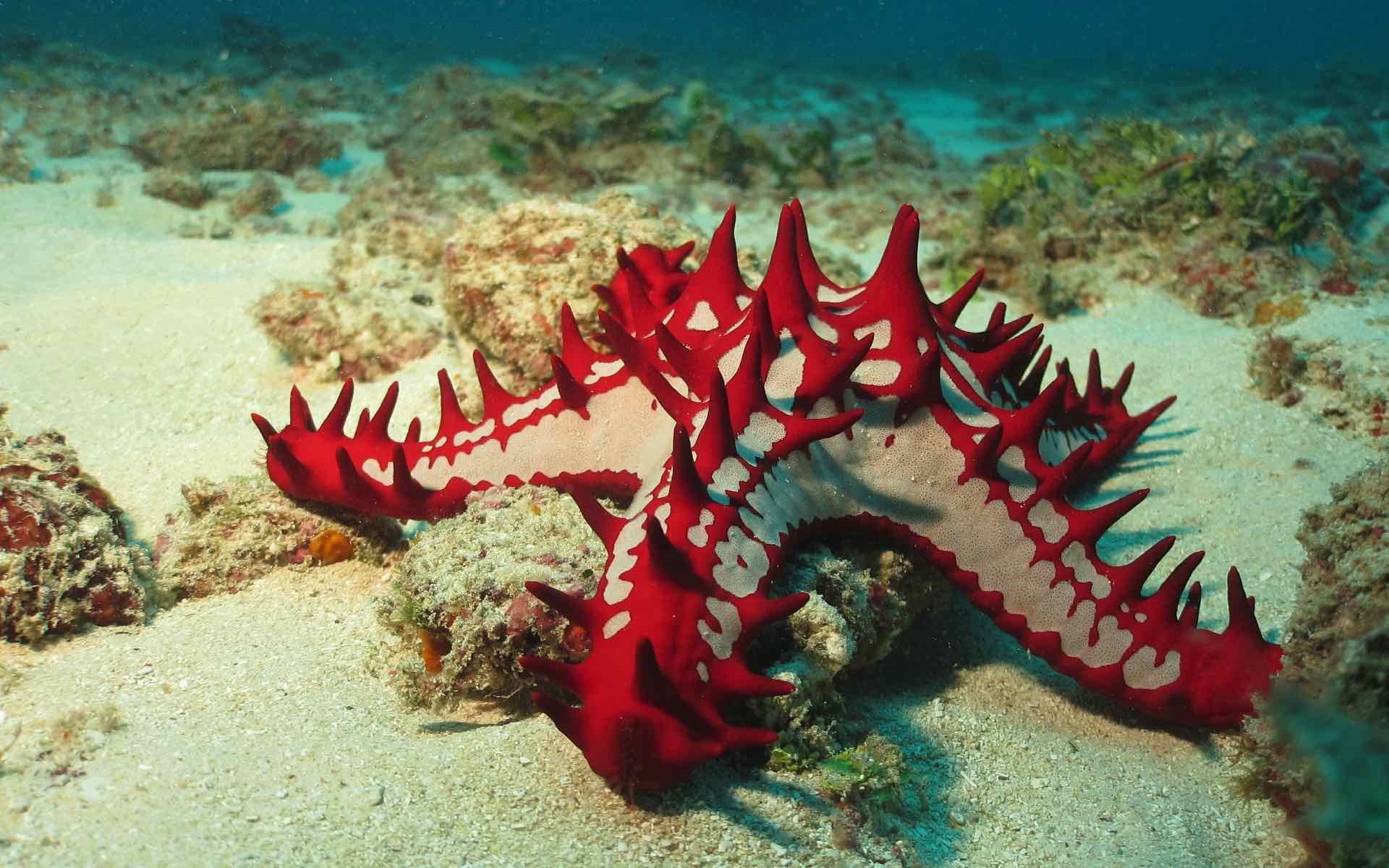
Responsible Travel Guide: Kenya
By Ellie Jones-Perrott
July, 28, 2023
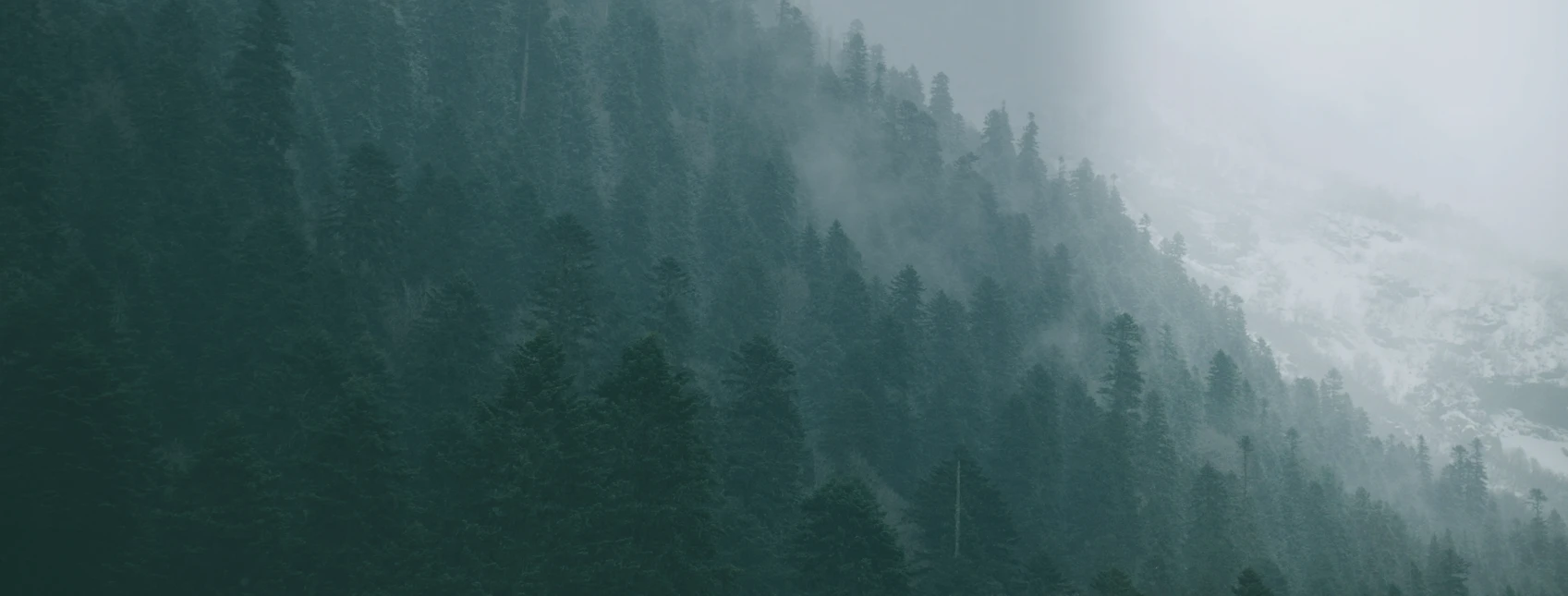
Sign up to our newsletter
For more travel inspiration delivered straight to your inbox just fill in your details here
- +256-708-541-795
- +254-753-029-209
- [email protected]
- +254-759-588-041
- Accommodation

Are there any leopards in Kenya?
Are there any leopards in Kenya? : One of the big five mammals, the leopard is an impressive animal species that safari lovers should not miss seeing on a Kenya safari . Of the four “big cats” in the genus Panthera—the tiger, lion, and jaguar are the other three—the leopard (Panthera pardus) is the brightest, smallest, and strongest climber. Stronger climbing muscles can even attach to specific attachment points on their shoulder blades. Even when they are hunting and feeding, they spend a lot of time in trees. Most of Kenya’s National Parks and Reserves provide wildlife safaris where you can see these magnificent animals. Being the master of camouflage and stealth, the leopard is the most elusive and difficult to spot of the mammals. It is primarily found in various national parks and reserves, including Maasai Mara National Reserve , Tsavo National Parks , Amboseli National Park , and many more. When it comes to using trees as “larders” for prey, leopards are unique among all other big cats. Their long tail, which is typically curled at the white tip, and their stunning rosette patterning serve as distinguishing characteristics. Leopards are classified as nocturnal animals and are primarily active at night.

When going on a Kenya safari , visitors are always rewarded for seeing leopards. However, even though leopards are nocturnal animals, it is usually during the night drives that yield the best views. That being said, the tip for spotting a leopard on a safari in Kenya is the most incredible one because they are widely distributed but adept at hiding. For instance, you may spot one in a tree during the day.
Leopard sightings
Between dusk and dawn on a kenya safari tour is when leopards are most active. Although they are mostly solitary, nocturnal creatures, each one has a home range that overlaps with its neighbours. Males have a wider range, and the ranges of multiple females frequently overlap with those of a single male. Urine and claw markings are used to identify ranges. Travellers can have extremely high chances of seeing leopards in very specific parks and reserves. For instance, in Kenya, visitors can see leopards in the Maasai Mara National Reserve ; here, they are always guaranteed a higher chance of seeing leopards because most guides are familiar with the specific habitats and whereabouts of each cat. While tourists are more likely to see leopards in Maasai Mara National Reserve on night game drives.
While a leopard’s presence is often indicated by the alarm calls of its prey, such as impala, baboons, guinea fowl, and others, tourists on a Kenya safari are always fortunate to have many opportunities to spot the leopards while viewing in almost every tree located in the park or reserve. When tourists go on a Kenya safari , they are advised to spot the leopards in the trees that surround the national parks and reserves.
Though they are best observed in savannah and woodland settings, leopards are most frequently seen in national parks with mountains and rain forests. They can be very territorial and frequently reappear in the same locations, such as Maasai Mara National Reserve , Tsavo National Parks , and numerous others.
Even though leopards are nocturnal animals, tourists who participate in night game drives during their Kenya safari have a better chance of seeing them. During the night game drive, tourists typically use torches to clearly spot the leopards, providing the best safari experience in Kenya’s various national parks and reserves.
On a Kenya safari, you can typically find leopards resting among the sloping trunks of the large trees along the tracks designed specifically for game viewing in the Maasai Mara National Reserve . The secret to finding leopards in the reserve is to look for them among the tall trees rather than on the ground.
Black leopard
The melanistic black leopard, commonly known as the black panther, is a variant of the more common spotty leopard. This suggests that they have an excess of black pigmentation, which is why their coats are much darker. Although melanistic leopards still have spots, it may be harder to see these distinctive patterns on the darkest of these animals, creating the impression that they are completely black. Black panthers, which also include melanistic jaguars and melanistic leopards, are thought to exist in small numbers in the wild; however, sightings have been documented in a variety of locations, including Costa Rica, Panama, Paraguay, Kenya, Nepal, Sri Lanka, and a few more countries.
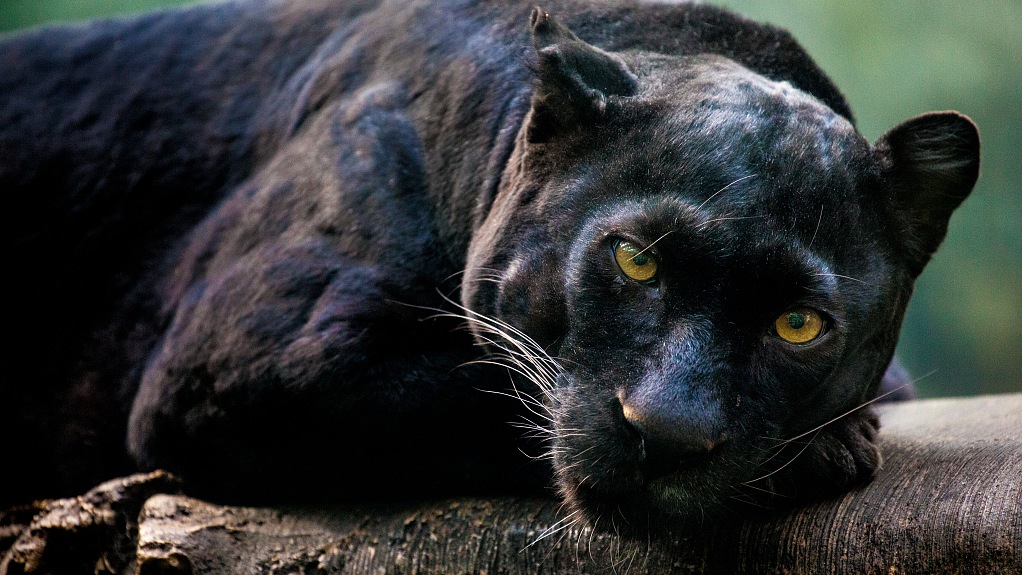
After San Diego Zoo biologists officially confirmed the first black leopard sighting in Laikipia, Kenya, in 2019, safaris to Kenya saw a sharp increase in popularity. As time passed, this leopard grew more accustomed to people and sightings rose slightly because, like domestic cats, leopards quickly adapt to their surroundings. Following confirmation of this sighting, award-winning photographer Will Burrard-Lucas spent six months attempting to capture a picture of the black leopard; once he published his breath taking images, the area rapidly garnered notoriety.
To date, the Laikipia region of Kenya has been reported to be home to five black leopards. At Laikipia Wilderness Camp, a female leopard that has become accustomed to human habitation has made herself at home among the rocky outcrops and is often heard or seen by visitors. Black leopard sightings are currently increasing at an astounding rate as these incredible large cats adjust to their surroundings.
Black leopard sightings were previously virtually unheard of, and leopard sightings are extremely rare. To improve your odds, though, we suggest staying a few nights at Laikipia Wilderness Camp with a private vehicle and guide (if you’re serious about your hunt, you’ll need exclusive usage of a vehicle). Situated in the heart of Kenya, approximately 1.5 hours’ drive from Nanyuki town, Laikipia Wilderness Camp is a basic, family-run jungle camp. The six tents feature open-air bathrooms, electricity outlets for charging gadgets, a cosy lounge, and an eating area, all with unhindered views of the surrounding landscape. For those seeking an authentic, off-the-beaten-path Kenya safari experience, Laikipia Wilderness is the ideal destination due to its unrestricted off-roading and activity options, as well as the availability of knowledgeable guides.
Furthermore, this is the best place in Kenya to learn about tracking and photographing African wild dogs. This experience, along with the potential to see the elusive black leopard, makes it a really unique place. Less than 6,000 wild African canines remain in existence today.


Sombre Eid al-Fitr celebrations in war-torn Gaza

British man runs length of Africa in 352 days

Australia's ex-foreign minister appointed UN special envoy to Myanmar

Alaska students protest governor's veto of education package
Lions, leopards, and landscapes: kenya jungle safari escapade.
Kenya, the country of excitement and thrills, has a lot to offer. Whether you want to see rich wildlife, and stunning landscapes or enjoy the culture, Kenya is the go-to destination. A Kenya safari is bound to make up for an unforgettable vacation. With Kenya tour packages, you can explore one of the greatest countries of the African continent.
Whether you are a first-time visitor to Kenya or a fifth, the country manages to surprise you with its ever-changing beauty. Kenyan national parks and reserves, renowned for their diverse ecosystems, safeguard various wildlife, including the famous Big Five Kenya and birdlife species. These parks and reserves are extremely stunning, encompassing landscapes filled with golden-hued grasslands, iconic savannahs, and short bushy trees. Stepping into these parks feels like you've entered a scene appearing straight out of a film.
If you're looking to shortlist some of the Kenyan parks and reserves for your next holiday, here are some suggestions:
Amboseli National Park
Situated in Southern Kenya, Amboseli is a picturesque park that allows one to see the grand Mount Kilimanjaro in the backdrop. It doesn't come as a surprise that the park is popular among photographers and is usually referred to as a paradise for wildlife enthusiasts.
Over 900 African elephants call Amboseli their home, thanks to the Amboseli Trust for Elephants that strive to conserve this species. It is one of the best parks to view elephants from a closer distance.
Furthermore, big cat species like lions and cheetahs as well as plain animals like wildebeest, zebras, and gazelles are in abundance. Around 600 bird species including migratory can be seen in the park. Amboseli also allows you to spot the African Big Five, except for the rhino. Most of the animals are found near Lake Amboseli during the dry season.
Masai Mara National Park
If you're looking for a luxurious safari, then Masai Mara is ideal for you. Endless savannahs, baobab trees, and towering escarpments is the typical landscape of the Mara. Exploring further, the unspoiled nature of the Mara gives way to riverine forests and hills.
With such diverse flora and fauna, wildlife is found in abundance. The high densities of animal species allow you to witness intense predator-prey interaction frequently. Along with the Big Five, the park is home to cheetahs, giraffes, hippos, thousands of wildebeest, and zebras among other plain animals.
Masai Mara National Park hosts the Great Migration annually. It is the only place, besides Tanzania's Serengeti, where you can experience nature at its finest. This journey is filled with challenges such as lions stalking wildebeest herds and deadly Nile crocodiles preying on them at the Mara River crossing. The event is thrilling and is best seen in Kenya's Masai Mara.
Besides game drives, one can also experience hot air balloon rides, birdwatching, walking tours, bush picnics, and much more. If you visit Kenya and miss out on Masai Mara, then your trip surely remains incomplete.
Samburu National Park
One of the lesser-known but equally lush parks of Kenya is the Samburu National Park. Located in Northern Kenya, this premier game reserve is characterized by isolated yet pristine wilderness such as palm groves, acacia woodlands, riverine forests, and rugged mountains. With such varied ecosystems, different species of wildlife and birdlife continue to flourish in Samburu.
Situated on the banks of the river Ewaso Ng'iro, the park is home to a unique group of animals called the 'Samburu Special Five'. This consists of Grevy's Zebra, Somali Ostrich, Beisa Onyx, Gerenuk, and Reticulated Giraffe, an unusual collection of animals that are not found in any of the southern reserves in Kenya. Samburu is also home to huge herds of elephants, big cats, endangered wild dogs, and more. Over 450 bird species are also found in Samburu.
Besides game drives, this park allows biking safaris, horseback safaris and even walking excursions. Visits to the traditional Samburu villages to meet up with the indigenous Samburu tribe is a fascinating experience.
Meru National Park
Meru is a remote national park, showcasing its unspoiled and rugged wilderness. In comparison to other national parks, Meru is relatively less visited. However, its landscapes are alive with thirteen meandering rivers, beautiful mountains, woodlands, and vast plains. Undoubtedly, it flaunts breathtaking sceneries one can stumble upon. Just 4 hours away from the city of Nairobi, this park is ideal for those wanting to get away from the tourist crowd and enjoy quiet safaris.
Although small in size, the park makes up for it with its diverse wildlife. Here, you can witness the Big Five, including various herbivore and predator species. Meru also has a rhino sanctuary which is home to both black and white rhinos. With over 400 bird species, most are found near the river banks and streams.
Meru National Park offers a plethora of activities such as game viewing, camping, bush picnics and even hiking. You can also visit the Adamson waterfall inside the park while going on a nature walk.
Nairobi National Park
Nairobi National Park is the world's only wildlife park to be situated in the major capital. It is just a short drive away from Nairobi's Central Business District. So, instead of landing in the city and driving hours to get to a national park, you can easily kickstart your safari adventures from Nairobi itself.
Although located in an unusual location, Nairobi National Park offers amazing game viewing opportunities. The park measures around 117 square kilometers, mostly dominated by acacia shrubs and open grasslands. However, instead of the usual mountains, one can capture the animals against the backdrop of skyscrapers and buildings in Nairobi National Park.
Roaming in their natural habitats of the park are leopards, lions, cheetahs, wildebeest, zebras, hyenas, hippos, and many more animal species. Along with this, an array of birdlife is also found in the park. Nairobi National Park shares its boundaries with the neighboring Kitengala plains which allow animals to freely migrate in different areas.
Nairobi National Park provides many activities to its visitors such as exploring walking trails, and visiting attractions like the Ivory burning site monument, the rhino sanctuary, and various picnic spots.
These are just few of the places you can choose for your Kenya safari itinerary. Go ahead and book your Kenya tour packages today for the ultimate African safari experience.
Source: Busines NewsWire
Busines NewsWire 15th March 2024, 02:12 GMT+11
Read This Next
Big News Network
- Big News Network News Agency
- Midwest Radio Network
- Mainstream Media
BIG NEWS NETWORK.COM
- Contact & Support
- Terms & Conditions
PRODUCTS & SERVICES
- News Releases
Copyright © 1998-2024 Big News Network All rights reserved. ISSN : 2616-6917

COMMENTS
8 days • 3 locations. NAIROBI AIRPORT TO NAIROBI AIRPORT. A example of a luxury Kenyan safari, starting at the iconic Giraffe Manor before fabulous stays on the spectacular Solio Reserve and Sala's Camp in a remote corner of the Maasai Mara. US$11,720 - US$16,510 per person.
The best places to see leopards. Botswana: Botswana is excellent for spotting leopards, and a testament to the leopard's adaptability - leopards are commonly seen in watery habitats like Chobe National Park and the Okavango Delta, but also in the desert-like Central Kalahari Game Reserve (CKGR). Kenya: Kenya 's parks are prime leopard ...
Among others locations to note where you can see Leopards in Kenya include Marsabit National Park, Nasolot National Park, Mwingi National Park, Kora National Park, Lewa Wildife Conservancy, Meru National Park, Mwea National Reserve, Bisanadi National Park and Simba Hills National Park among others. Our Popular Kenya Safari packages that include ...
Masai Mara, a Kenyan national park, is one of the best places in the world to go on safari to see lions, leopards, and cheetahs in the wild.
Track and see an extremely rare beauty on the Black Leopard Safari. After years of rumours and exaggerated tales, there is finally a chance to see a wild Black Leopard! Also known as a Black Panther, this magnificent animal is bring seen on a regular basis, giving you a very realistic opportunity to see and photograph a wild Black Leopard.
The verdant floodplains, oxbow lakes, and riverine forests along the Luangwa River - the region's lifeblood - are perfect pardine territory. Guests are regularly treated to multiple leopard sightings in a day. 3. Moremi Game Reserve, Botswana. The wetlands, grasslands, and thickets of the Okavango Delta teem with wildlife and predators ...
Welcome to Soroi Leopards Lair, your gateway to an authentic and intimate African safari experience. Nestled within the heart of the Lumo Conservancy, close to the majestic Taita Hills and expansive Tsavo, our lodge promises a remarkable journey into the untamed wilderness of Kenya.Our intimate lodge on the same hill as the renowned Soroi Lions Bluff brings you closer to nature's grandeur ...
Overview. When planning a Kenya Jungle Safari, you are likely to come across the renowned Big Five animals that are a must-see. The Big Five, including lions, leopards, elephants, African buffalo, and rhinoceros, are the classic wildlife sightings during a safari adventure. Opting for Big Five Kenya safaris is a top-notch choice.
Book your Kenyan safari today and be prepared for the magic of spotting the elusive leopard in Masai Mara! Contact Jossec safaris and Let us help you plan the Kenya safari of your dreams call us on +254727103818 to speak to one of our team. Instagram. There is an area located in Maasai Mara well named as Leopard Gorge.
Here is our ultimate guide to spotting African leopards on your safari. 1. Choose the Right Time of Year. One of the most important factors in spotting African leopards on your safari is choosing the right time of year. African leopards are most active at dawn and dusk, so you will want to plan your safari for these times.
Guide Hamprey Mweterwa (center on white horse) leads a group on a safari in Kenya's Borana Conservancy. Visitors to Borana might encounter zebras, leopards, impalas, elephants, and the area's ...
Leopard sightings in Kenya : Leopard sightings are among the greatest Kenya safari rewards because they are among the most challenging of the Kenya big five safari and hard to locate in the wilds of Africa. Additionally, this cat is absolutely stunning and the picture of animal beauty. Leopards are experts at blending in with their surroundings, so many leopards will watch you pass without you ...
Leopard Rock Lodge is a fully refurbished upmarket Safari Lodge built on a 3.5Km river frontage, in the last remaining park devoted to wilderness Meru National park, along the Equator 310km from Nairobi, North East of Mt Kenya. Meru National Park has a wide variety of Landscapes and Habitat around the Equator.
Masai Mara National Reserve. The Masai Mara National Reserve is undoubtedly one of the most famous safari destinations in Kenya. It is home to an incredible concentration of wildlife, including the renowned Big Five - lions, elephants, buffalos, leopards, and rhinos. The annual wildebeest migration, where millions of wildebeest and zebras ...
The Kenya leopard can be found throughout the country. Parks where he can be spotted are Masai Mara National and Samburu Reserve. ... An ideal situation for the safari photographer. The number of Kenyan leopards also increases dramatically during the annual wildebeest migration between July and September. With more than a million wildebeest on ...
Melanistic leopards, or black leopards, incorrectly referred to as "black panthers" are rare but not unheard of in Kenya's Laikipia County. In 2019, a wildlife photographer Will Burrard-Lucas captured rare images of a melanistic leopard in Laikipia County, which received widespread media attention. The young male leopard was nicknamed ...
3. Tsavo National Park. Made up of two national parks, Tsavo East National Park and Tsavo West National Park, Tsavo in southwest Kenya is best known for its large elephant herds and impressive semi-arid landscape. Tsavo East is one of Kenya's oldest parks and, combined with Tsavo West, comprises Kenya's largest national park.
Leopards: While elusive, leopards can be found in parks like Maasai Mara and Samburu, rewarding patient safari-goers with glimpses of their unparalleled beauty. African Buffalo : These formidable beasts can be observed in several parks, including Nairobi National Park, showcasing their strength and resilience in the African wilderness.
The incredible black panther of Laikipia. by Dan Peel. Thursday, 7 December 2023. Seeing a black leopard in the wild is an extraordinary feat. A wild encounter that dreams are made of. But tales of this magnificent creature reverberate from a small, wild county in Kenya. Dan Peel has spent hours with this rare black panther in Laikipia.
8 May 2024 - 15 May 2024. ORYX is proud to present you with a wildlife photo safari to the Laikipia region of Kenya, as we embark on an exciting journey to photograph one of the most special big cats in Africa - the gorgeous Black Leopard. Until recently, the chances of spotting a black leopard in the wild in Africa have been close to ...
Black leopard sightings in Kenya. In 2019 scientists from the San Diego Zoo confirmed the first sighting of a black leopard in Laikipia, Kenya. Leopards, much like domestic cats, quickly become habituated to their environment and so, over time, this leopard became increasingly comfortable with humans and sightings became a little more frequent.
Black Leopard. After San Diego Zoo biologists officially confirmed the first black leopard sighting in Laikipia, Kenya, in 2019, safaris to Kenya saw a sharp increase in popularity. As time passed, this leopard grew more accustomed to people and sightings rose slightly because, like domestic cats, leopards quickly adapt to their surroundings.
Lions, Leopards, and Landscapes: Kenya Jungle Safari Escapade. Busines NewsWire. 15th March 2024, 02:12 GMT+11. Kenya, the country of excitement and thrills, has a lot to offer. Whether you want to see rich wildlife, and stunning landscapes or enjoy the culture, Kenya is the go-to destination. A Kenya safari is bound to make up for an ...